VOLUME II BRINGING THE WORLD TO THE MIDDLE EAST, AND THE MIDDLE EAST TO THE WORLD





Visit us online and subscribe to our newsletter
Dream destinations, relevant travel news, insider tips, where to stay, what to pack, where to eat and more for the discerning traveller with impeccable taste
editor-compiled guides, I realised on a recent bout of travels – that included old favourites, along with some new fnds – that you can never really 100% trust them. In Rome, something described as ‘of tourists’ radar’ was filled with loud groups with backpacks and had a queue out the door. On the Greek island of Hydra, I re-arranged all my well-researched evening plans after hearing a glamorous local shop assistant divulge her favourite island spots to a customer. And luckily so, as we had the best night of our trip. It’s this summer I realised if you want something great, you have to ask a local, people who really know a destination (top tip: photographers, bartenders and wait staf usually give the best recommendations). At NEAR+FAR, we work with locals and destination experts across the world to bring you the very best and more honest and authentic advice. This is why, on page 15, we bring you a collection of personal stories from the Middle East, where top photographers and travel fgures share somewhere that means a lot to them, from an African safari lodge in the UAE to a Baghdad native’s re-discovering of his city’s through a cultural lens.
We’ve focused on personal storytelling a lot in this issue. Somewhere I’ve grown to know fondly in the past few years is Courchevel 1850, an absolute showstopper of a ski resort and the place to get maximum winter wonderland vibes, whether you partake in slope action or not. Dining, shopping, non-ski-themed wintery pursuits are impeccable if you don’t. What to wear is a huge part of travel, so we’ve injected a lot more fashion and frivolity into Volume II. There are also some new explorations, like a frst-time trip to Sri Lanka’s south coast (and how to do it properly) and checking into what is (perhaps) central London’s most exclusive and smallest luxury hotel – The Arts Club (would-be members will delight in having an honourary membership during their stay). We couldn’t print a regional publication without mentioning the humanitarian crisis and tragedy hitting our region, so Lebanon had to be on our cover – a nostalgic moment in time immortalised at Beirut’s Sporting Club Beach. Our other cover star is the 25hours Hotel One Central, still Dubai’s coolest hotel. Enjoy the issue.
ISABELLA CRADDOCK, FOUNDER + EDITOR
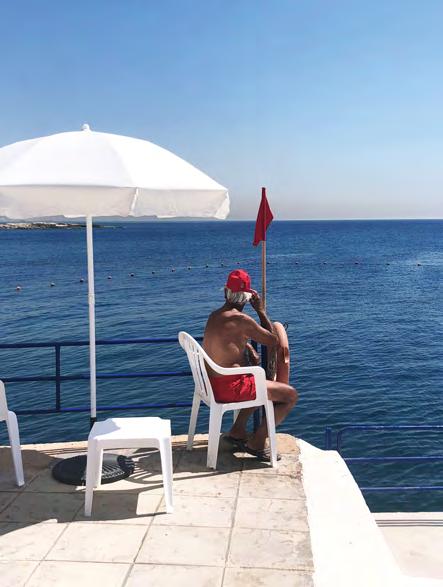
Sporting Club Beach: built in the ‘60s in the heart of Beirut. ‘Its worn concrete platforms, plastic chairs and faded umbrellas bring together a mix of people, all soaking up the unpretentious charm that contrasts with Lebanon’s newer beach resorts: a nostalgic reminder of old Beirut,’ says photographer, Yasmina Boustani. To help the people of Lebanon, visit beitelbaraka.net

25hours Hotel One Central: Dubai’s coolest hotel and an authentic and soulful hideaway in high-gloss Dubai. The hotel brings a dose of Euro-cool, with cheeky slogans, co-working spaces, killer cocktail bars, fashion pop ups, art installations and more, creating a thriving community in the heart of the city.
FOUNDER+EDITOR Isabella Craddock
CONTRIBUTING ART EDITOR Athina Symeonidou
CONTRIBUTORS
Ahmad Al-Dabagh, Jamel Ben Saidane, Yasmina Boustani, Julia Caira, Odette Campbell, Lavinia Cernau, Natalie Chaban, Asran Mohamed, Max Muench, Elie Obeid
GET IN TOUCH
EDITORIAL : isabella@nearfarmag.com
ADVERTISING : advertising@nearfarmag.com

Read more on page 104
4
What to Pack
Stylish fnds for both home and away: from Hermès beach to chic Chanel ski
8
Art of the Islamic World
A thousand years of carpets, ceramics, manuscripts and more is dazzling Christie’s in Dubai and London
15
My Middle East
9 personal tales of beloved regional spots
58
Up in the Air
A stealth-wealth ski chalet in the ultimate winter wonderland
67
On the Piste Slope fashion 24/25 is a fabulous fusion of future-thinking and iconic heritage





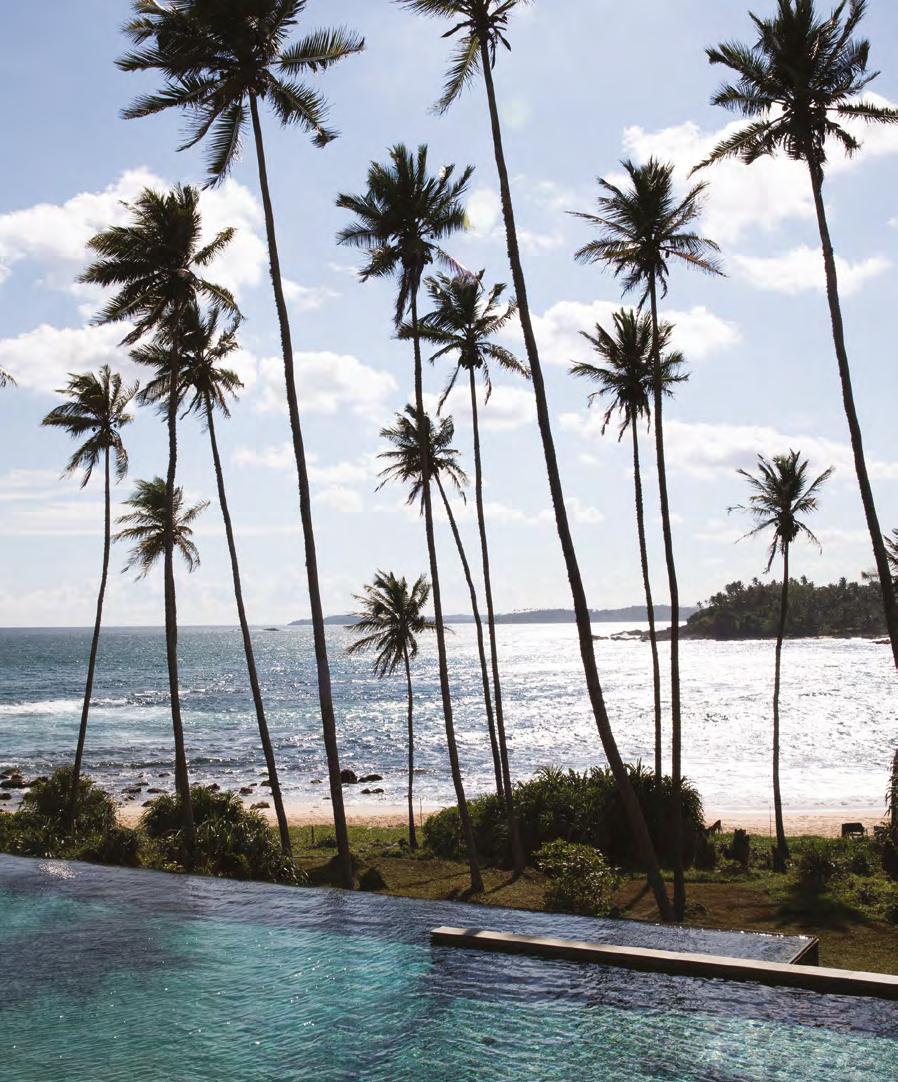
A Roman Holiday
The enduring allure of the Eternal City and its impeccable hotels 84
A Tale of Two Trips
Sri Lanka’s south coast is the ultimate cultural and beach escape
How Riyadh is transforming into a luminous open-air gallery 74
The Address (Perhaps) Central London’s smallest and most exclusive hotel
100
The Wild Coast Malaysia’s most exciting beach development and family getaway
104
Cultural Moment
Hermès FW24 Objets, Maison and Beach collections have everything to see you through a stylish and sunny season in the GCC, and beyond...

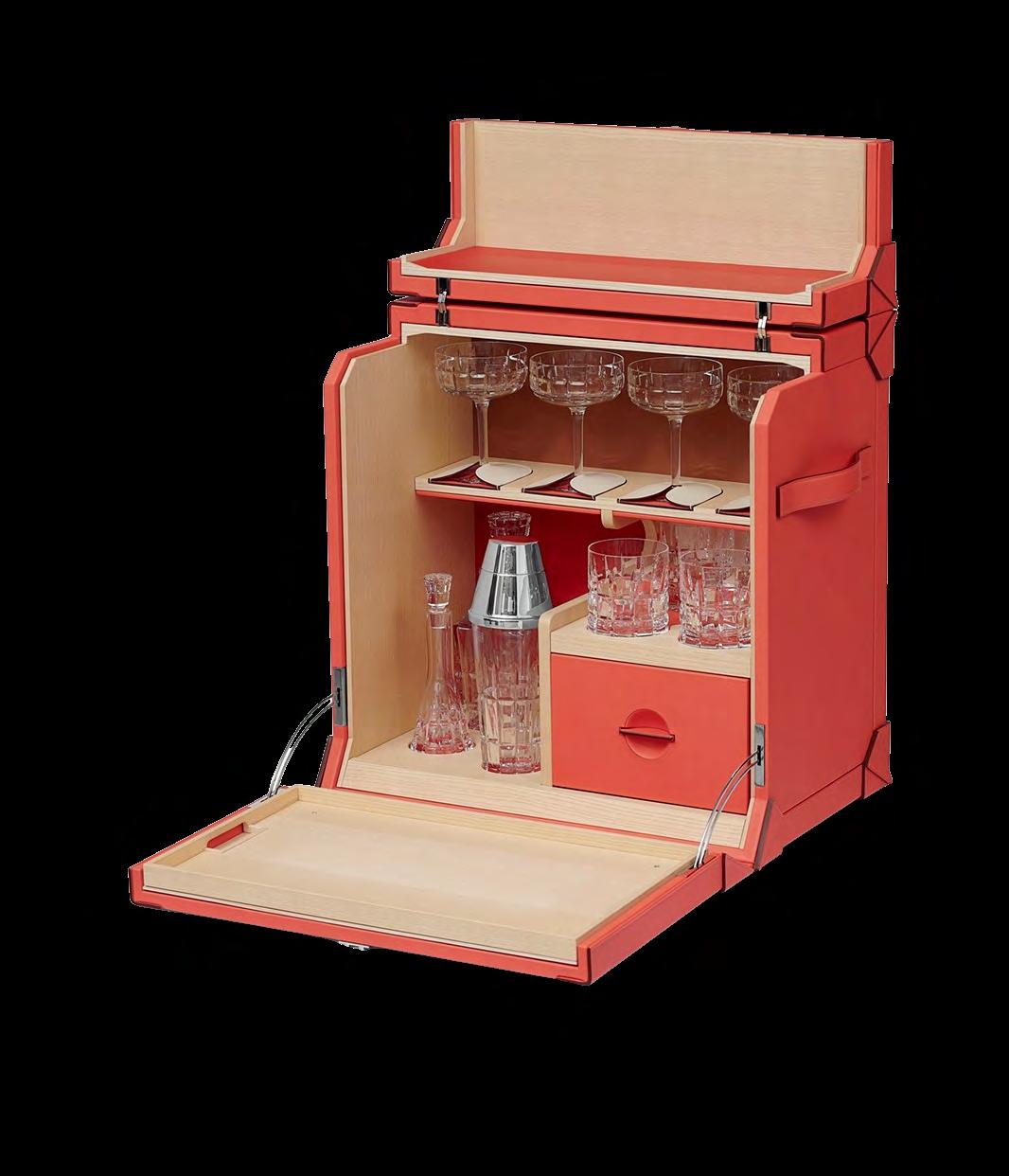
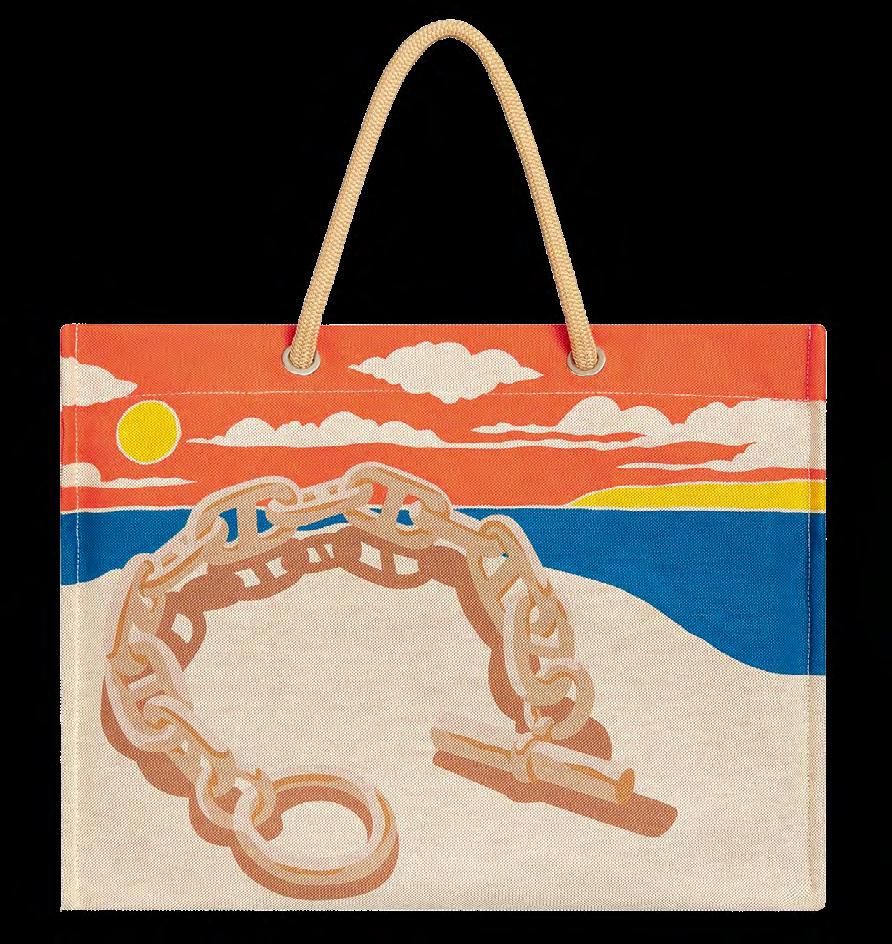
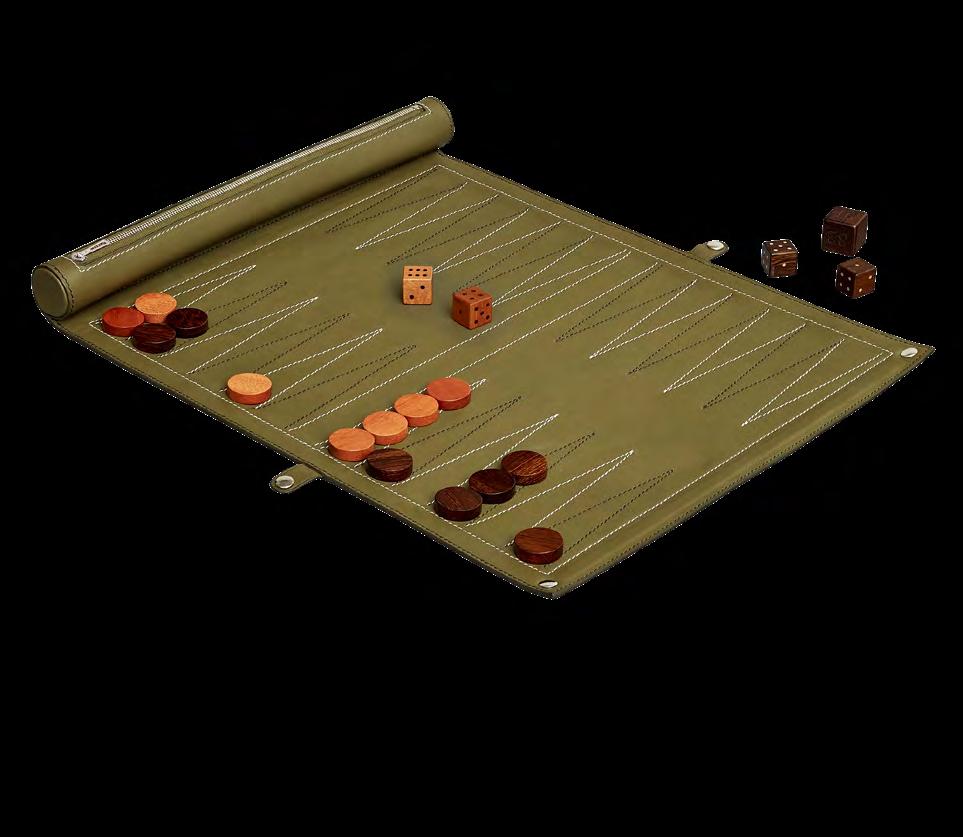
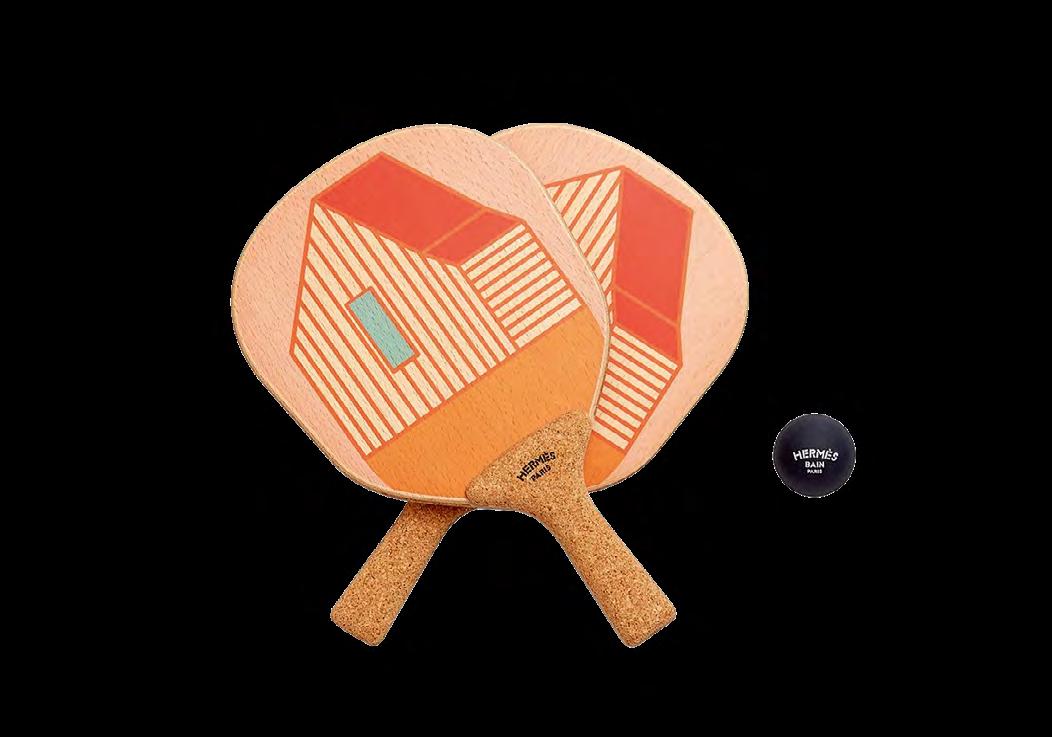







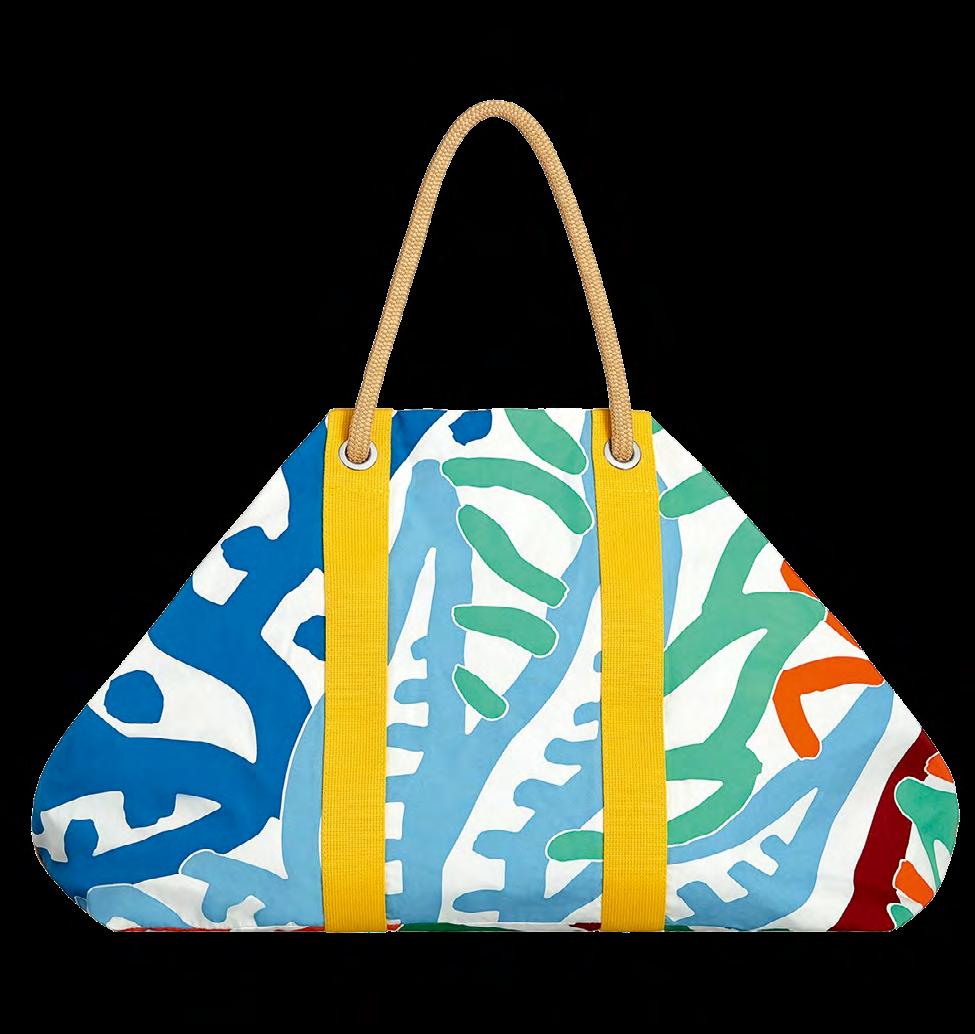



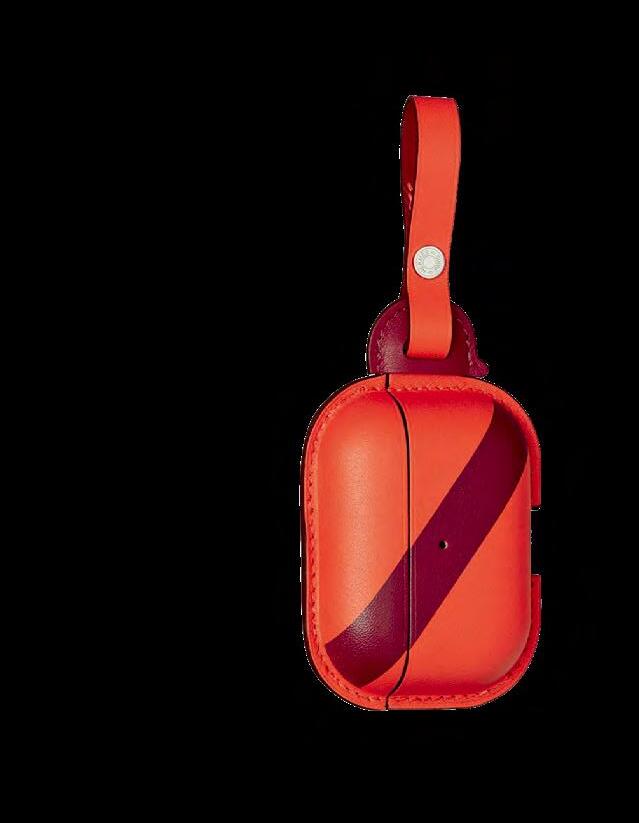

farChanel’s 2024/25 Coco Neige collection, shot by Juergen Teller in Gabrielle Chanel’s Paris apartment, fuses the technicity of winter sportswear with a casual aesthetic inspired by the 1970s, with trompe-l’œil technical fabrics and sophisticated textures
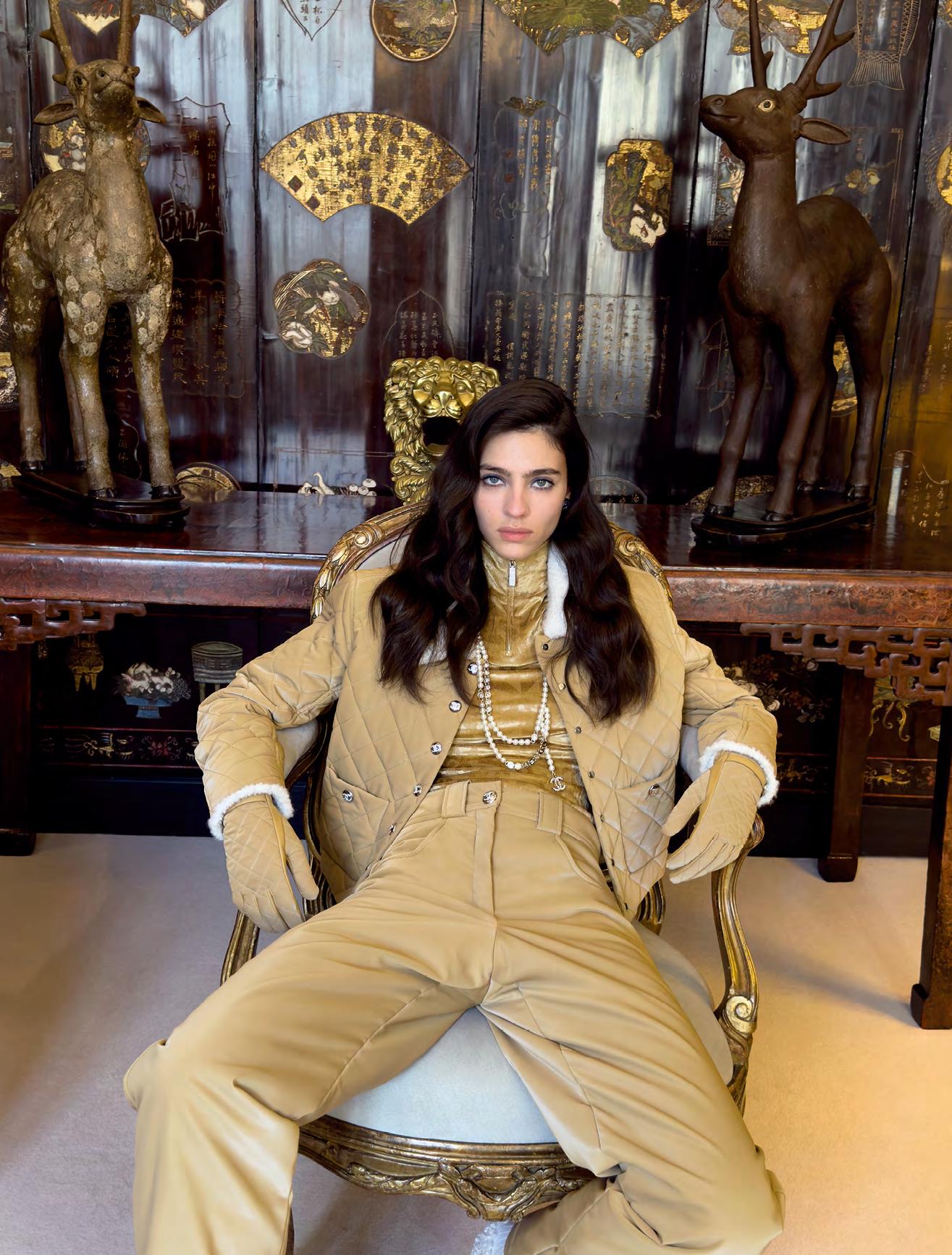






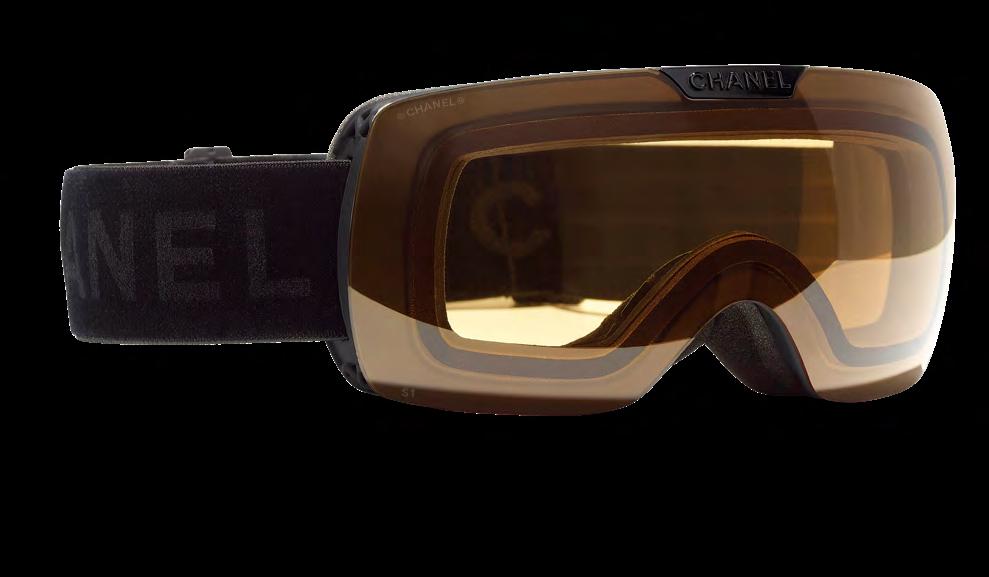



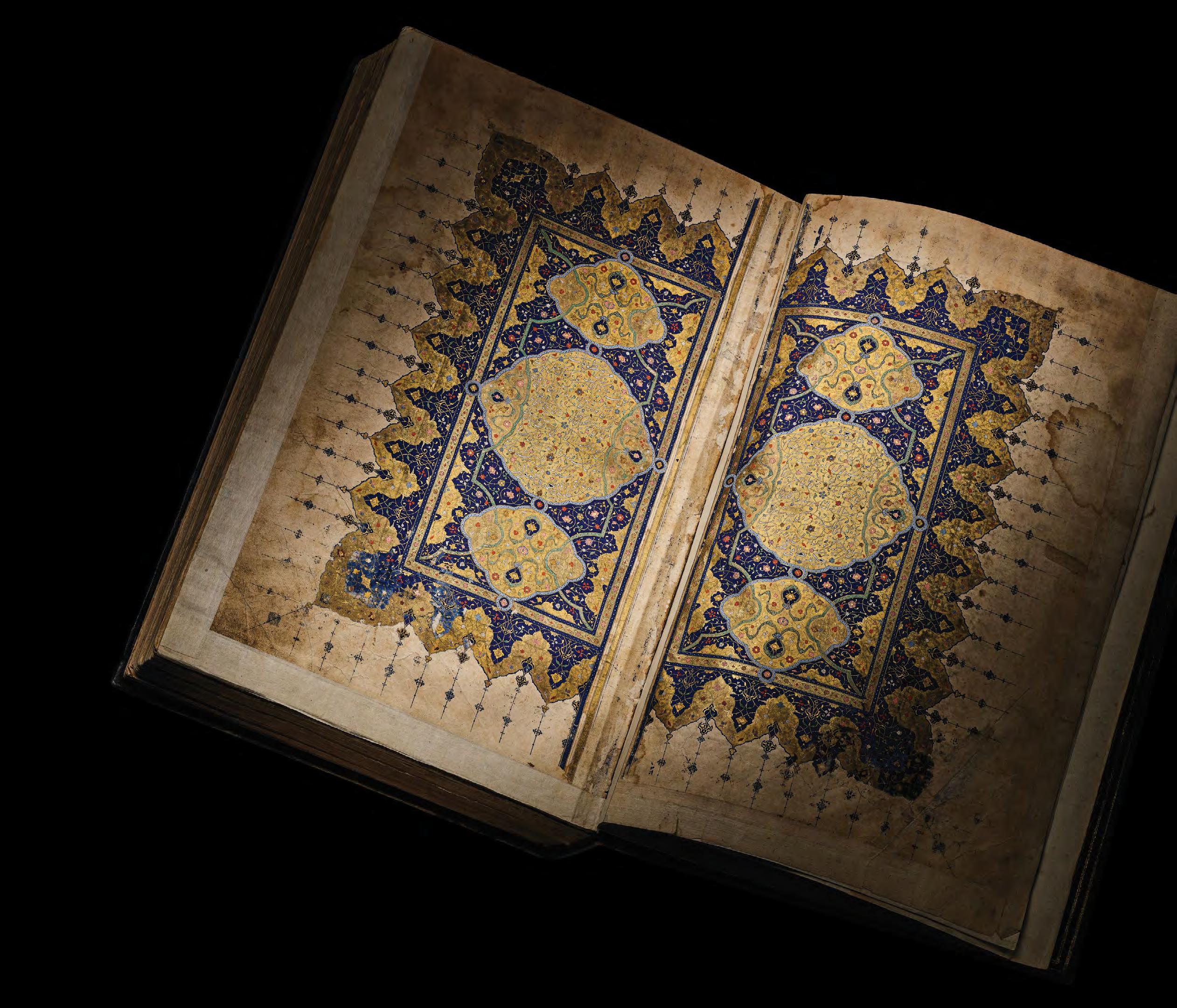
Christie’s exhibition takes viewers on a journey spanning thousands of years, with carpets, ceramics, manuscripts, textiles, works on paper and metalwork from across the Islamic and Indian worlds
to a pair of ‘bevelled’ Sasanian Silver Bottles, Christie’s is preparing to launch one of its most coveted auctions and exhibitions of Islamic heritage: Art of the Islamic and Indian Worlds including Rugs and Carpets. Following a ‘Highlights Exhibition’ at Christie’s Dubai, DIFC this October, the exhibition has moved to London for its highly anticipated sale – with the event taking place on 24th October.
The sale is led by two extremely rare objects: a previously unrecorded rare 17th-century silk Safavid Polonaise carpet, probably Isfahan, central Persia (estimated to fetch around US$1,300,000–2,600,000) and a pair of ‘bevelled’ Sasanian Silver Bottles, Iran, dating back to the 6th or 7th Century and decorated in a style that foreshadows the early Islamic ornament seen in Samarra (estimated to
fetch US$270,000–390,000). Two watercolours from the famous Impey album compiled by Sir Elijah (1732-1809) and Lady Mary Impey (1749-1818) add a dose of colour to the display, including a Lineated Barbet bird on a juniper tree, from Calcutta, India, dated 1778 by master artist Zayn al-Din (and estimated to fetch US$160,000–240,000).
A striking juxtaposition to the soft, fuidity of the watercolour, an important Florentine portrait of Süleyman the Magnifcent, Circle of Cristofano dell’ Altissimo, Florence, Italy, circa 1600, also features (estimated US$270,000–390,000). Süleyman the Magnifcent was the tenth and longest-reigning Sultan of the Ottoman Empire. This portrait is closely related to a group commissioned by Cosimo I de’ Medici for the Ufzi after which this was made. Through dell’ Altissimo’s version of the portrait, the present image of Süleyman became widely distributed across Europe and informed the European image of one of the most well-known Ottoman Sultans in history. Other key pieces include a reversible fve-strand diamondset pearl necklace, North Indian, late 19th Century (estimated



left: An Agra rug, North India, circa 1890, of ‘sickleleaf’ design; Florentine portrait of Süleyman the Magnificent; a reversible North Indian five-strand diamond-set pearl necklace; silk and metal-thread Chinese palace carpet Qing Dynasty; a rare pair of ‘Bevelled’ Sasanian silver bottles
to fetch US$53,000–78,000). It’s just one of an outstanding collection of 18 pieces of fne Indian jewellery in the auction and the frst collection of this type offered since 2019.
Rugs play an important role in the display, with over 100 rugs and carpets – notably led by a rare, large format Silk Safavid Polonaise carpet (estimated at US$1,300,0002,600,000). This exciting new discovery was woven in Persia during the reign of Shah Abbas the Great (1588-1629) and has remained preserved in remarkable condition in a Japanese private collection until very recently.
The sale also includes, ‘A London Collection’, the culmination of over four decades of collecting by a distinguished private gentleman, which features many of the iconic examples of carpet design that we associate with the rugs of the Caucasus and Anatolia. A Silk and Metal-Thread Chinese Palace Carpet Qing Dynasty, probably Beijing, late 19th Century, woven for the Palace of Tranquil Longevity (US$53,000–78,000). According to their inscriptions, the so-called ‘Palace’ carpets were woven for various imperial buildings within the dynastic capital of the Qing emperors in Beijing.
‘We are delighted to present the current sale which brings together highlights from across the region,’ syas Sara Plumbly, head of department at Art of the Islamic and Indian Worlds. ‘It is particularly exciting to be able to bring to the market the Collection of Paul Loewi, the stockbroker of the famous bibliophile Chester Beatty. He collected with the same fnetuned eye of his friend, and the star of that group, a Safavid Khamsa of Nizami, is a particularly fne example of the production of luxury manuscripts in the early 16th Century.’ christies.com



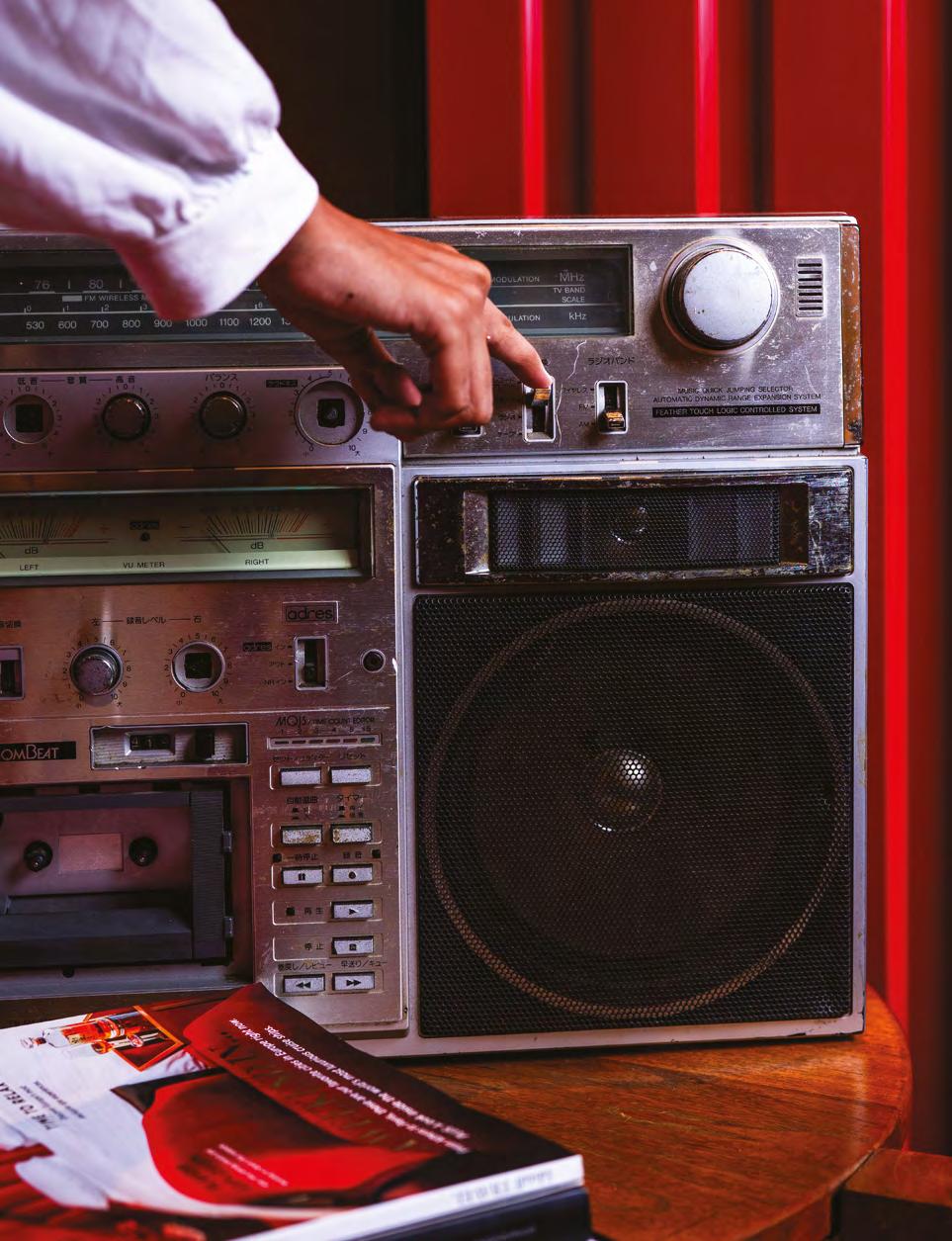
A 24-hour day isn’t enough to explore Dubai’s coolest hotel, 25hours Hotel One Central, where a soulful community-driven space fizzes with energy, fusing culture, dining, community and worldclass wellness in one…
The name immediately gets the brain whirring: why the extra hour? Well, with 24, there aren’t enough hours to enjoy all that’s on ofer at Dubai’s coolest hotel, the now iconic destination that is 25hours Hotel One Central. The property is a unique experience in the city, ofering the relaxed, yet vibrant, hedonistic, yet relaxed Euro-cool energy of its sister properties, but with a luxurious Dubai edge.
There’s a feeling of comfort when stepping into the cavernous lobby. There’s no overzealous staf watching your every move, and visitors can simply pop by to soak up the energy. Around the ‘Fountain of Tales’ – a towering globe fountain with hundreds of books – is a space where fashion pop-ups and art installations jostle by Schindelhauer bikes: propped up, ready for guests to wheel around the neighbourhood. Head to Nomad Day Bar for the best cofee in the city, and admire its artist-in-residence installation. For this season, it’s Where to Next? by Alex Lanier – more than just a painting; but a narrative that resonates with the essence of life’s journey.
25hours Dubai hides many treasures. On the frst floor, a cool new co-working space that’s a hive of creativity, and the Analogue Circus, delivering a heavy dose of nostalgia with 500 vinyls and 300 Walkman cassettes. It’s true that at 25hours, the only thing non-hotel guests can’t enjoy are the rooms – making it feel like a buzzing community hub. Whizz up to the sixth foor for a treatment in the Wassim Steve Salon or Akin Barber, book training in the state-of-the-art gym, or visit the Extra Hour Spa (more on that later), all before grabbing a drink at rooftop Monkey Bar – a pulsating, panoramic space with twinkling Museum Of The Future views.
As for the rooms themselves, they’re unlike any in the city –celebrating the UAE’s stratospheric evolution from Bedouins to Arabs on Mars. Gone is traditional Dubai minimalism, favouring quirky maximalism and curated clutter. Pillows don cheeky

Clockwise from left: the Analogue Circus; the hotel’s lobby is home to the ‘Fountain of Tales’; sauna nestled in the spa garden
Following pages from left: a Farmstay Suite; artist in residence, Alex Lanier
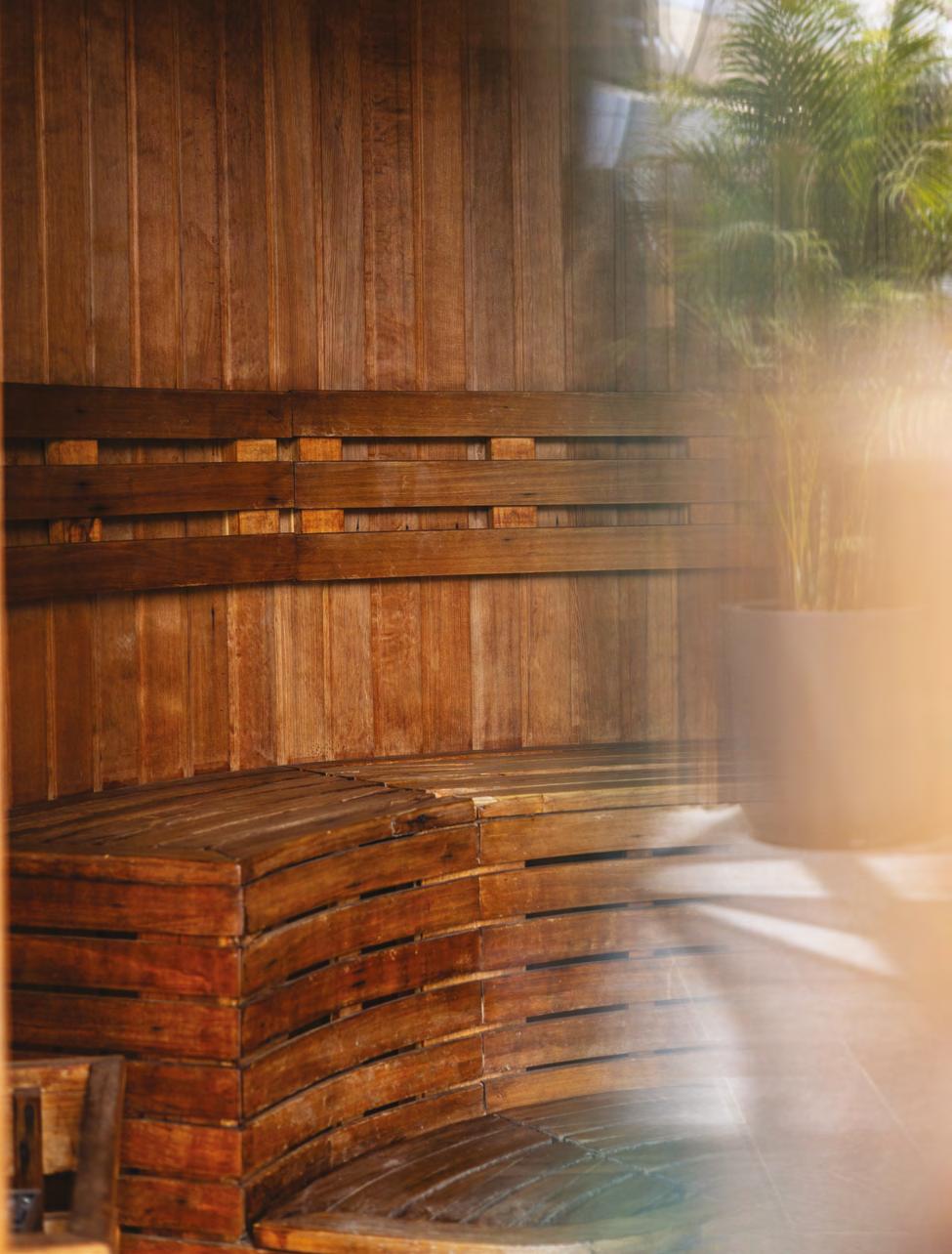
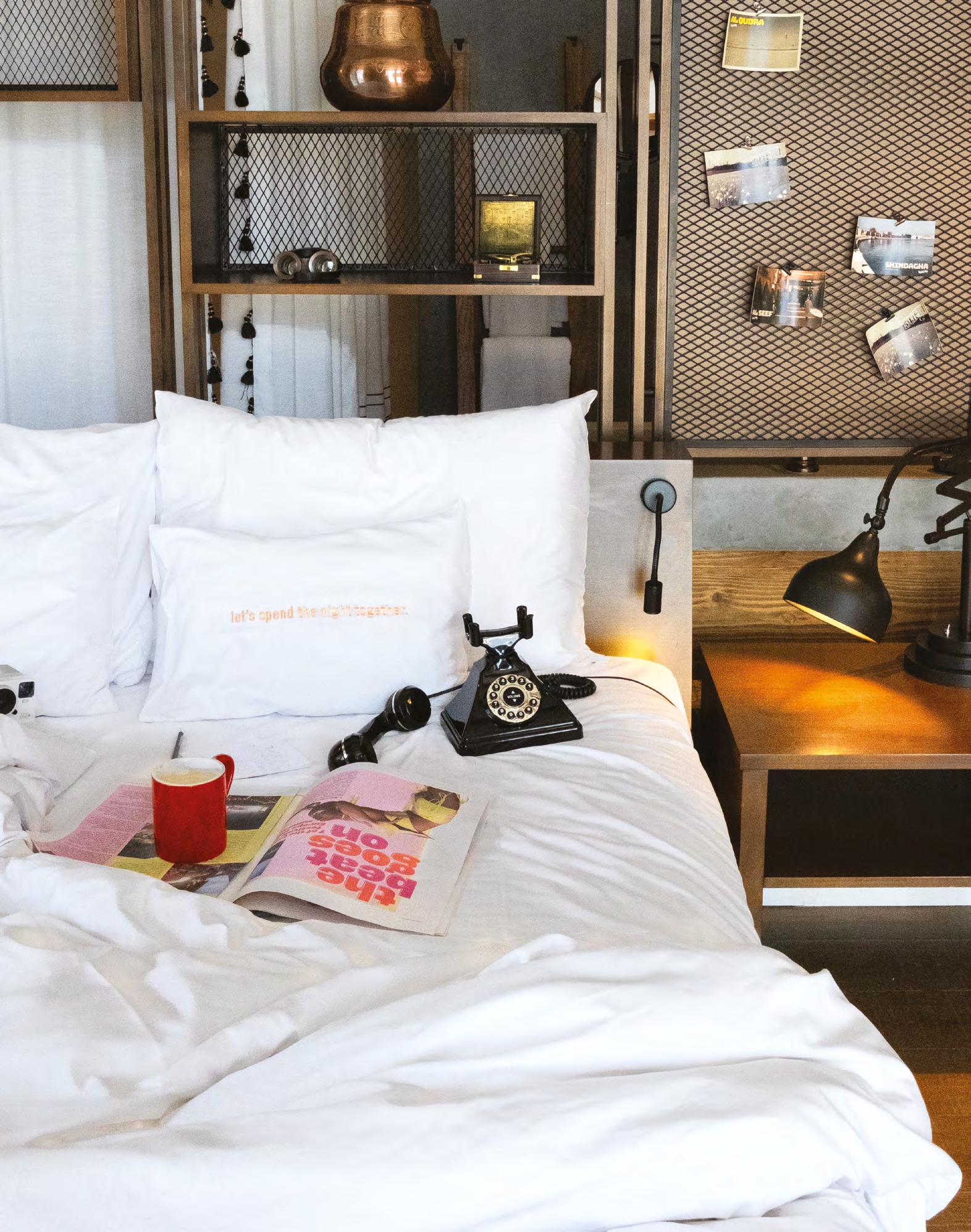
slogans like ‘let’s spend the night together’ and shelves are stacked with Polaroid cameras and typewriters. Of course, this is Dubai, so expect rolltop baths, dual showers, luxury amenities and a free minibar featuring beverages and local treats like Oman Chips.
The possibilities are endless when spending 24 hours at the property –breakfast, lunches, drinks, pop-ups, treatments, dinners and parties. But for that ‘extra hour’, there’s the aptly named Extra Hour Spa, designed for city hustle escapism: the antidote to high-octane energy and hedonism. The spa invites you to dedicate that one hour to yourself, turning feeting moments into something truly valuable. Treatments are snappy but deeply transformative. ‘We remind our guests: make that extra hour counts,’ says spa manager, Thembekile Hlatshwayo. As for the deeply transformative treatments? Expect all the classics, but in 25hours Dubai’s pioneering style.
‘The soulful spaces of the 25hours Hotel One Central are designed for our guests to embrace themselves and feel comfortable being who they are,’ says the spa manager. ‘In line with this, our wellness oferings at the Extra Hour Spa cater to those seeking a good, yet quick and efective escape – solidifed in the core values of 25hours. Our unique approach sets us apart from other brands.’ Guests can enjoy new treatment rooms, a steam room and sauna. Everything is designed with the modern nomad
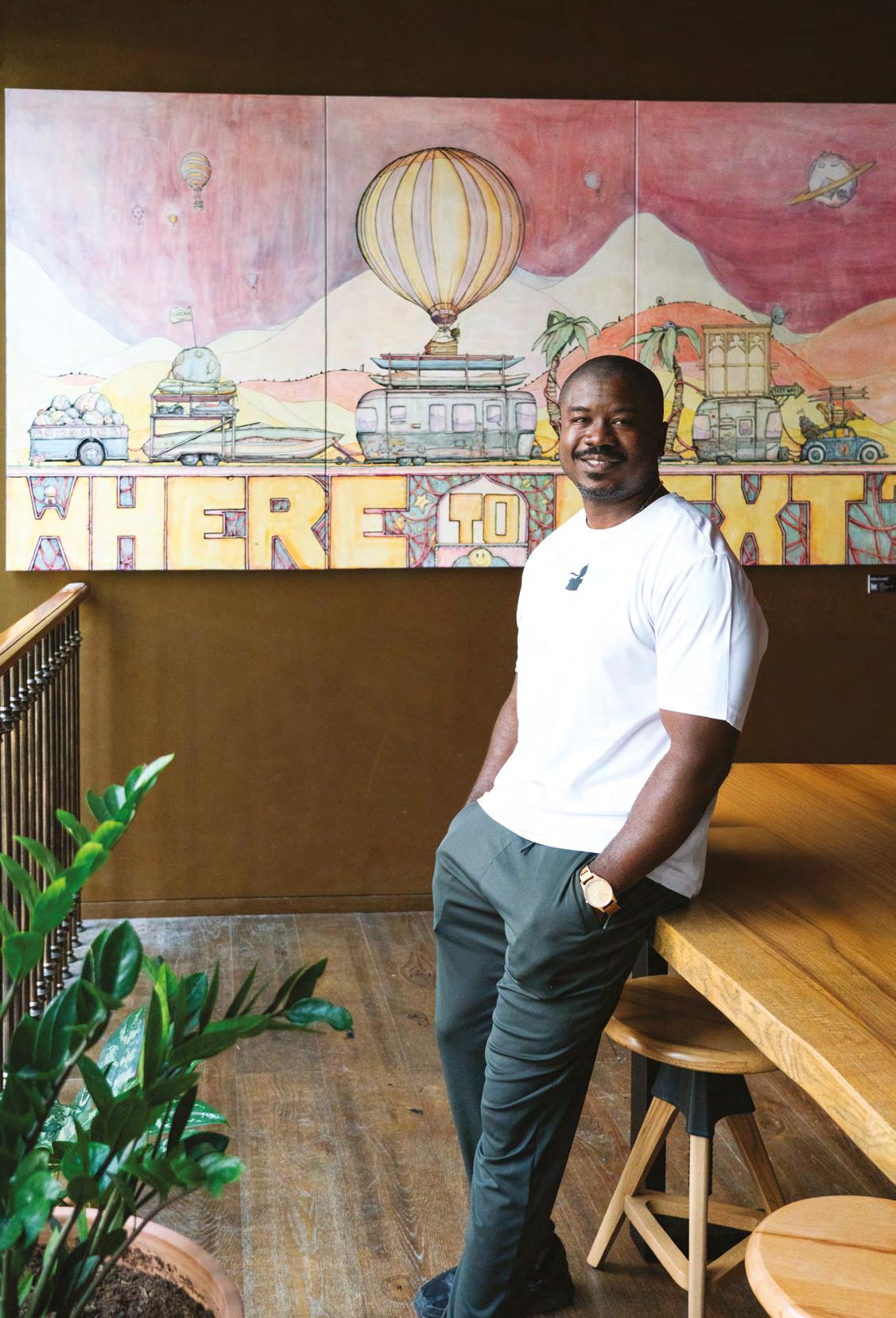
guest’s lifestyle in mind: from highly efective, targeted facials to head-to-toe body cleanses. ‘It’s a holistic wellness experiences that promote both physical and mental wellbeing,’ explains Thembekile.
Collaborations are also key, and new invigorating ice bath sessions are led by Energy Camp Dubai. Launches, too, like a new Sunset Ready experience for couples. Guests can enjoy a massage in the herb garden, a private outdoor sauna session and two refreshing drinks at rooftop lounge Juña. ‘Amidst the hustle and bustle of daily life, along with our modern nomad guests’ lifestyle, constantly on the go, the Extra Hour Spa is fully equipped and ready to provide the ultimate escape,’ adds Thembekile.
This extra hour can’t just be grabbed in the spa but also out in the spa jungle, where, in true German style, you’ll fnd the first mixedgender sauna in the UAE, a rooftop pool with those same dazzling skyline views and an indoor-outdoor gym. At 25hours, there really aren’t enough hours in the day to do it all – so give yourself plenty of time...
25hours-hotels.com; @25hourshoteldubai
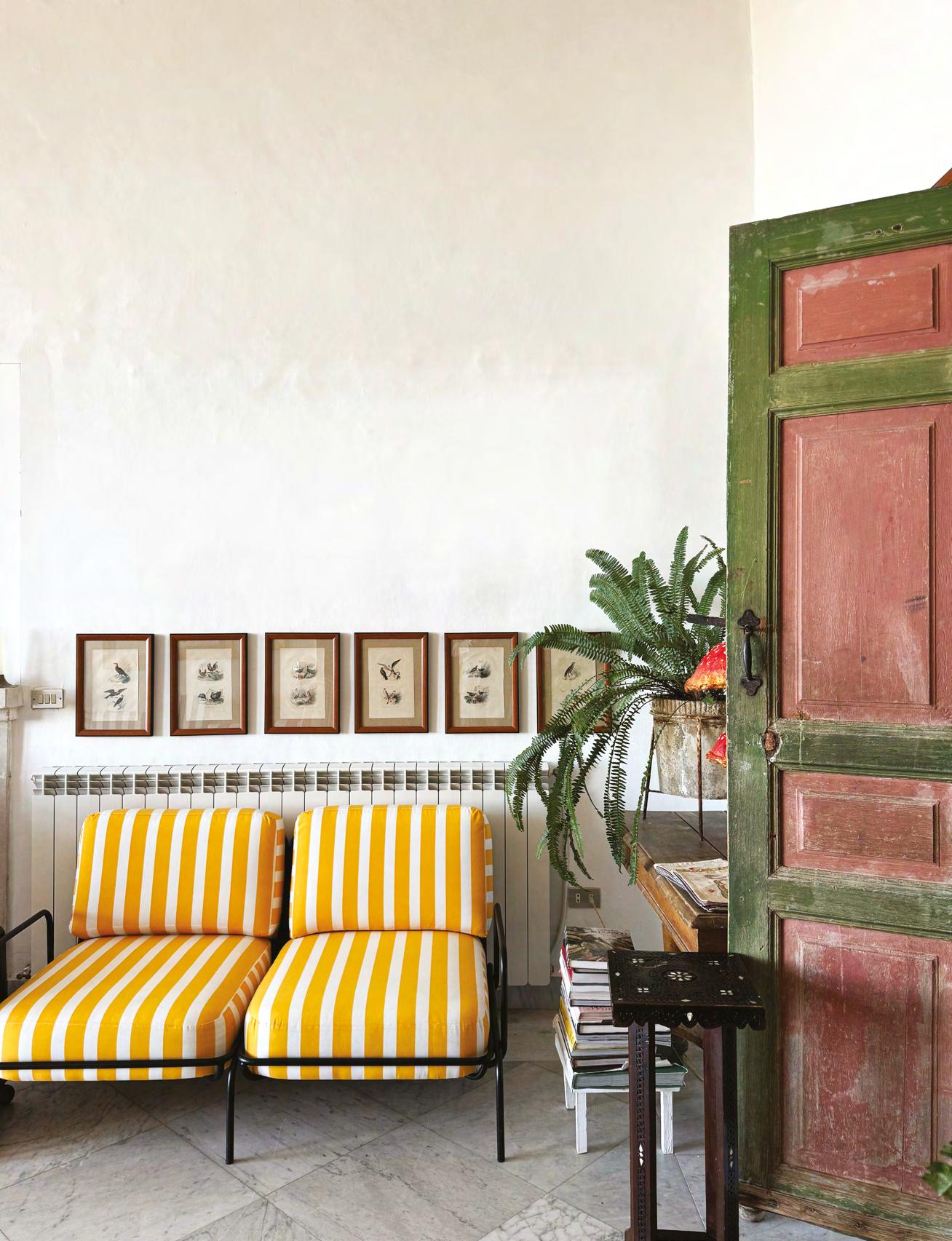
From an African safari in the UAE and Lebanon’s loveliest boutique stay to an emotive Baghdad homecoming, these personal tales of beloved spots in the Middle East will leave you reeling with travel inspiration
My personal connection to Sir Bani Yas Island – one of the largest natural islands in the UAE – goes back to my first visit to Africa in 2016, where I fell in love with the continent’s landscapes and charm. Sir Bani Yas Island brings back these memories, and since that first visit, I’ve returned to the island twice more –each time discovering something new that makes it so special.
Anantara Sir Bani Yas Island is home to three properties, each offering a unique experience. Two of the resorts provide luxurious desert and beach settings, while the third offers an immersive safari-inspired escape. It’s one of my happy places because it brings to mind the natural beauty of the African savannah right here in the Middle East.
Staying here is a mix of peace, excitement, and adventure. There’s a calming sense of being surrounded by nature and the sounds of wildlife and the thrill of seeing incredible animals up close. The island is the vision of the late Sheikh Zayed bin Sultan Al Nahyan, created as a sanctuary for thousands of free-roaming indigenous animals. I realized how unique this place was when I stepped onto the terrace and saw the animals wandering just a few meters away. It was incredible to be so close to gazelles and peacocks while relaxing in a heated plunge pool or on a sunbed. The sounds of birds all around enhance the feeling, making you forget you’re in the UAE.
The experience begins with a water taxi ride that takes about 30 minutes to reach the island, which sets the mood for an exciting escape. I stayed at Al Sahel Resort, known for its 30 safari-style villas, which really gives the feeling of a luxurious African safari lodge. There’s an African-inspired restaurant, and every Thursday night, they fire up the braai for a barbecue under the stars – it’s a special night!
Seeing African animals in the UAE is certainly unusual and adds a surreal aspect to everything. The contrast of African wildlife against the Arabian landscape makes the experience memorable. Beyond the resort, Sir Bani Yas is rich in archaeological history, with sites that go back to the Bronze Age. Additionally, it’s home to one of the oldest Christian monasteries in the region, discovered in the early 1990s, which adds a fascinating historical layer to its natural beauty. This combination of wildlife, history, and landscape makes Sir Bani Yas a truly unique and unforgettable destination.
anantara.com, @anantarasirbaniyas


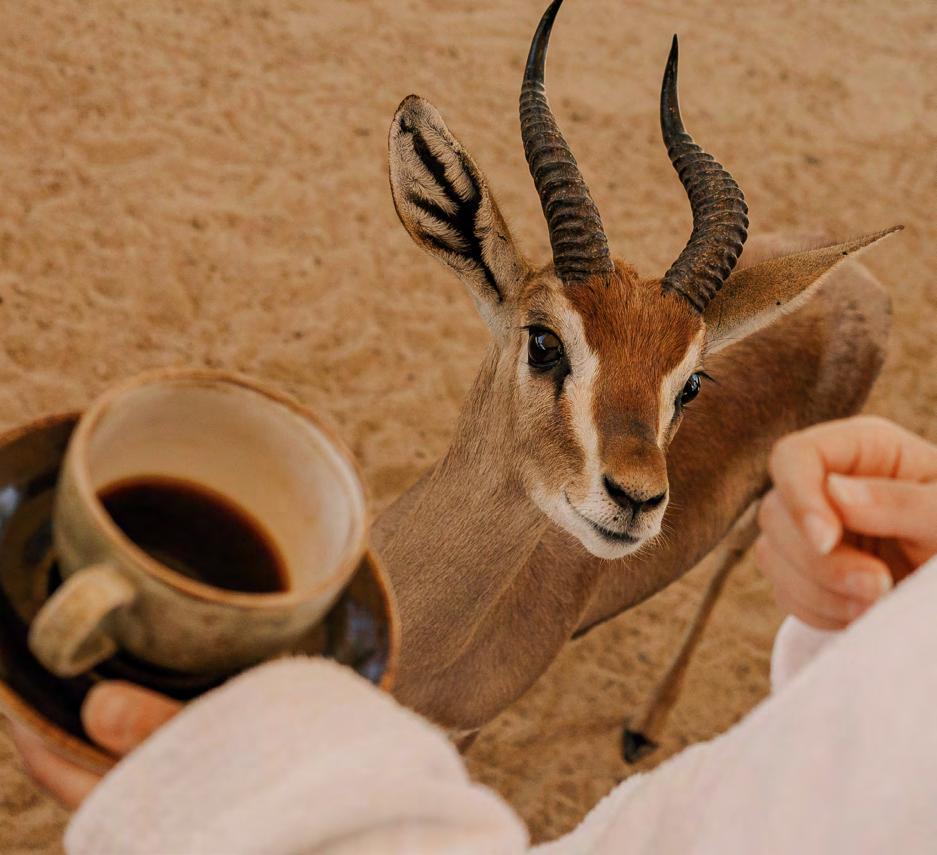

There’s the feeling of stepping into your grandma’s house when visiting Beit Douma: a sense of warmth and generosity. Beit Douma holds a special place in my heart because of the many wonderful memories I’ve made there with family and friends. I stay at Beit Douma about four times a year, and each time feels like coming home. The property is nestled in the heart of Douma, one of Lebanon’s most beautiful villages, capturing the essence of traditional Lebanese charm.
Like many houses in the village, Beit Douma’s architecture reflects the classic style of a traditional Lebanese house, with its red-tiled roof, arched windows and stone walls. But what truly sets it apart is how the old has been beautifully revived with a modern, simple touch. It is one of my happy places because it allows me to truly disconnect and immerse myself in a village that I love and that holds a personal significance for me.
I discovered Beit Douma through my admiration for Souk el Tayeb and their commitment to promoting authenticity in Lebanon, supporting women and small businesses. As one of the first guest houses in Lebanon, Beit Douma embodies this spirit by celebrating traditional Lebanese culture through its architecture, food, and people. I’ve had the pleasure of working closely with Kamal Mouzawak, the founder of Souk el Tayeb, on various projects. Over time, he has become a dear friend, and through him, I’ve had the privilege of meeting the incredible people behind Souk el Tayeb, especially the amazing women who are the backbone of the organisation. The people who work at Beit Douma are all from the village itself, which gives the house a strong identity rooted in the food and traditions of the region.
Room Number 1 and the balcony on the first floor are my favorite spots to hide away in. Watching the sunrise over the mountains from there is truly magical: the way the light casts a warm glow over the roofs, and listening to the peaceful sounds of the early morning while I enjoy my first cup of coffee.
Staying here offers a glimpse into the richness of Lebanese village life, from the unique architecture and local culture to the delicious traditional food. Plus, the area is surrounded by natural and cultural treasures, like the Cedars of Tannourine, the Douma old souks, Assia’s traditional pottery, Balou’ Balaa and numerous hiking trails. It’s an ideal spot to explore the beauty and heritage of the north. My top travel tip? Stop by Dekenet, the pantry shop at Beit Douma, before you leave. All the products are made by local producers associated with Souk el Tayeb, supporting the local ecosystem and small businesses. It’s a wonderful way to take home a piece of Lebanese tradition and contribute to the community.
soukeltayeb.com, @soukeltayeb

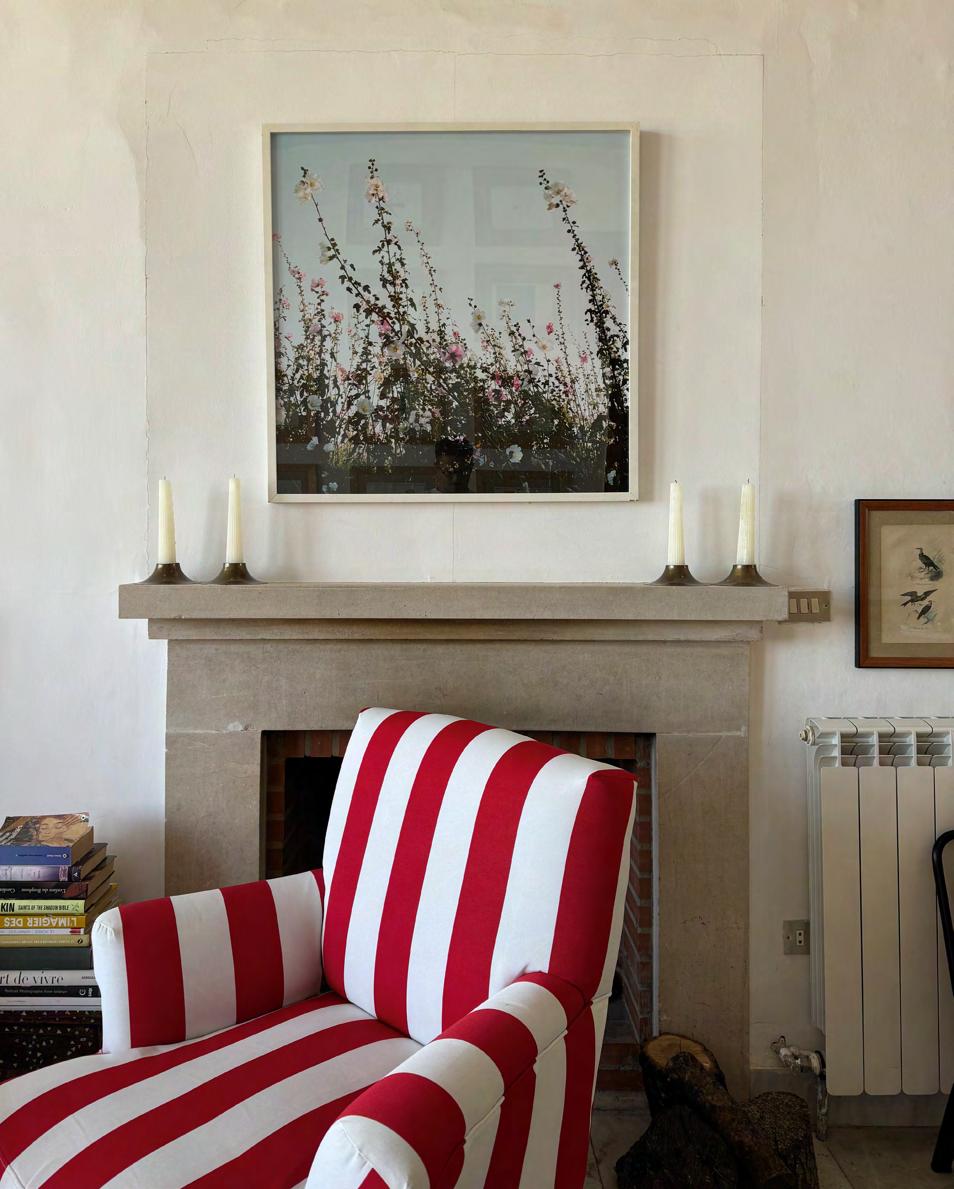
There’s the feeling of stepping into your grandma’s house when visiting Beit Douma: a sense of warmth and generosity



@ahmad.aldabagh
BBaghdad; the city of One Thousand and One Nights, and my birth city, needs no introduction. It was the largest city in the world by the beginning of the 10th century, the epicentre of the Arab Caliphate in the golden age of Islam and an important stop on the Silk Road. Despite its tumultuous past, Baghdad remains the hub of culture and art in the Arab world. Old World charm meets youthful optimism, and after many years of war and political unrest, the inspiration for Aladdin’s Agrabah is once again coming to life.
The first time I visited Baghdad after a 21 year hiatus, I was struck with emotions of loss and uncertainty; the city truly surprised and challenged me. The kindness, generosity and hospitality of the locals and monuments which still stand after so much conflict and adversity truly left me speechless. I love the enviable art scene and local cuisine – from grilled fish to falafel sandwiches (try Masgouf, freshwater carp butterflied, marinated and grilled on skewers).
I love strolling along the banks of the River Tigris, drinking black aromatic chai while listening to Iraqi music. My favourite area is Al-Rusafa; the historic heart of the city on the Eastern side of the ancient river. Baghdad’s most romantic street is Al-Rasheed, where you’ll find traditional houses with Mashrabiya and the intricate domed Haydar-Khana Mosque with its marble doors. From Al-Rasheed Street you may pick-up a traditional raisin juice and head to Al-Mutanabbi Street, named after the 10th century classical poet Al-Mutanabbi. The street is the heart of the Baghdad intellectual community and is filled with bookstores and outdoor book stalls that stay out overnight as Baghdadi’s recall “the reader does not steal and the thief does not read”.
The Baghdad Gymnasium, designed by modernist legend Le Corbusier in 1956, was his last built work and potentially going to be used for the 1960s Summer Olympics. Wander through the Iraq Museum and marvel at rare Sumerian and Babylonian antiquities or people-watch at the Al-Mutanabbi book market where scholars and intellectuals once hung out. For half a millennium, Baghdad was a rich melting pot of scientists, astronomers, mathematicians and philosophers from all corners of the globe. The old proverb ‘Cairo writes, Beirut publishes, Baghdad reads’ still holds true today. Baghdad is even a candidate to be the capital of Arab tourism for 2025.

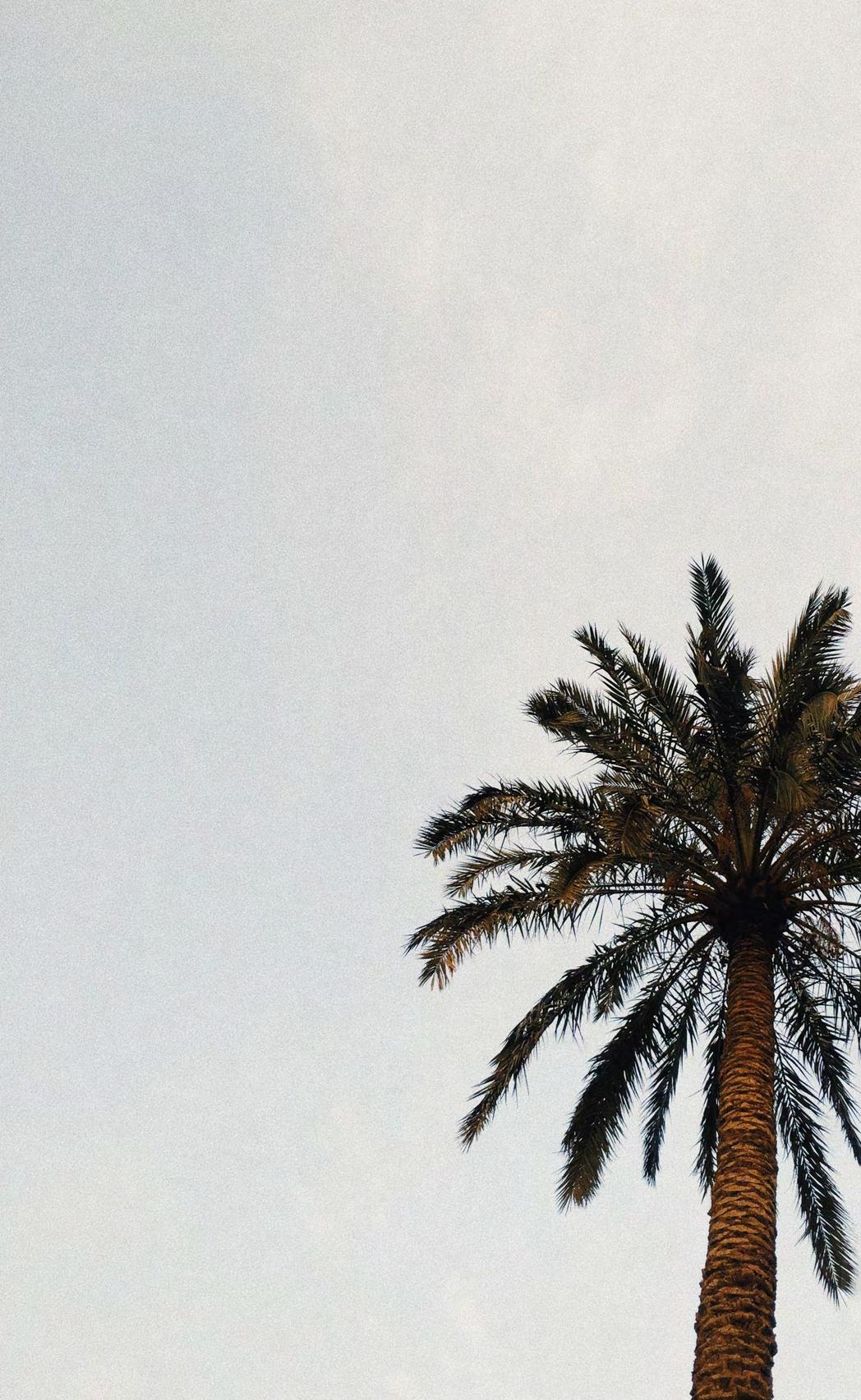

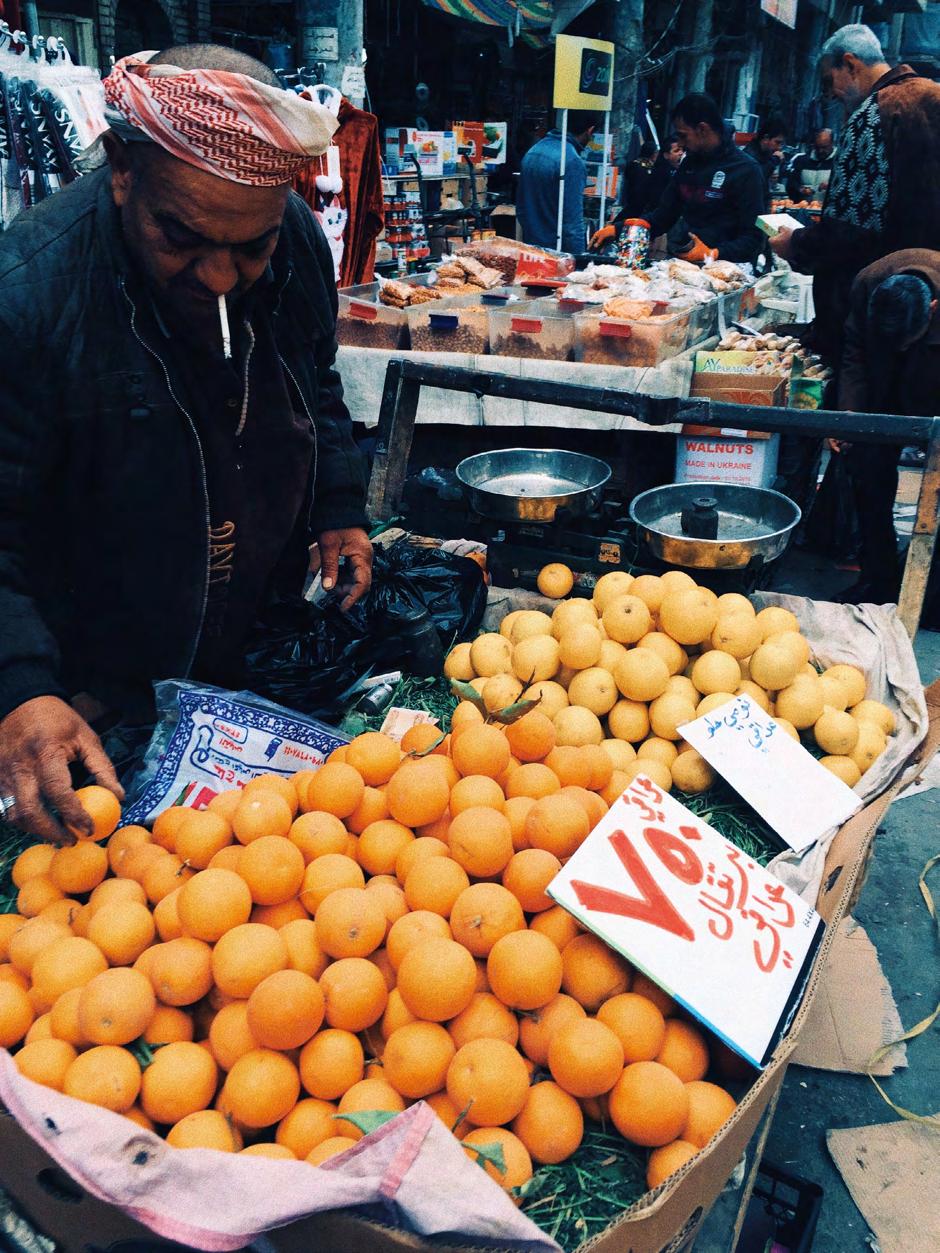
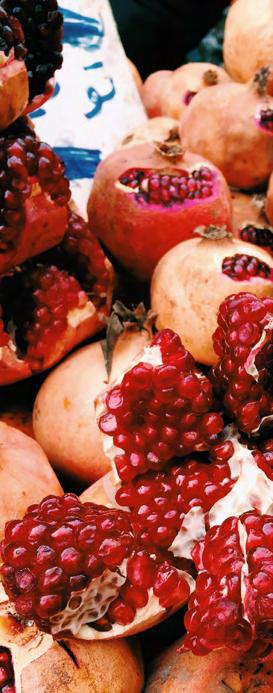
The kindness, generosity and hospitality of the local people and the monuments which still stand after so much conflict and adversity, truly left me speechless

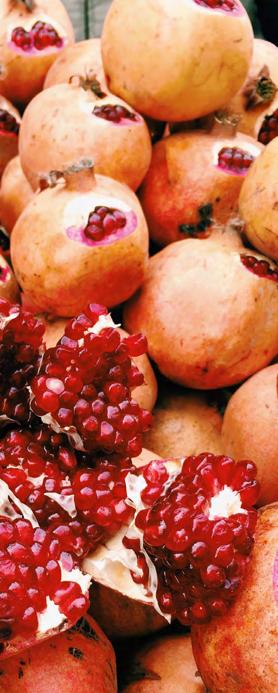


Ivisited Jordan in Spring 2023 and was spellbound by Wadi Rum. The sheer scale and openness of the landscape, with its blazing red sand and curious rock formations is often likened to the surface of Mars. It compares to nothing I’ve seen before and even as a photographer, I think that only the human eye can fully appreciate it. It’s no wonder so many popular movies were filmed here, like Lawrence of Arabia and The Martian.
Going from the liveliness of Amman, Jordan’s capital city, to this far-flung land felt like stepping into another world. With its vast open spaces, towering sandstone cliffs, and trains of camels ambling in the distance, the landscape is exactly what comes to mind when you think of the desert. It’s becoming increasingly hard to find travel experiences that allow you to connect with a place authentically, but Wadi Rum was an exception. I booked a one-day one-night Jeep tour and camping experience in the desert with Wadi Rum Stillness. Sahar, a life-long resident, took me on an excursion around the 721 square-kilometre protected area, letting me catch a glimpse of how his people live.
The hospitality of the Bedouin people that inhabit this 721 square-kilometre protected area is incredibly warm and genuine, and, as a Brit, I appreciated the familiar ritual of tea and a good chat. I came away from Wadi Rum with a real sense of place, feeling enriched and connected, just as good travel should do.
I have such fond memories are clinging to the rails of a Land Cruiser as it hurtled through the sand. Taking a post-lunch nap in the shade of amber cliffs as eagles circled overhead. Sipping hot spiced tea before an open fire to the twangs of an Oud. Bedding down beneath the starry sky. These were moments that left imprints on me like no other travel experiences have.
If you are looking for an authentic cultural experience, seeking adventure, or have never visited the Middle East before, Jordan is the best place to start, and visiting Wadi Rum is a must. And if you’re in need of a digital cleanse, look no further, there is absolutely no phone signal here, so turn that out-of-office on. Also, due to its remote location and therefore lack of light pollution, Wadi Rum is one of the best places in the world to see the stars!
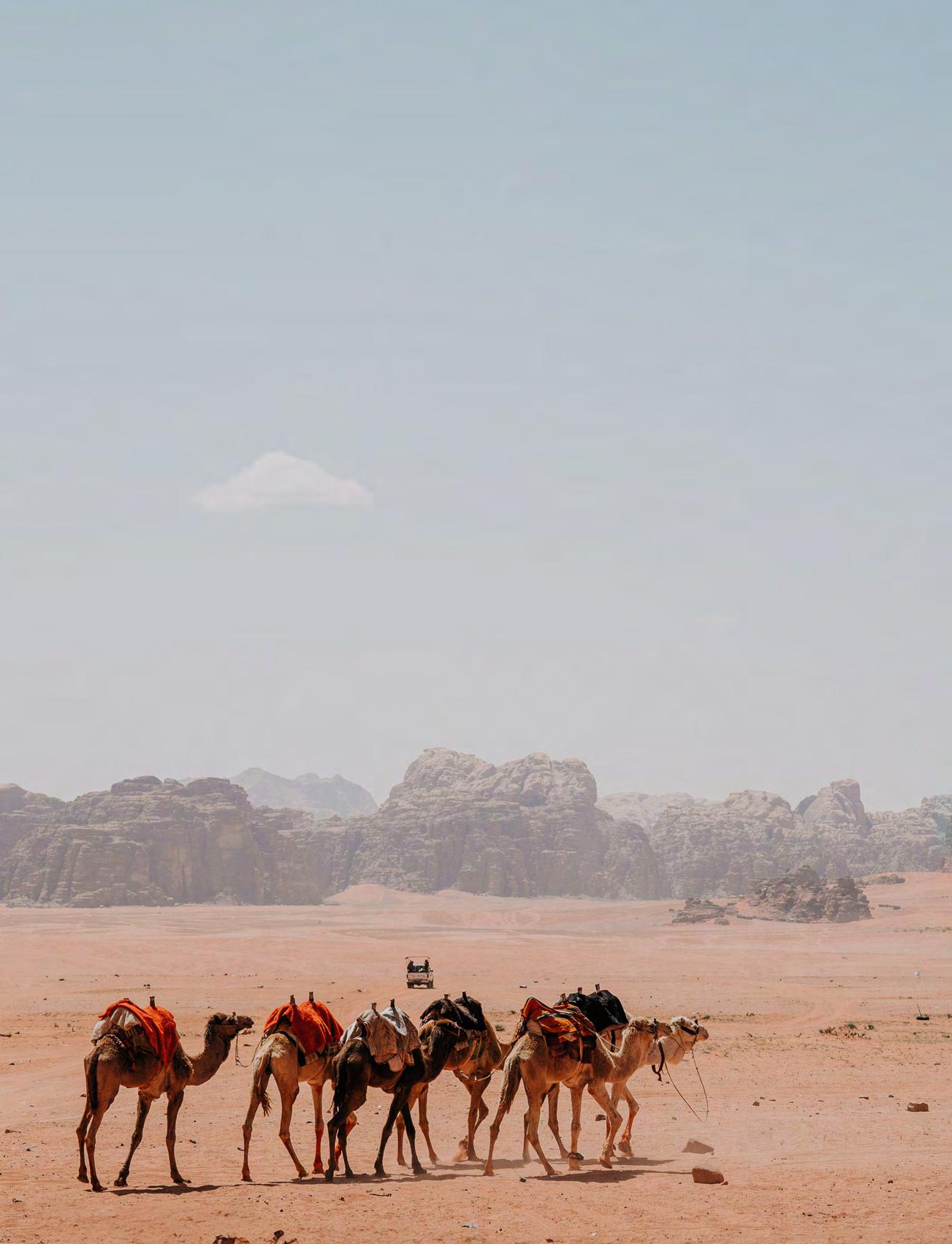
The sheer scale and openness of the landscape, with its blazing red sand and curious rock formations is often likened to the surface of Mars
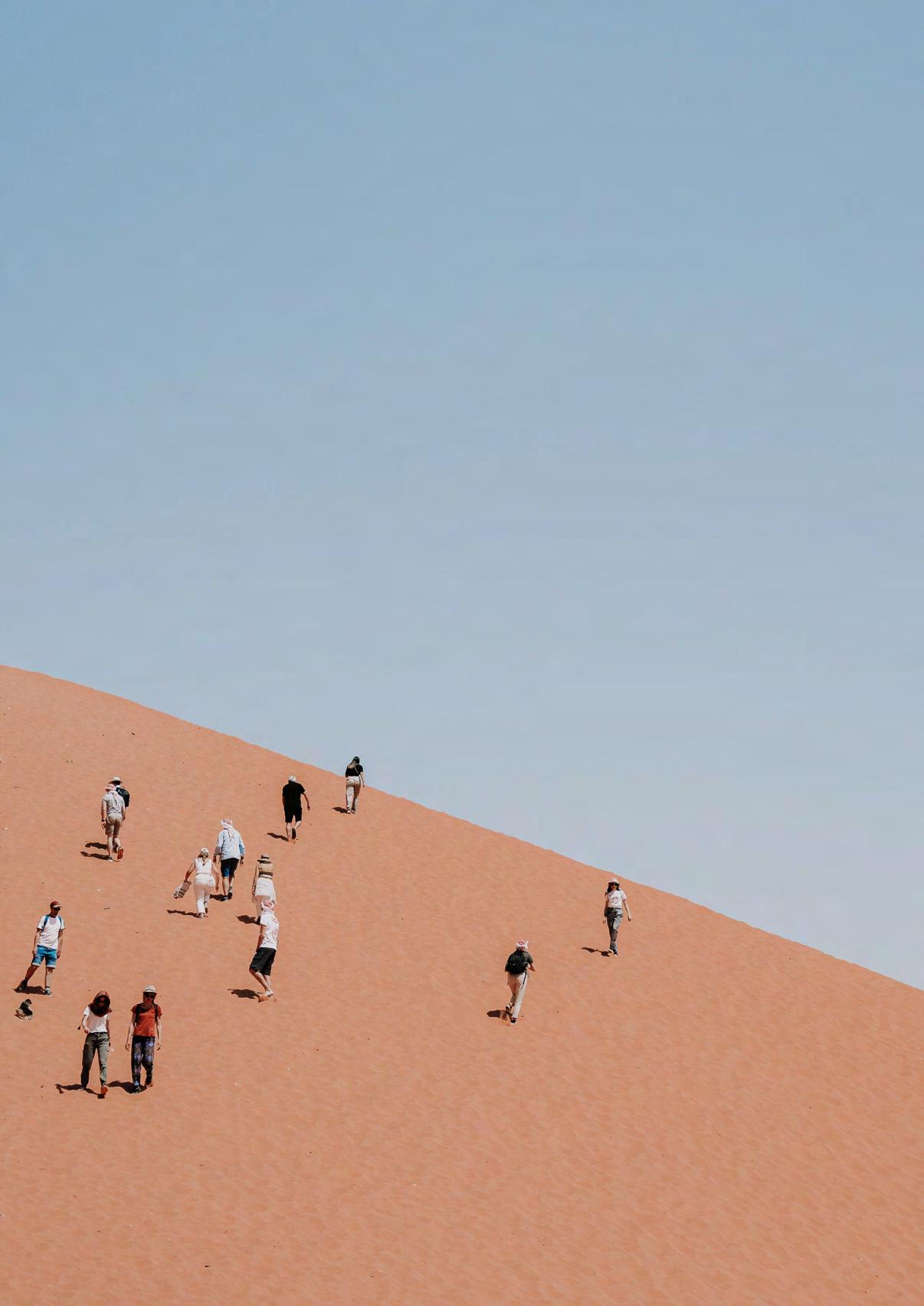



Stepping into Dar Ben Gacem Kahia for the first time was a time-travelling experience for me. The intricate mosaics, carved wooden doors, and courtyards lead you away from your busy life to a bygone era – the time of Dar Ben Gacem’s seven original owners. This charming boutique hotel, nestled within the historic Medina of Tunis, is a living testament to a rich and storied past, a place I wish all travellers could experience.
The beautifully restored traditional Tunisian house is from the 17th century and offers a unique and authentic experience for travellers seeking to immerse themselves in the city’s rich culture and heritage. Dar Ben Gacem Kahia has a prime position in the heart of the Medina and is within walking distance of many of Tunis’ top attractions, including the Kasbah Mosque and the Souks.
Guests feel a sense of warmth and authenticity almost instantly, thanks to the blend of traditional and modern elements in the decor. The hotel maintains its original architectural elements, including intricate mosaics, carved wooden doors, and courtyards, and rooms are tastefully decorated with a blend of traditional and modern elements, providing a comfortable and relaxing atmosphere.
What makes the property even more remarkable is its private ceramic collection, an important collection of over 400 historical ceramic pieces relating to the old history of the Tunisian creative ceramists, especially in the last two centuries. Head to the rooftop terrace to enjoy panoramic views of the medina, a mesmerising spot as the sunsets over the historic sprawl, or visit the on-site restaurant for delicious Tunisian cuisine. It allows guests to taste and enjoy some of our Tunisian favourites and delicacies, and the flavours of the region.
If you’re looking for a truly memorable stay in Tunis, Dar Ben Gacem Kahia is an excellent choice. It offers a unique blend of history, comfort, and hospitality that will make your visit unforgettable.
darbengacem.com, @darbengacem
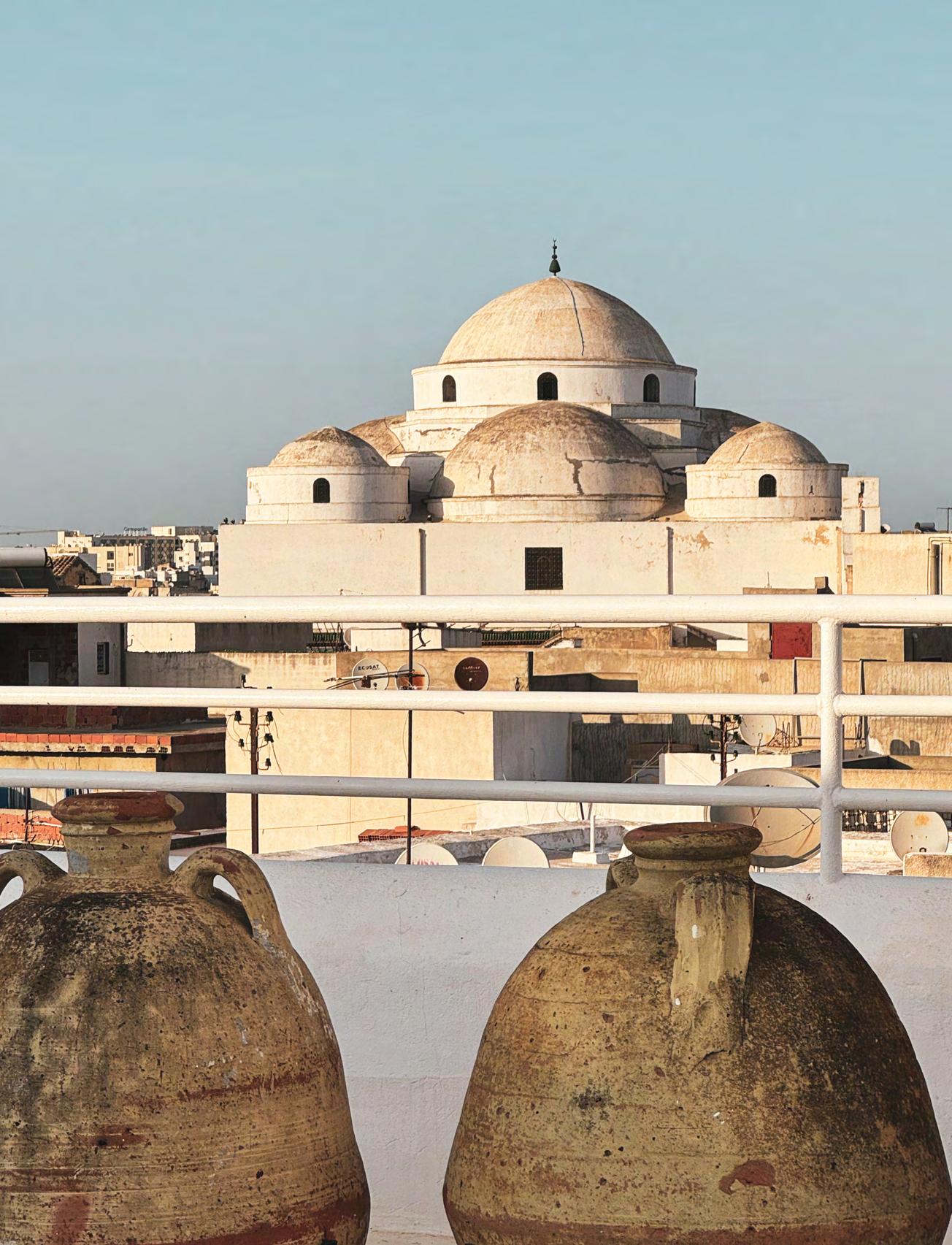
“Stepping into Dar Ben Gacem Kahia is a time-travelling experience. The intricate mosaics, carved wooden doors, and courtyards lead you away you busy life to a bygone era”

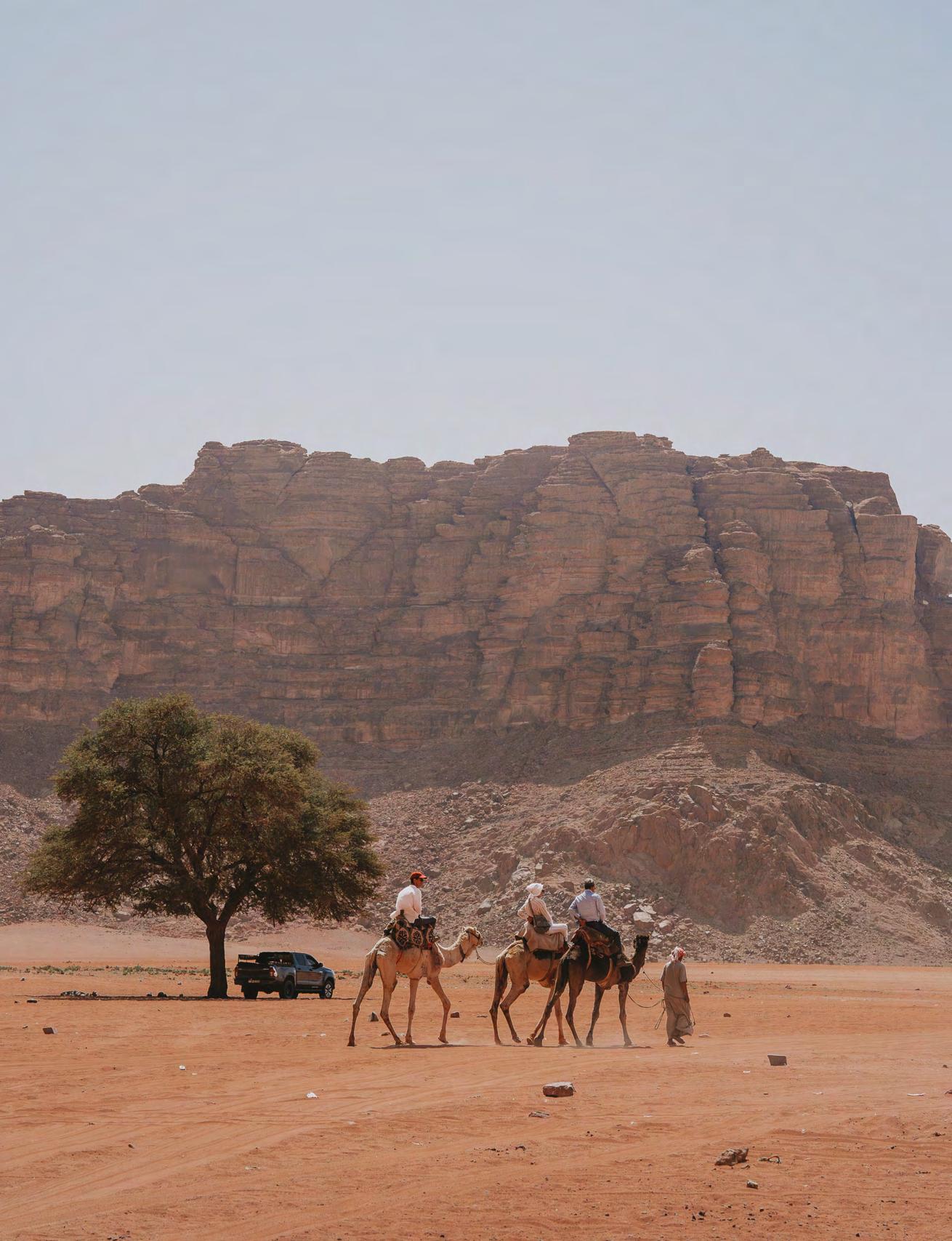

Oman holds a very special place in my heart. After going through a difficult breakup, it was in Oman that I began to feel alive again. The warmth and kindness of the Omani people, combined with the breathtaking landscapes and rich cultural heritage, made me feel at home from the moment I arrived. I’ve never experienced such genuine smiles and hospitality from strangers anywhere else in the world.
Mongolia has become my home of choice for its sense of freedom, vast landscapes, and the deep connection one can find with both humans and animals, and when I visited Oman, I felt a similar energy. I’ve visited Oman many times now, and each time I’m surprised by how it continues to reveal new wonders. Despite its modernity, Oman offers vast wilderness, which is where I feel most at peace. One of my most memorable moments was camping at the White Sand Beach with friends when the waves began to glow from bioluminescent algae. Swimming under the stars, with the water lighting up all around me, was one of the most magical and surreal experiences of my life.
I’m an off-road driving enthusiast, so I’m in my element in the Hajar Mounyains. Camping in the mountains allowed me to fully connect with the surroundings – the stark beauty of the landscape, the contrast of cold nights and hot days, the rugged rocks, and the pristine waters of the wadis. It left me in awe, eager to explore even more of Oman. You can’t miss Wadi Mibam – it’s off the beaten path and less touristic but incredibly beautiful. My base is always the Nomad Inn, a stunning glamping spot just a few kilometers down the road from the wadi, with easy access to the highway. After a long hike and a refreshing swim in the wadi, returning to their bubble tents and pool is the perfect way to end the day. It feels like being in Jurassic Park!
In Tiwi, there are a few charming local restaurants where I always order the tuna. Omani-style fish preparation is simply unbeatable. Another all-time favourite is Alila Jabal Akhdar – their food and view as well as their stunningly built villas and rooms offer the perfect combination of relaxation and adventure. From here you can go on various excursions such as the Nature Walk or even Abseiling. Oman really is the perfect escape from the hustle and bustle of city life, offering a true taste of Arabic culture, unmatched hospitality, and landscapes that are nothing short of awe-inspiring.
Did you know you can snorkel with sea turtles here, or it’s home to the highest mountain in the Arabian Peninsula, Jabal Shams? It’s also the first point in the Arab world to see the sunrise each day – a truly spectacular sight for anyone who visits.
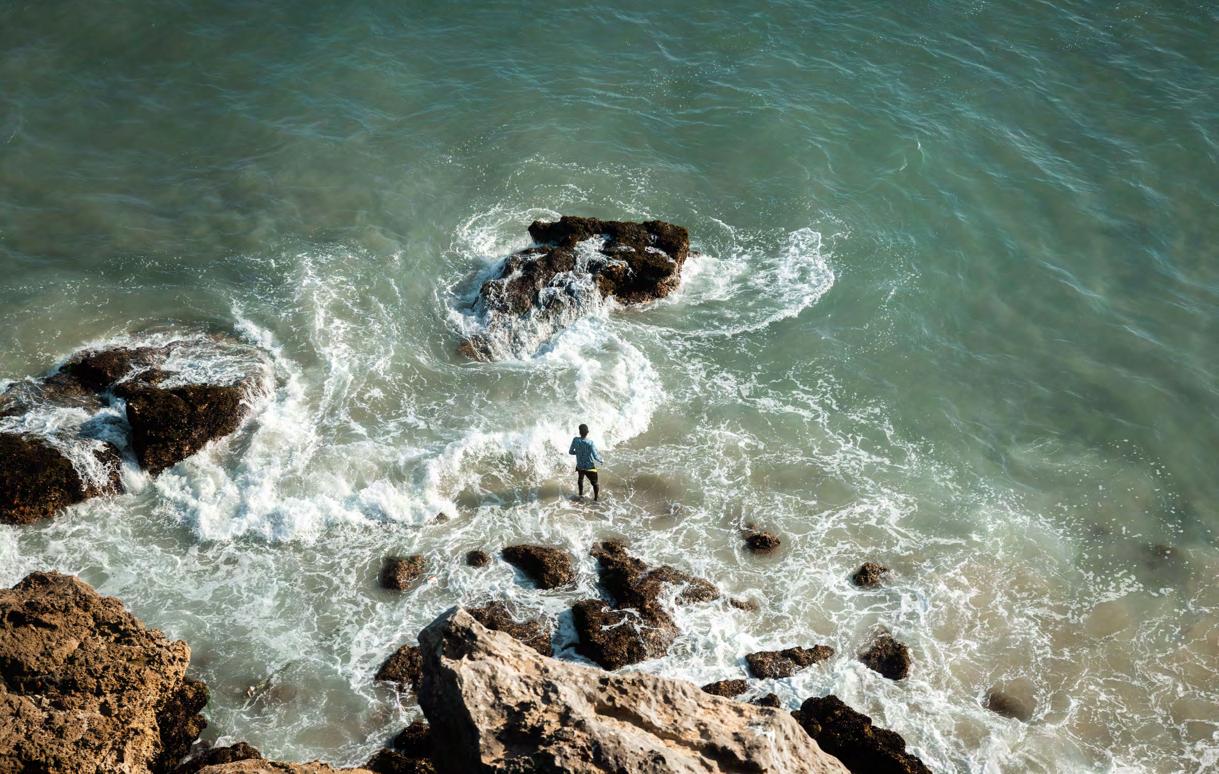

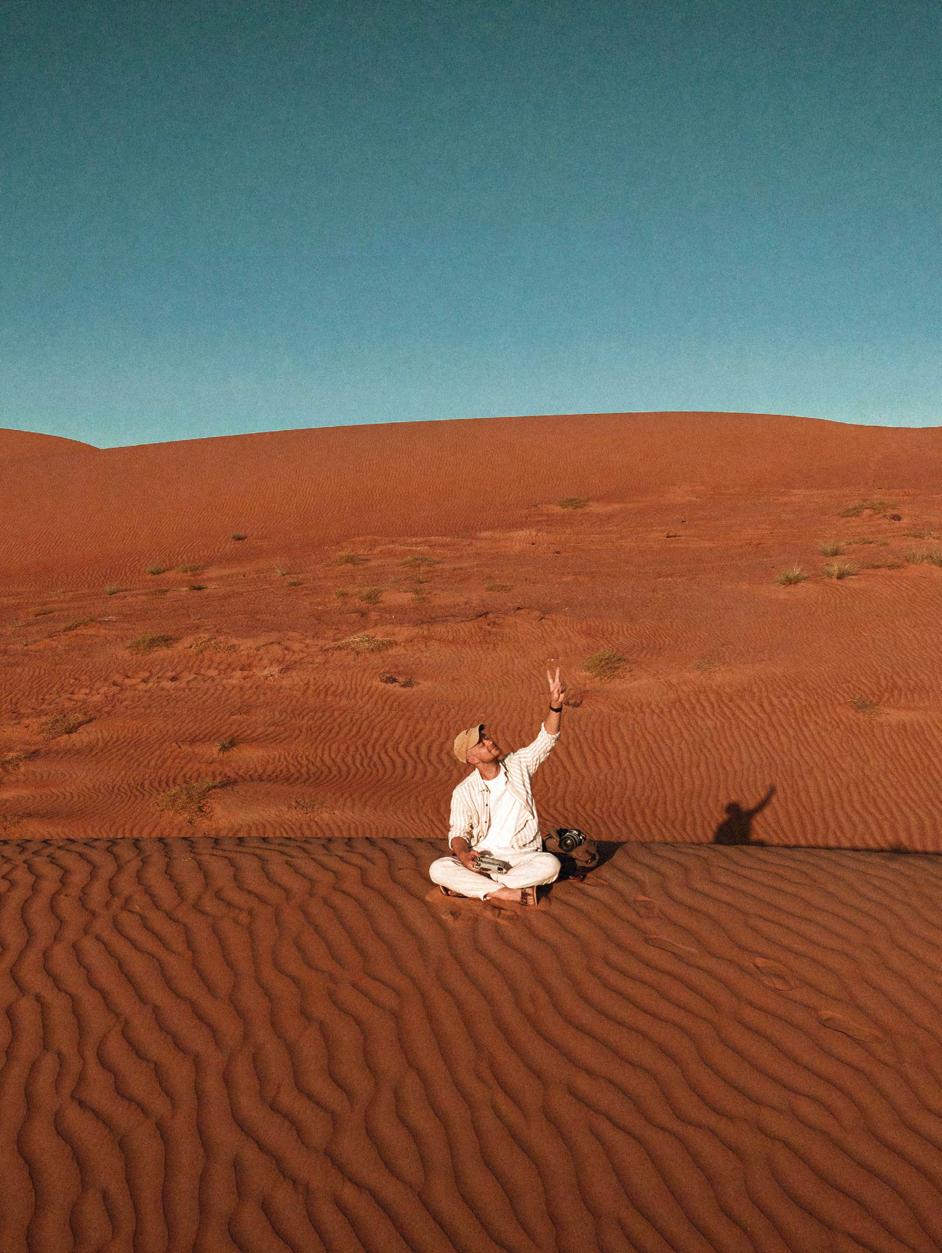
I’ve never experienced such genuine smiles and hospitality from strangers anywhere else in the world



Ihave wonderful memories of One & Only The Palm, of watching the sunset from the beach and waking up early to practice yoga and meditate. The sky was painted in hues of orange and pink, and I could hear the calm lapping of the sea. It was a perfect moment of gratitude to be here: to have worked here, to have access to places like this on my doorstep, that I wouldn’t have back home in the UK. Sitting there, I felt a profound sense of peace and happiness, wholly immersed in the beauty of the moment. It was a perfect escape from the hustle and bustle of daily life.
There’s always sheer amazement when arriving, thanks to the beauty and tranquillity, but also the warm, genuine and welcoming staff. The resort has an air of exclusivity and elegance, thanks to its stunning architecture and beautifully landscaped gardens – and it’s this combination of greenery, seclusion and beautiful architecture had me.
I have two favourite places to spend my time here: the Guerlain Spa area, which is so tranquil, peaceful and, once again, beautiful in its design and architecture. The way the light hits the building gives an ethereal vibe. It’s also home to the new Safina adult pool, which is very luxurious with its modern and clean designs and amazing views of the Palm and the resort. I also love the beachfront infinity pool – it has breathtaking views of the Arabian Gulf and is a perfect spot for relaxation. For couples, it’s really so romantic. The first time I came for a wedding eight years ago was wonderful. I also have taken my parents here to dine the first time they visited Dubai.
They have so many amazing dining options for the foodies and even the two Michelin star Stay by Yannick Alleno. I recently photographed a family here who were happy with the activities, the pools, evrything really - there’s an adult-only pool, tennis courts, little rabbits hopping around, it’s wondeful. I love solo travelling, as this resort is just so peaceful and relaxing, and will return time and time again for a little escapism.

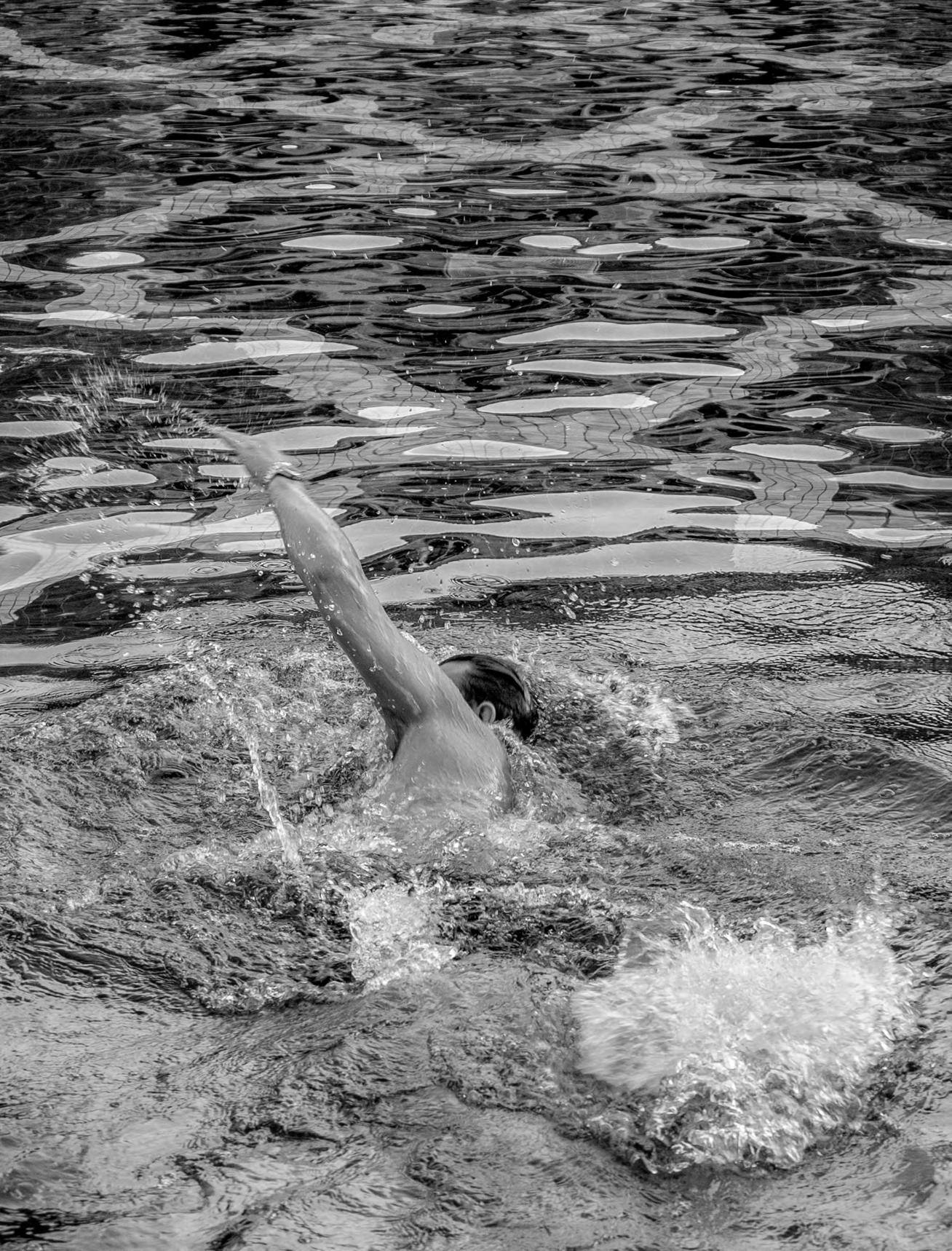
The sky was painted in hues of orange and pink, and I could hear the calm lapping of the sea. It was a perfect moment of gratitude: to be here, to have worked here, to have access to places like this on my doorstep
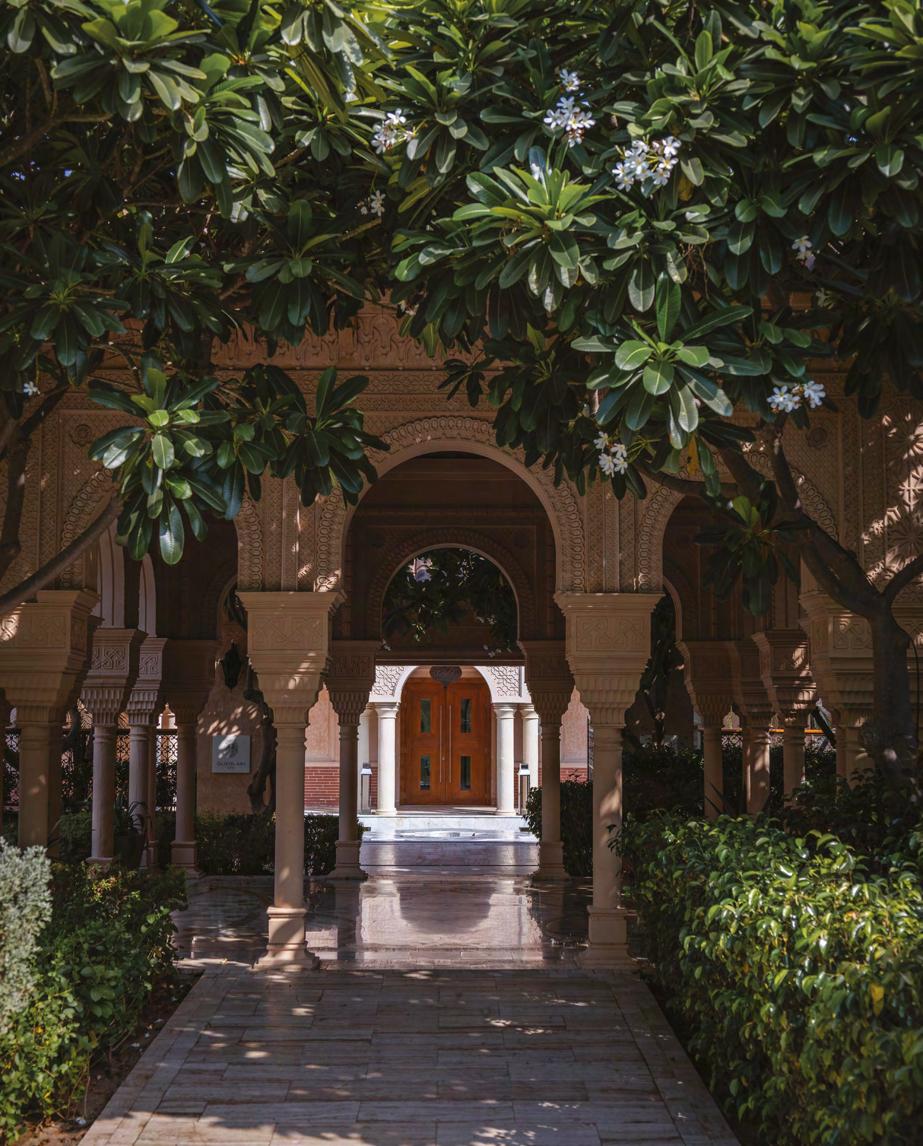
@jrasraan
The bohemian, Bedouin beach town of Dahab, sits on a quiet corner of the Sinai peninsula and is somewhere I have fallen in love with. The views here are like no other along the Red Sea, and the town itself is home to hostels, co-working cafés and dive schools teaching courses in all languages, making it a real spot on the solo and young traveller scene.
Dahab is one of the most beautiful places to explore on the coast, and the place to stay is Beit Theresa. Set against this serene landscape and crafted from natural materials, Beit Theresa offers a front-row view of the sea –and though I’ve visited just once, the experience remains unforgettable.
My stay there was marked by a profound sense of comfort and relaxation, largely due to the exceptional hospitality and warmth of the hosts. This charming retreat was lovingly created by a married couple, Mimi Gong and Mohamed Mamdouh, who built the house together and opened it to the public in 2019 as three spaces: the Fisherman’s Lodge, a cosy beach house, and Tree House, a duplex house with panoramic sea views. There’s also the Stone House with a pool.
The architecture and design blends the local Sinai landscape, thanks to its stone walls, handpicked natural wood, arabesque henna lamps, local pottery and woven baskets, and the owners’ personal touches are really felt in the space. When I arrived, I was struck by the cosy, inviting décor and the breathtaking mountains and Red Sea views from my room. I stayed in a room called the Treehouse, which is constructed in two phases. The upper level is the room itself, offering a panoramic view of the Red Sea, while the lower level houses the kitchen and bathroom. Most of the items, from plates to decorations, are made of eco-friendly materials, which added to the visual treat meals. Especially breakfast, which was delicious and presented in such an artistic way. For those seeking a unique and tranquil escape, Beit Theresa is a must-visit destination.

@beit_theresa_dahab


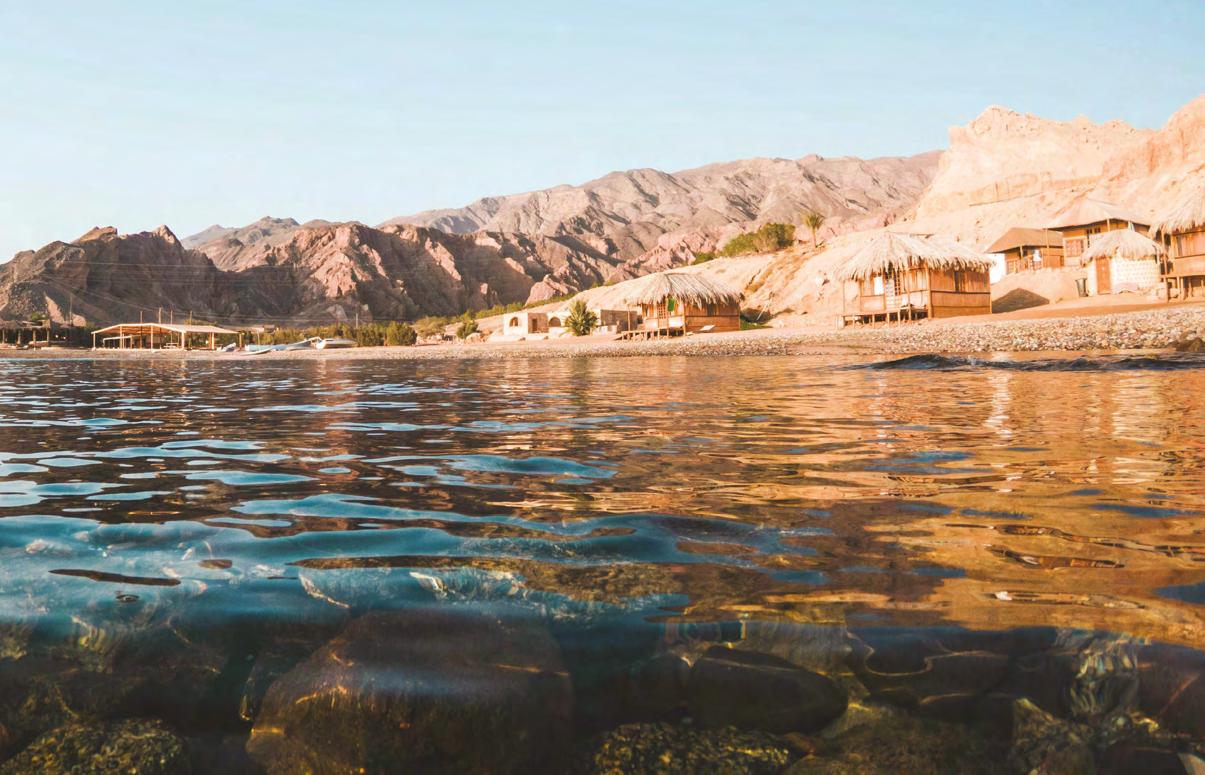
I’ll let you in on a secret. I love old hotels. I love their history, their stories, their soul and charm – and how, over years of operation, they’ve mostly perfected their art and are running like a well-oiled machine. I’m a little hesitant about checking into new properties. But it’s the nature of the job as a travel editor, and so it goes I spend a lot of my life in new properties – and a few of them really defy all expectations. Two new properties that have genuinely grabbed hold of my heart this year, and I’m compelled to share and wax lyrical about, are Qatar’s Our Habitas Ras Abrouq and Six Senses Southern Dunes, The Red Sea in Saudi Arabia.
They’re on different sides of the GCC, around 1,800 kilometres apart, but they share a similar spirit. Both are parts of exciting new developments spearheaded by their governments, both surrounded by ethereally peaceful nature, and both make you feel truly blessed to live in such a beautiful region like the Gulf. I spent three nights at Six Senses Southern Dunes, The Red Sea in May, as the summer started to kick in, and I was spellbound by the landscape – the brown dunes stretching to the horizon. It’s part of the Red Sea project, though 40 minutes inland. I loved the Six Senses’ hallmarks like healthy breakfasts (try the ‘rocket fuel’), homemade snacks on the mini bar, cooking classes, yoga and sound healing (and, of course, the Six Senses Spa) and firmly believe this is one of the best for a luxurious, private retreat to reset and health yourself – physically and mentally. I ate my body weight in complimentary homemade ice cream (Arabic coffee and pistachio flavour), sauna-d and steamed every day, stargazed from my private terrace, and soaked in the deep tub looking out at the desert – it was bliss.
Slightly different is Our Habitas Ras Abrouq, which, while Six Senses feels glossy and exclusive, feels soulful, youthful and social – all hallmarks of the Our Habitas brand. There are no TVs in villas, and there is one restaurant – creating a social hub – and there’s a daily chalkboard of group activities. The resort sits in the protected Dukhan area, a lunar-like landscape with archaeological sites, and offers a best-ofboth words with a desert and beach surrounding. The waves were warm, and I sipped sundowners each day on majlis-style seating on the sands.
I did sound healing in my villa, before enjoying the best night’s sleep, and spent my days reading my book on the terrace (which I did at both) and walking on the beach. Not one to usually eat three meals a day travelling, I didn’t miss a single meal, it was that good. The food is all prepared in-house, from bread to juices and condiments, and there are workshops like Arabic coffee and Sadu weaving. I travelled without a partner and wasn’t bored or lonely for a moment. For couples, families and female (and male) solo travellers looking for desert/beach escape, these really do the trick and are both incredible options for the season ahead.
sixsenses.com, @sixsensessoutherndunes; ourhabitas.com, @habitasrasabrouq


I ate my body weight in complimentary homemade ice cream (Arabic coffee and pistachio flavour), sauna-d and steamed every day, stargazed from my private terrace and soaked in the deep tub looking out at the desert – it was bliss

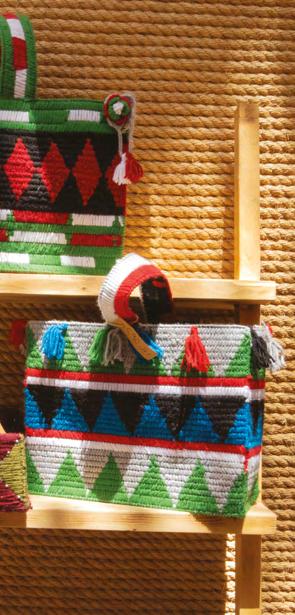
from far left: the
Six



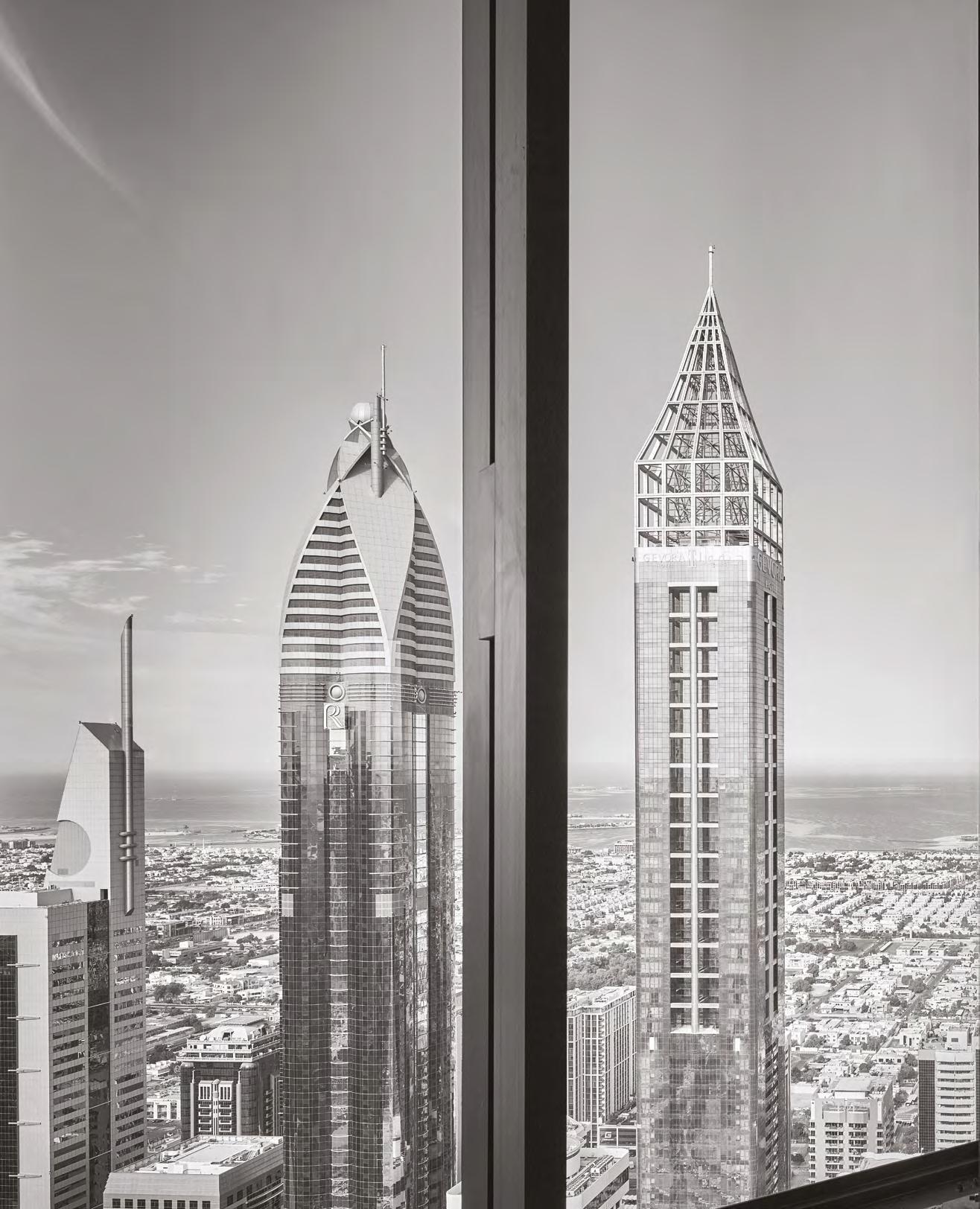
Capping the region’s premier lifestyle and business address tower in style, ICD Brookfield Place’s Sky Suites are redefining the ability to work, play and live well – in the utmost style...
Looking out across the cityscape, from the piercing towers of DIFC and the low-rise jungle of Jumeirah to the brilliant ocean beyond, you’d be forgiven for thinking you were in a luxury penthouse. But this is the 50th floor of ICD Brookfield Place, at an exclusive new address aptly named the Sky Suites – and one revolutionising the workplace.
Rising from the skyline, ICD Brookfield Place is the region’s leading premier lifestyle and business address, home to offices – those of only the most high-brow companies – and to chic dining and wellness destinations. It’s a place to see and be seen, to sip coffee in its brilliantly sunlit Summer Garden and cocktails in its alluring bars. That, or unwind at its beauty and fitness facilities, where household names like Reform Athletica, Skin Laundry, Embody Fitness and 1Rebel jostle next to luxury retail. With such world-class credentials, it’s only fitting that Sky Suites can be superlative in every way – reinventing the traditional work environment by creating a space that is timeless and beautiful, soothing and panoramic, yet highly functional.
Opened this summer, the Sky Suites are the newest addition to ICD Brookfield Place’s pioneering ecosystem, offering their clients an elevated escape from greyscale mundane office spaces – a place to thrive, be creative, build relationships and enjoy spending the day.
Building on the success of The Suites on levels 29, 30, and 31 of ICD Brookfield Place, the new destination has been brought to life by leading architects Marmol Radziner and Associates (MRA) –whose sleek design is reminiscent of an intimate members’ club in London or New York. The space is home to 11 private suites, each spanning 900 to 1,200 square feet, and includes six to nine

workstations, a private meeting room, a private internal office and a pantry.
At the heart of the exclusive communal lounge, filled with art, tactile furnishings and greenery, and framed by soaring floor-to-ceiling windows with breathtaking 360-degree views of the city. Tenants, or ‘members’, will have direct access to level 51 and level 52: level 51 for the much-anticipated Bar des Prés – a fusion of Franco and East Asian flavours – and Italian Riviera-inspired Il Gattopardo. On 52: A glamorous Art Deco bar will evoke the halcyon days of the Twenties, while state-of-the-art meeting and conference facilities are managed by a globally renowned operator.
ICD Brookfield Place is the largest building in the region with the prestigious LEED Platinum certification (Leadership in Energy and Environmental Design), making it not only an architectural marvel but one that’s pioneering and has sustainability as its core. Beyond the suites, tenants and visitors can enjoy ICD’s community, arts programmes, coworking spaces, public art exhibitions and events alongside some of the city’s best-known hospitality destinations –

The Arts Club, The Guild, Josette, La Niña, Lulu & The Beanstalk, plus Emirates’first-ever check-in and experiential facility.
‘This the most remarkable office space in the region, offering businesses an unmatched level of exclusivity, privacy, and sophistication in their workplace environment,’ explains Rob Devereux, CEO of Brookfield Properties Middle East’. And remarkable it really is.
FOR ENQUIRIES AND MORE INFORMATION
@ICDBROOKFIELDPLACE
icdbrookfieldplace.com/sky-suites
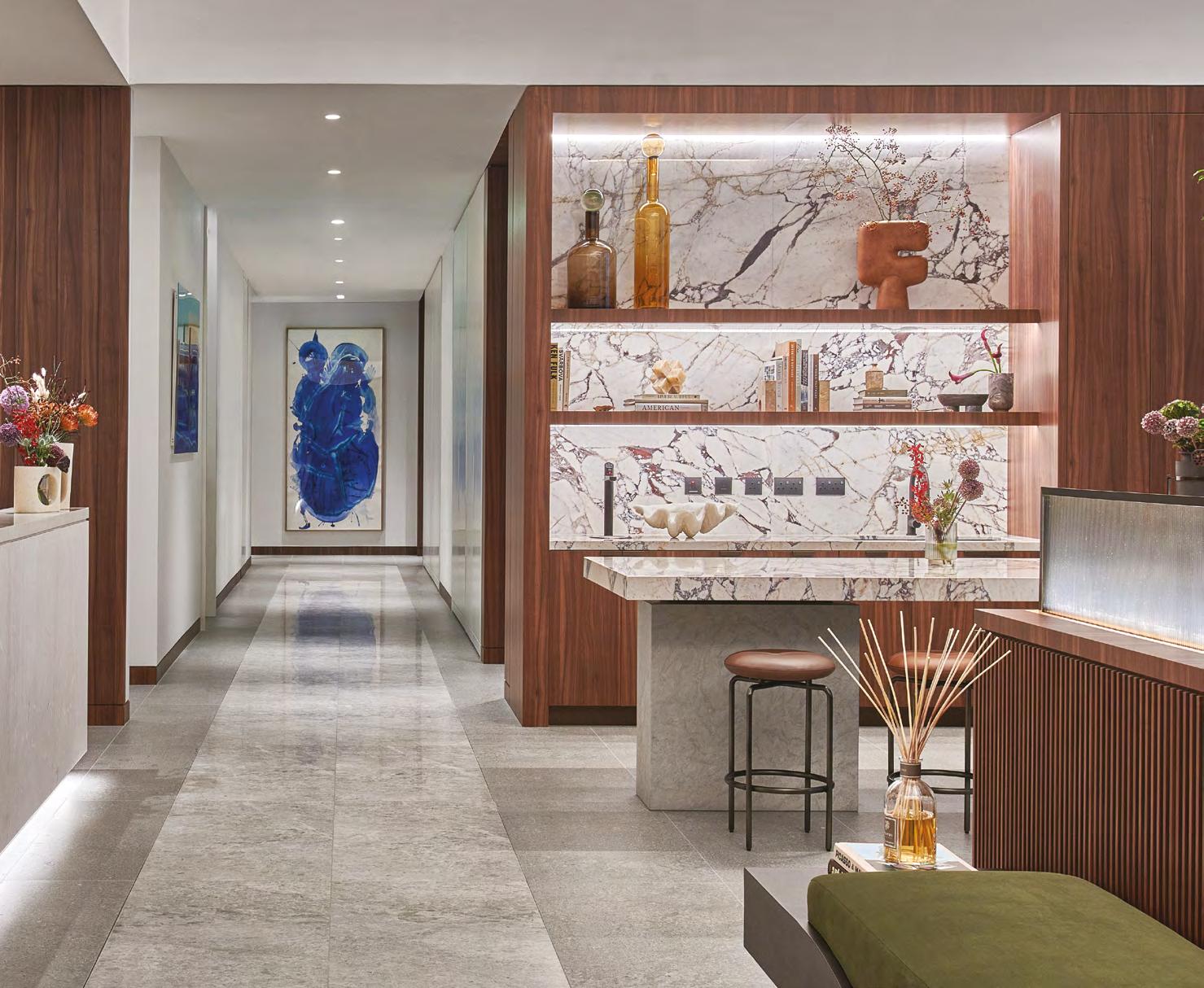

Rixos’ stunning new resort showcases the majestic beauty of Ras Al Khaimah, inviting couples, loved ones, families and solo travellers to enjoy the ultimate all-inclusive experience

It’s hard to define luxury. For some, it’s price; for others, it’s their time. But for travellers, true luxury is having whatever you want, whenever you want – without having to glance at a bill and come back down to earth. It’s being able to book sports and activities and enjoy a stream of included entertainment, never worrying what the little ones are up to. The chance to truly disconnect is the draw of an all-inclusive escape, and one of the most luxurious of them all has arisen from the sands on the shores of Ras Al Khaimah.
Opened this summer, Rixos Al Mairid Ras Al Khaimah is the region’s newest ultraall-inclusive resort, reinventing how travellers see and enjoy the emirate while delivering the world-class experience Rixos is known for. Sandwiched between the emirate’s majestic beaches and mountains on the tranquil shores of Al Mairid, Rixos Al Mairid Ras Al Khaimah showcases the very best of the emirate – known as the UAE’s nature and relaxation capital. Stretching for 1.5 kilometres along a private golden beach, and with seven swimming pools to choose from, the idyllic retreat is an escape from the everyday, with the authentic charm and heritage of Ras Al Khaimah at its soul. Architecture is inspired by the Maghreb dynasty, blending ornate Andalusian elements with Arabian and Turkish influences.
466 luxurious accommodations span one-, two-bedroom and expansive family suites, and the most exceptional – a lavish royal suite – all with serene garden or ocean
views. Guests can relish in the ultimate in hospitality with 10 diverse food and beverage outlets opening over the coming months. Guests can dine on everything from Turkish to Italian, from casual poolside to chic fine dining.
But Rixos’ ultra-inclusive isn’t confined to dining; it’s a 360-degree offering, from the main saltwater swimming pool to the Exclusive Sports Club, which features group fitness classes and gym sessions, and daily wellness programmes. Guests can choose from a variety of activities, including yoga and several invigorating options, ensuring a well-rounded vacation for every traveller. For something special, there’s the Rixos Spa, where bookable treatments transport guests to the Hammams of Turkey.
Little ones will revel in the experience: invited to join the world-famous Rixy Kids Club, an immersive experience with interactive games, master classes, and captivating shows to spark creativity and encourage social interaction. For teens, there’s a supervised, adult-free zone where they can connect with and make new friends and enjoy tournaments, workshops, and games to make everlasting holiday memories. The whole family can come back together for a full calendar of entertainment, from lively dance shows, live music, child-friendly performances, or sets by the resident DJ under Ras Al Khaimah’s canopy of stars.
allinclusive-collection.com; +971 7 228 8844; reservation.rasalkhaimah@rixos.com

1,850 metres in the sky lies a fairytale snow-globe town, where Gucci-branded gondolas zip you to manicured slopes and glossy residents include Hermès, Moncler and Bagatelle. Amongst the opulence, Aman’s chalet is the ultimate quiet-luxury winter escape
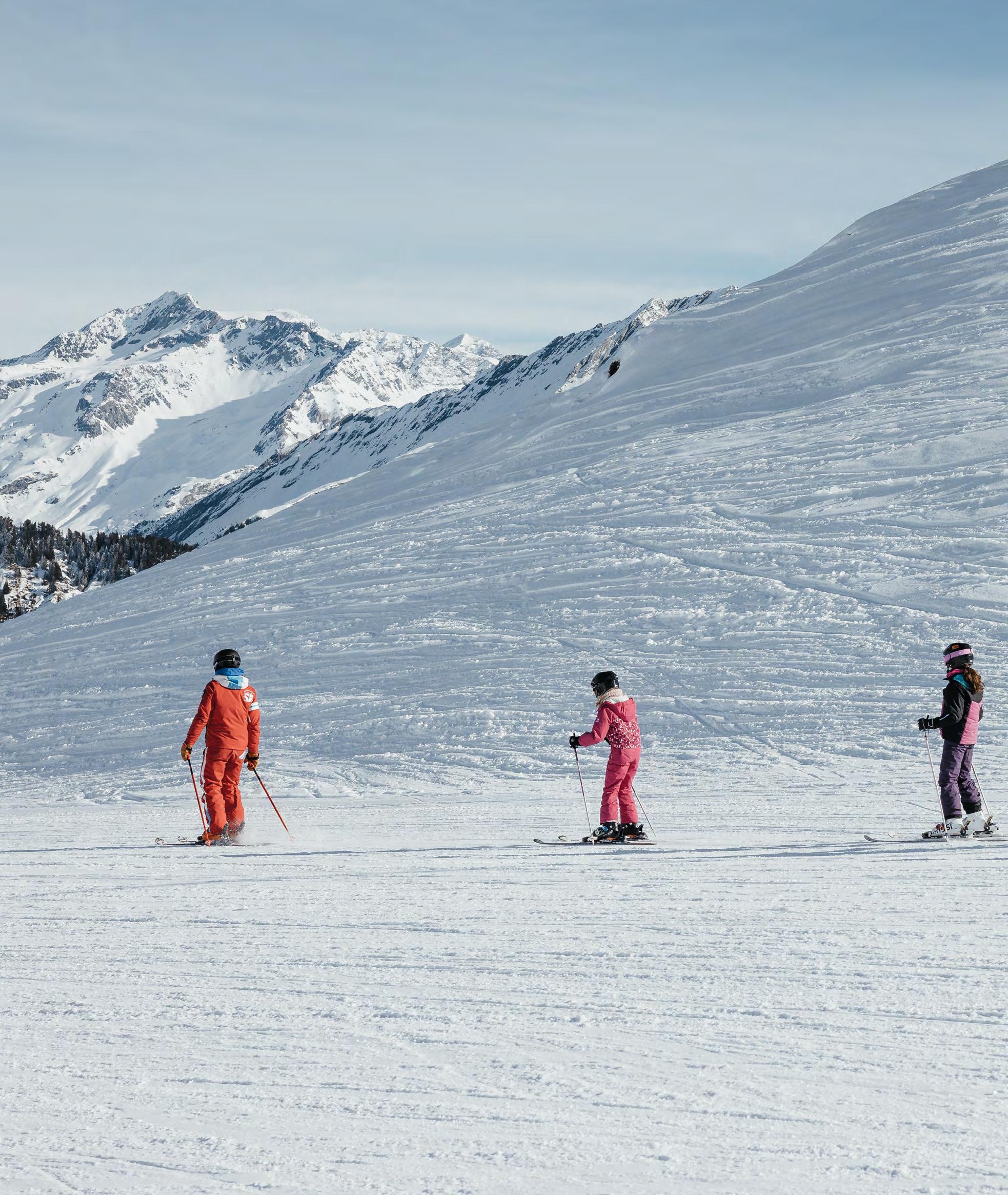
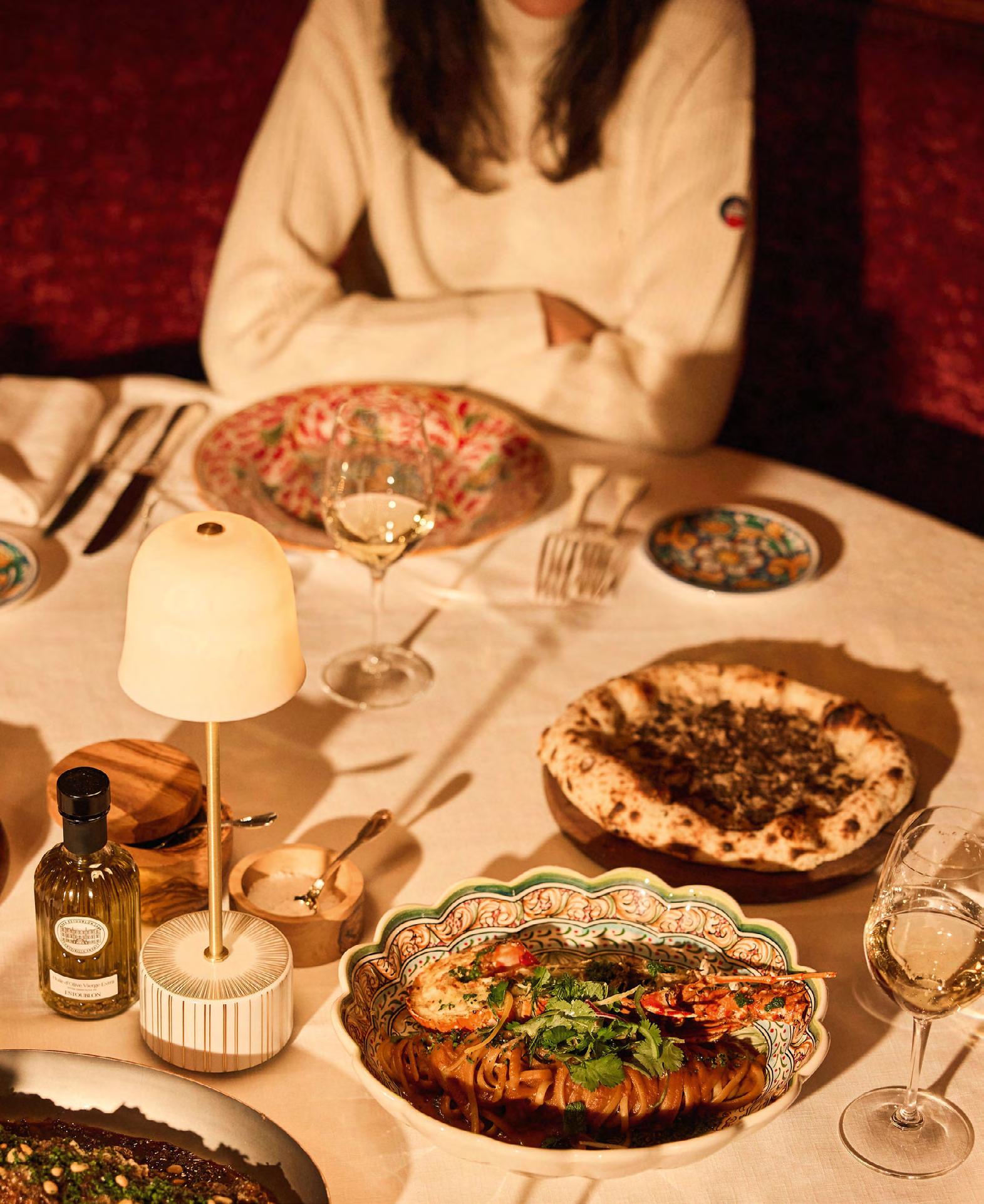

Previous page, from left: Gucci-emblazoned gondolas on the slopes, branded by Alpdest (alpdest.com); skiing on the piste
Clockwise from left: dining at Les Airelles’ Palladio, the peaks of the Vanoise National Park, Aman Le Mélézin
I’m skiing over, what the sign reveals, is a golf course in summer – almost foating past snowcapped mountains which stretch out like a crumpled white bedspread. The piste is perfectly manicured and leads down to the chocolate box town below. The sun is almost blinding, the air as crisp as a ginger snap and Gucci-branded gondola lifts trundle past. Not so trundling are the alpinists who ski past with vigour, clad in Moncler, Loro Piana and Chanel Coco Neige.
This is Courchevel 1850, 1,850 metres above sea level in the peaks of Les Trois Vallées and the highest of Courchevel’s fve villages. Elevated in altitude and stature, Courchevel 1850 is a favourite with celebrities and royals – including the Dubai Royal family, who frequent the resort – and welcomes guests into a charming gingerbread-house world with rustic-chic chalets, fondue restaurants and Gucci, Moncler, Saint Laurent and Dior stores – selling their chicest winter wares, of course.
Every year from December through April, the rugged peaks and charming towns of the three valleys come alive with skiers, winter sports enthusiasts and luxury holidaymakers. The chichiest of them all is Courchevel, just a twohour drive from Geneva and an easy pilgrimage from my UAE home. At the highest point in the resort, Courchevel 1850 is the supermodel of French winter destinations, perfectly preened and oozing with glamour thanks to its wealthy patronage. Amongst the mix of grand Savoyardthemed chalets and global hotel brands, one hotel feels more familiar to a sun-worshipper like me. A far cry from the tropical retreats the brand is known for, Aman Le Mélézin seems more like a grand French fortress than a ski hotel.
It cuts an imposing shape on the edge of the Bellecôte piste, looking over the town and efortlessly combining the brand’s signature Asian aesthetic with the locale. Staf, including
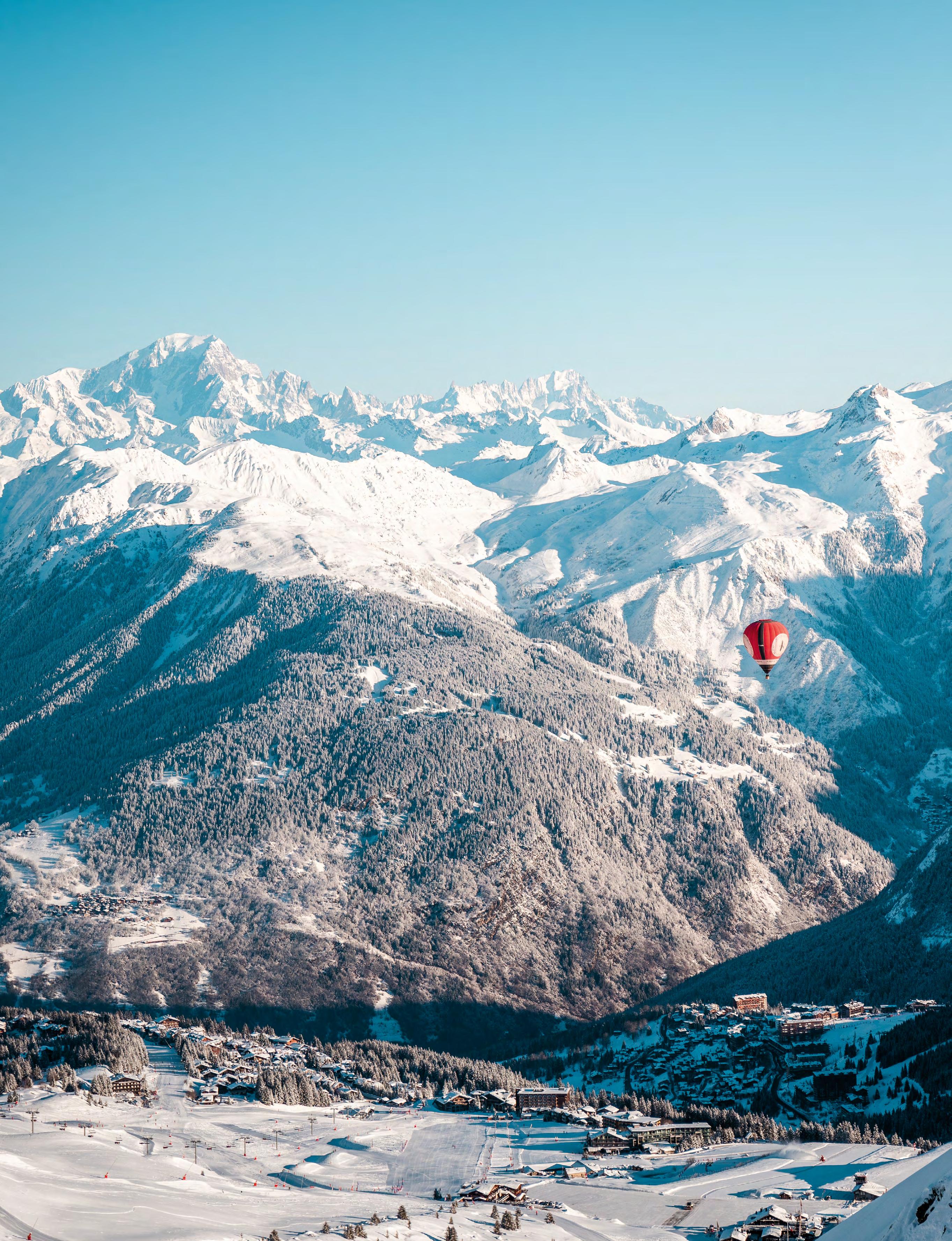


left: Views onto the slopes from Le Chalet de Pierre
genial general manager Alexandra, have worked here for decades: the hotel itself opened in 1992 and is still the only Aman property in France. There’s a familiar comfort in its efortless mix between Oriental and Savoyard. Inside, solid oak panelling and parquet fooring are brightened by fawn carpets, orchids, and bonsai trees, which sit by roaring freplaces. The lobby centres around a gnarled 100-year-old tree, and a Japanese-style ftness studio displays a projection of the gleaming white slopes. Naturally, it’s ski-in, ski-out, the preserve of only the very best. Le Mélézin’s warm, inviting ski room is where I fnd myself each morning – after yoga sessions and a hearty breakfast overlooking the Vanoise peaks. It spills right onto the groomed Bellecôte, manned by a small army of tall, smiling gentlemen issuing words of encouragement.
The team laughs and smiles as they measure for ski boots and skis, all available at the chalet, joined by the day’s usual dose of ski instructors who wait patiently for their monied clients. For lessons in Courchevel, look nowhere else but ESF Courchevel 1850 (half-day from €326) – the iconic ski school born in 1937 with a 500-strong army of instructors teaching children, teens, adults, and both group and private lessons. Said charming teachers are seen all across the town and slopes, in their signature red suits, awaiting their clients in the ski rooms of luxury hotels and whizzing down the slopes each morning, saying hi to seemingly everyone.
Thanks to the typically French approach to learning – fast, brave and no nonsense – in just a few hours, you can go from never having skied before to confdently snow ploughing, stopping, turning, and using the gondola and button lifts. Tjis means you can enjoy the green slopes by yourself for the rest of your trip, even after one lesson. Many families book a tutor for the duration of their stay, not only enjoying the holiday of a lifetime but turning them into accomplished skiers – a priceless skill for life. But you don’t have to ski, or even attempt to ski, to experience the magic of the Alps, and moon biking and snowshoeing are all other popular pursuits, the latter includes zooming around a track on the edge of a dusty fr forest –watching the blue sky turn from red to purple and fnally to star-speckled night.
For a Gulf resident, spending so much time outdoors in the fresh alpine air is indescribably wonderful. And each day, after hours in the snow, I fnd myself dashing, rosy-cheeked, to my room to cosy up by the freplace or soak in the marble tub after such pursuits. Rooms at Aman Le Mélézin are nothing short of



with its Savoyard restaurant and elegant Italian, Palladio. The antithesis to the Japandi minimalism of Le Mélézin, Les Airelles is a sensory overload of pure maximalist Savoyard glamour – especially during the festive season.
sumptuous, a boutique 31 with beamed ceilings, sink-your-toes-in carpets, freplaces and gleaming marble bathrooms. Baths and powerful rainfall showers are stocked with Aman Spa products and it’s impossible not drift into a slumber as the black-out blinds cover the foodlit piste. Soothing the aches from snowy pursuits is Aman’s two-story spa built below the piste, where a vaulted chamber houses an aquamarine pool fanked by Jacuzzis and white loungers. There’s something magical in this ritual, entering, still thawing from the freezing alpine air, to fnd steam rising from the limpid waters. That, and aprés-ski: the most convivial alpine tradition.
In Courchevel 1850, the place to be seen in between slope sessions is Le Chalet de Pierres, its front terrace cluttered with skis and its wooden foor dusted with half-melting snow. Pink-faced skiers zip of their jackets and pile in for oysters, French onion soup, steak tartare, crispy French fries and tartifette – a bubbling pot of reblochon cheese, potato and meat. Nearby is party favourite Bagatelle, which feels like a summer in the South of France on the slopes. Aman Le Mélézin’s half-board package allows for dining in six restaurants across the town, including the chalet-chic Les Airelles hotel
From the outside, Les Airelles Courchevel looks like something from a storybook: the gingerbread castle exterior, with whimsical turrets, dusted in icing sugar snow, twinkling lights and curved balconies. Not to mention the army of beaming staf buzzing around in their signature white baker boystyle uniforms. What makes this hotel so special is its dining programme, with four restaurants trotting traditional Savoyard to refned Italian and the iconic La Table des Airelles grand bufet – last season even saw a zeitgeist collaboration with social media sensation and pastry chef Cédric Grolet. Keen skiers can catch a gondola lift to nearby Meribel for open-air La Folie Douce – the most famous party in the Alps. Le Mélézin itself is home to Nama, the brand’s signature understated Japanese restaurant, and a cosy bar serving French all-day fare. I dabble in them all, the balance adding sublime variety to dining not expected of alpine holidays.
There’s something about gazing onto brilliant snow-capped peaks and breathing in its fresh pine-scented air that is undeniably restorative. And when all this can be done in the splendour of an Aman hotel and riding Gucci-emblazoned gondolas – why would a luxury-loving traveller look anywhere else.
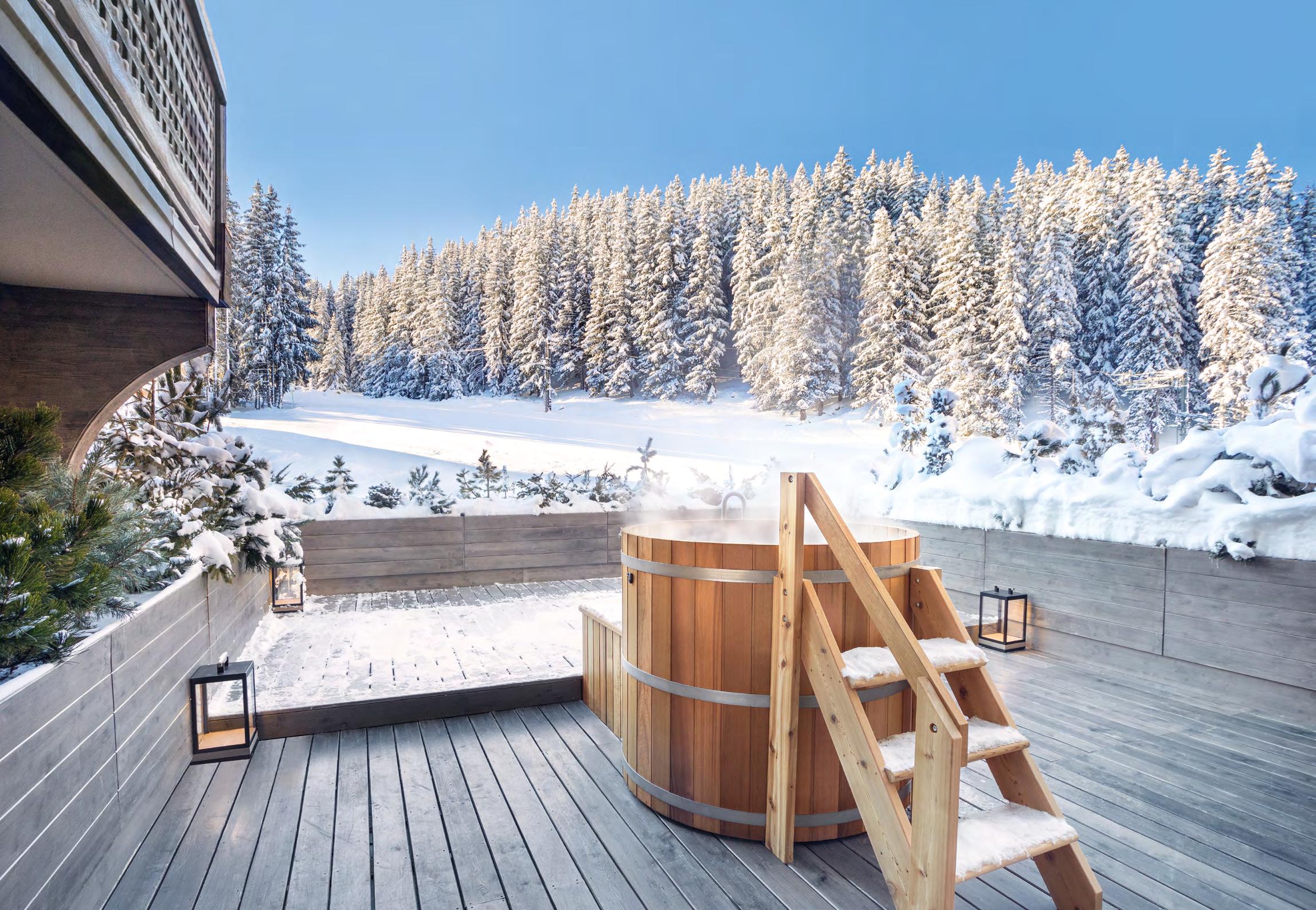
COURCHEVEL ADDRESS BOOK
WHERE TO STAY
Aman Le Mélézin, Aman’s Japandi fortress on the slopes of the Bellecôte Piste. Les Airelles, on the bustling Rue du Jardin Alpins run and as quintessentially chalet chic as it gets. Other big brands like Cheval Blanc, Oetker Collection, Groupe Barrière and Six Senses also have outposts. 200 metres down the slope in 1650, Ultima Collection has a private chalet.
WHERE TO PLAY
Bagatelle brings South of France vibes to the peaks with its signature Mediterranean cuisine, free-flowing rosé and bottle service and good times.
La Folie Douce in Méribel is a short ski away, the iconic slope haunt famed across Europe for its mega parties and après ski energy. The slopes are also lined with pit stops selling crepes euro beers, with throwback tunes, a more casual, laidback, yet party vibe, like Grrizzly&Co.
Aman Le Mélézin’s Japanese restaurnt Nama is the perfect antidote to days on of fondue, bread and raclette, offering sushi, seafood and more. The piste-side bar is perfect for a glass of champagne by the fireplace
Le Chalet de Pierres is the chicest spot for piste-side lunches, come in your ski gear for classic French fare with mountain views from its typically alpine restaurant. The outdoor terrace is more of a party vibe with the feeling of a lux festive market.
Italian Palladio with oak panelling, roaring fireplaces, fresh pasta and ginormous portions. La Table des Airelles is the most lavish buffet in town: a feast of lobster, cheeses, oysters, meats and more.
Restaurant Le Genépi, a storybook hideaway serving tradiitonal fondue with green walnut salad and tots of génépi (herbal liqueur).

Ski’s latest collections are a fabulous fusion of future-thinking and iconic heritage, celebrating skiing and the alpine lifestyle in all its forms, with classics styles and sleek silhouettes. Slope season can’t come soon enough...




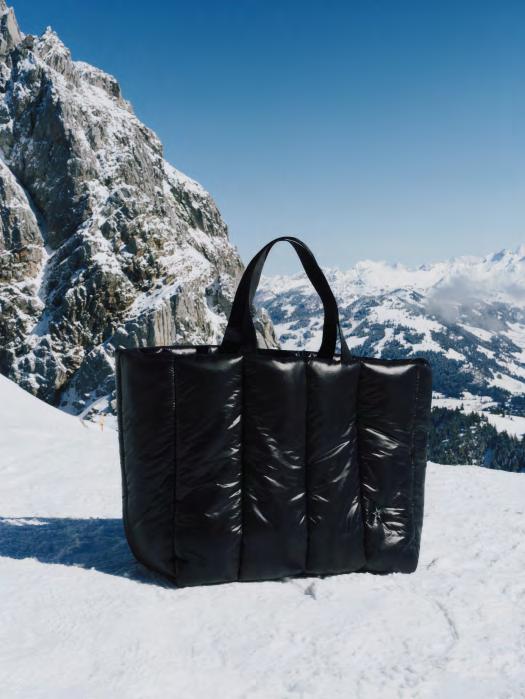


All items Perfect Moment. perfectmoment.com

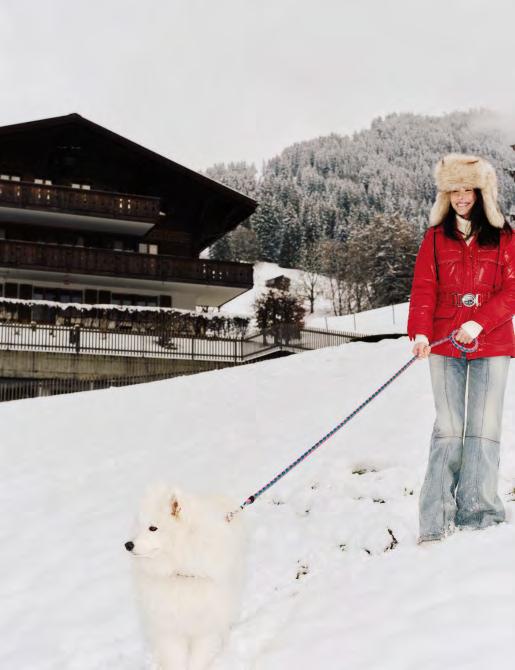

The Eternal City by name and nature, Rome offers unbeatable year-round appeal: delectable food, historical and architecture treasures, timeless beauty and some of Europe’s most phenomenal hotels, both new and old
Words by ISABELLA CRADDOCK

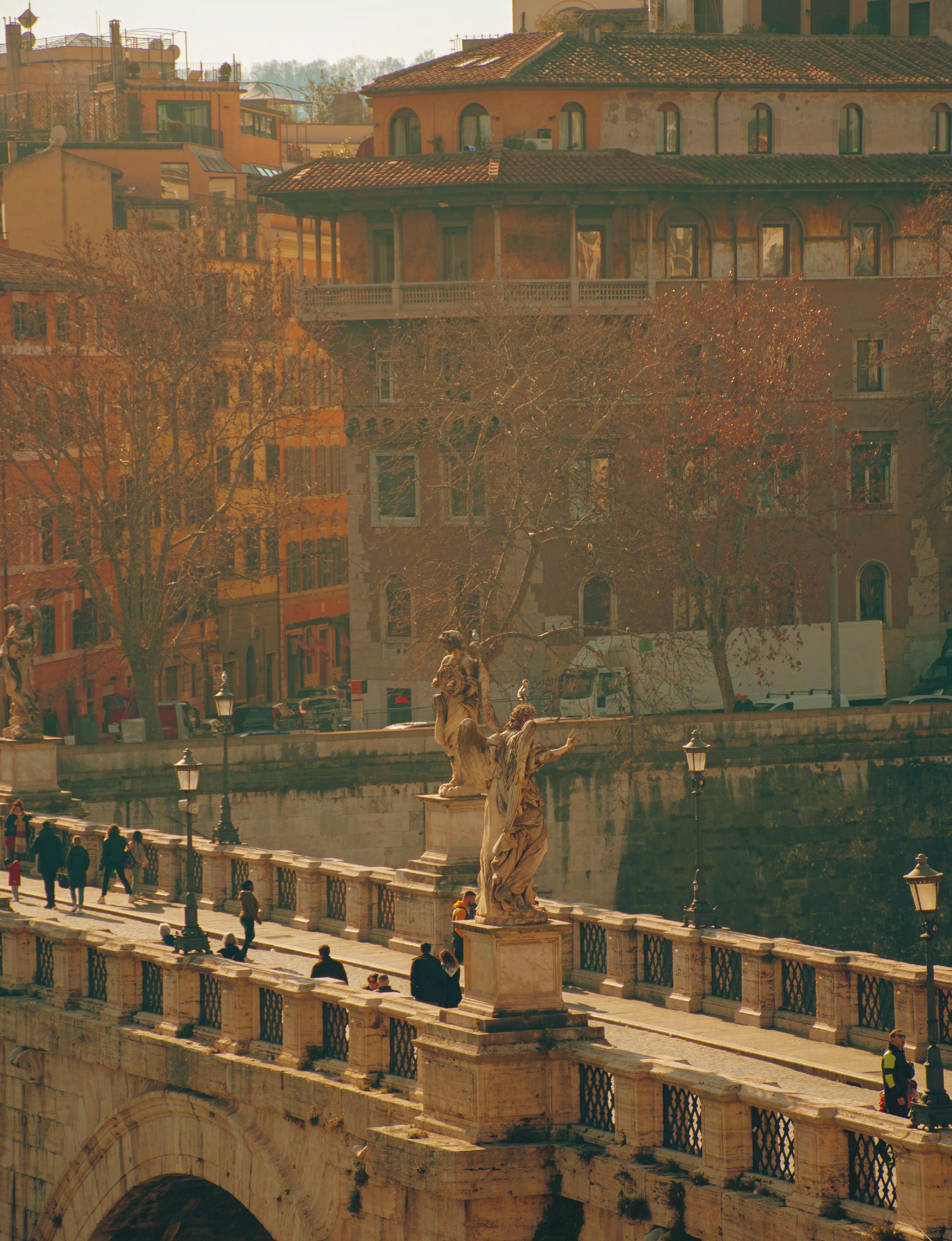
Everyone has their opinion on the most beautiful city in the world: Paris is thrown around, Florence, Cape Town and Jaipur. But for me, there’s nowhere like Rome. Rome is a monument to time itself, a dance between antiquity and classical history – a heady mix of art, street life, ruins, romance, and charisma. Rome is a city where you wander down cobbled lanes and happen to come across an ancient monument, glimpse into a doorway to see a priceless frescoed ceiling, or fnd yourself atop a hill, watching the city unfold like a Renaissance painting. At sunset, the terracotta sprawl glows as orange as aperitivo spritzes. But at night, Rome’s low-rise domes (there are no skyscrapers here) lie in almost darkness – there’s no fash or sparkling lights, and the city does indeed sleep.
Italy’s hot-blooded capital’s year-round appeal is no secret, thanks to its museums and cultural attractions: of course, the Colosseum, Pantheon and Vatican; its trattorias and fne dining restaurants – where bowls of cacio e pepe and Roman pizza are washed down with bottles of Italian wine, and its elegant espresso bars and boutiques – like those on gleaming Via Condutti home to Italian Bulgari, Ferragamo and Gucci. Another reason to visit yearround is its galaxy of fve-star hotels – one of the best scenes in the world right now. New names include everyone from Six Senses and the Rome EDITION to Soho House, Mama Shelter and Anantara. On a summer’s week, we checked into some of the city’s very best, both old and new.
The arrival at Bulgari Roma is as dramatic as it gets – pulling up to the Piazza Augusto Imperatore, home of the ancient Mausoleum of Emperor Augustus – one of Rome’s most impressive yet underrated sites. As only the ninth Bulgari hotel in the world, Bulgari Hotel Roma brings Sixties Italian glamour and the sparkle of its jewellery to the city’s hospitality scene. The opening of Bulgari Hotel Roma was a homecoming for the luxury giant, founded in Rome in 1884 and built on Italian excellence. This tone is set on arrival in the intimate lobby where a 2,000-year-old seated statue of Augustus himself stands proudly under a Murano glass drop chandelier (a loan from the city, thanks to Bulgari’s extension donations to the mausoleum’s renovation). An enflade of gilded rooms unfolds, each with a museum-like case of Bulgari’s glittering jewellery, bags and artwork on the walls. Guests come from all over the world, with a strong clientele from the GCC, and you’ll fnd them on the
sun-dappled Il Cafè by Niko Romito terrace clad in oversized sunglasses and sipping espressos.
Bulgari Hotel Roma’s 114 rooms and suites are a soft and cocoon-like city sanctuary within the historic and imposing stone building. Corridors are dark and moody, with black and gold accents and prints of iconic jewellery designs like the Serpenti watch, but things brighten in the rooms. Warm textiles and soft furnishings create an incredibly plush feeling, with each abode having its own Bulgari-inspired colour palette – either white, gold, ruby or emerald. Our junior suite is all cream and leather, and butter-soft Bulgari throws; our bathroom is decked with goldenyellow mosaic tiles reminiscent of a Roman bath, and complimentary daily pressing makes life breezy. No expense has been spared – from the glossy well-stocked cofee cabinet to the maxi bar for aperitivo – a fresh ice bucket always ready.
The restaurant and bar attract the same refned crowd. Bulgari Hotel Roma has outlets from superstar chef Niko Romito, who is best known for his three-Michelin-starred restaurant Reale in his native Abruzzo. Though we intended to


head out, we ended up in the Bulgari Bar each night, a jewellery box-like hideaway transporting you to glamorous 1960s Italy. We sip Italian wines and enjoy aperitivo on a grey evening and spritzes on the terrace on a steamy summer night. There are nods to Bulgari’s heritage throughout the property – from mosaics from its frst store to nostalgic artwork – and walking it is like wafting through a museum. In this writer’s opinion, the hotel is also home to the most beautiful rooftop in the city – which, while open to external guests for drinks at night, is a jungly residents-only haven in the daytime where you can hide away with a book or cofee and not be disturbed. (bulgarihotels.com;@bvlgarihotels)
THE GRANDE DAME
A few streets over on Via del Babuino lies Rome’s grande dame – the classic, old-money institution to Bulgari’s glossy newness. It’s hard to describe the feeling one gets when walking into Hotel de Russie: perhaps it’s the top-hatted doormen with their cheerful ‘Buongiorno’ or the slinky resident felines – Mona and Lisa – stood to attention, or the immaculate interiors and fresh fowers housed in handmade OTT Sicilian vases. One of the jewels of Italian brand Rocco Forte’s portfolio, Hotel de Russie is a Rome institution that opened in
Glamourous guests flock from all over the city to enjoy coffee and aperitivo and dine in its Secret Garden –2,800 square metres of tumbling terraced greenery full of palm trees, yews and white climbing roses
the early 19th century and has hosted guests like artist Pablo Picasso and poet Jean Cocteau. Glamourous guests fock from all over the city to enjoy cofee and aperitivo and dine in its Secret Garden – 2,800 square metres of tumbling terraced greenery full of palm trees, yews and white climbing roses. The entrance is almost unassuming for such an illustrious property, tucked away from the main thoroughfare on a quieter street bordering the grand Piazza de Polpo and graceful Villa Borghese. We loved the elegant energy of the location – surrounded by shiny designer boutiques, gleaming cobble lanes, Italian trattorias and sophisticated cofee shops. Via Margutta, one of the most beautiful streets in Rome, is right next to the hotel, lined with interior design houses and galleries.
Impossibly glamourous and old-world luxurious, though not stufy in the slightest, Hotel de Russie gets the balance just right. The hotel is always abuzz, with a mix of in-house and external guests – the latter book weeks in advance for a spot in the secret jardin or outdoor restaurant: The Jardin de Russie is perched high above the stone balustrades in the garden under tumbling foliage, where guests sit under white umbrellas and on crisp white tablecloths enjoying breakfast to the sound of running water and chirping birds.
In the warmer months, breakfast feels like a dream – served in the sun-dappled Mosaico: a rose-tinted courtyard with iron tables shaded by candy-striped parasols
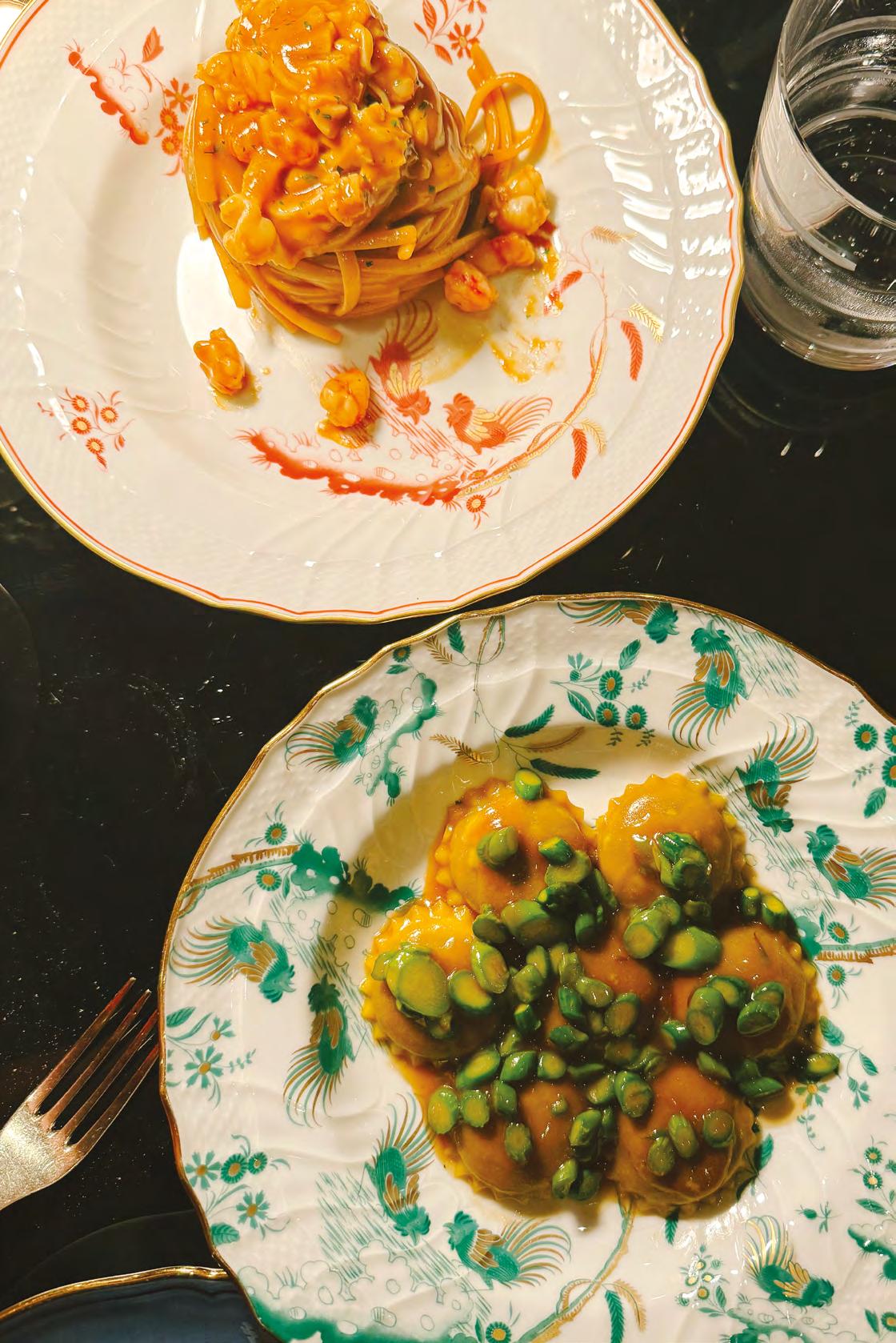
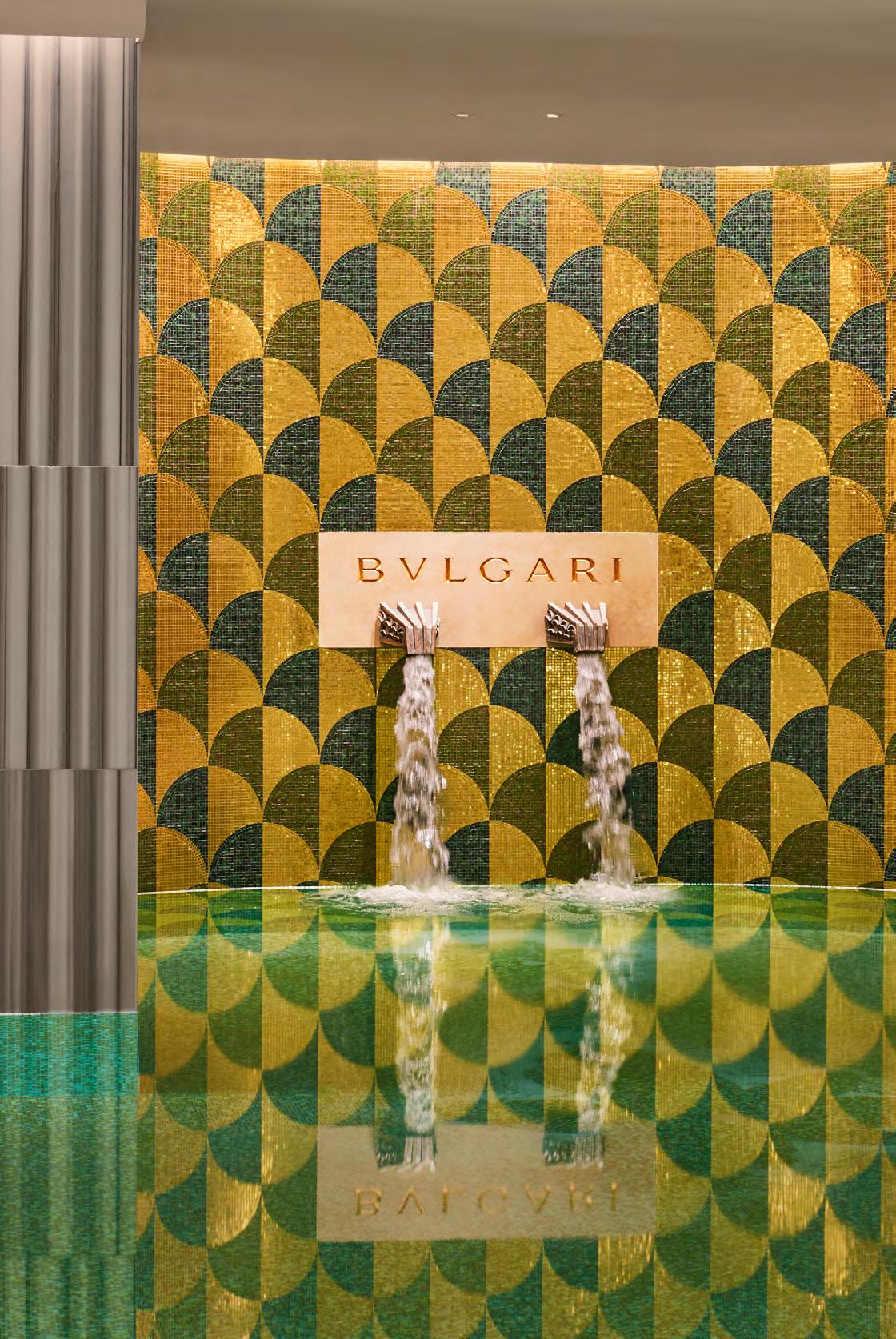


The hotel feels like an Italian countryside palazzo with manicured gardens, an olive-tree-line drive, rolling gardens and a swimming pool – so much, you’d expect to see Cypress trees peeking through, not the dome of St Peter’s Basilica
For cofee, a snack, or (which we never miss each evening) aperitivo, head to the Stravinskij Bar in the internal rosy-hued courtyard. The space is always bustling: with elegant guests and locals in the day reading the paper with espresso or with welldressed guests and Romans come evening. The Stravinskij Bar is one of Rome’s most beautiful and well-known aperitivo spots, and the tables are a sea of orange from frosted Aperol spritzes. (roccofortehotels.com; @hotellderussie)
If Hotel de Russie was Rome’s glamorous grande dame, Hotel de la Ville would be the seductive little sister – located directly at the top of the Spanish Steps and ofering an intimate lobby and narrow corridors. Hotel de la Ville is a cheeky rif on the Grand Tour, the beloved 17th- to 19th-century tradition where the monied boys journeyed across the globe and Italy to become cultured young gentlemen. There’s stucco detailing, Napoleonic yellow wallpaper, teal, busts, grand portraits and repro micro-mosaics, which fow from the lobby to the 100plus rooms and suites. Rooms are a dream: think shades of blues and greens, with burnt orange and mustard, cheeky artwork, 18th-century trends like chinoiserie and neoclassical designs, objets d’art and bold patterned rugs.
In the warmer months, breakfast too feels like a dream –served in the sun-dappled Mosaico: a rose-tinted courtyard with iron tables shaded by candy-striped parasols and serving up freshly pressed organic juices from the bufet’s juice machines and specials like carbonara scrambled eggs. Next door, the ochre-hued Julep Bar serves vermouths, amaros, cocktails and infusions, with printed wallpaper and Grand Tour illustrations adorning the walls. We made full use of the stunning Cielo Rooftop – one of Rome’s top rooftop bars and restaurants – popping in for espressos, beers and apertivo all day long. We never tire of the spectacular views, red-striped parasols and, come night, twinkling lights, DJ and cool crowd. The spa is a real treat, with an underground labyrinth doubling as one of Rome’s most exclusive health clubs. (roccofortehotels.com; @hoteldelavillerome)
Outdoor space, and therefore outdoor swimming pools, are an enigma in Rome, so top hotels are usually home to indoor or subterranean spas and wellness centres. Which is a shame for a gloriously sunny city that turns scorching in the summer months. It’s surprising, then, that sitting on the eastern banks of the Tiber, just metres from the Vatican and Castel Sant’Angelo, is Villa Agrippina Gran Meliá. The hotel feels like an Italian countryside palazzo with manicured gardens, an olive-tree-line drive, rolling gardens and a swimming pool – so much, you’d expect to see Cypress trees peeking through, not the dome of St Peter’s Basilica.
This is the reason to book; alongside the gobsmackingly stunning speciality suites with panoramic views of Rome, hot tubs and private pools. Our address for a night, the aptly named Panoramic Suite, ofers a sweeping vista of the city – best

enjoyed in the bubbling hot tub, glass of Italian sparkling in hand. Botticelli-style paintings above the bed (a design detail in most rooms) add a touch of drama with a playful Melia twist. For something absolutely superlative, book the Agrippina Private Pool Villa – a two-bedroom suite with its own garden and swimming pool, almost unheard of in the Eternal City. Guests step into the former convent-turned-pink palazzo and feel instantly at peace, allowing them to enjoy the Italian sunshine and unwind while walking from the buzz. The hotel’s star dining concept is Folie, a fne-dining Italian eatery championing the ingredients of the Roman Empire. At the same time, Amaro, a decommissioned church, makes you feel like the châtelain of the manor as you sip cofee and read a book – a beautiful art deco-style cocktail bar and lounge with peacock blue accents and parquet foors. In summer, it’s one of the most unique and pleasurable places to bed down in central Rome. (melia.com;@villaagrippinagm)
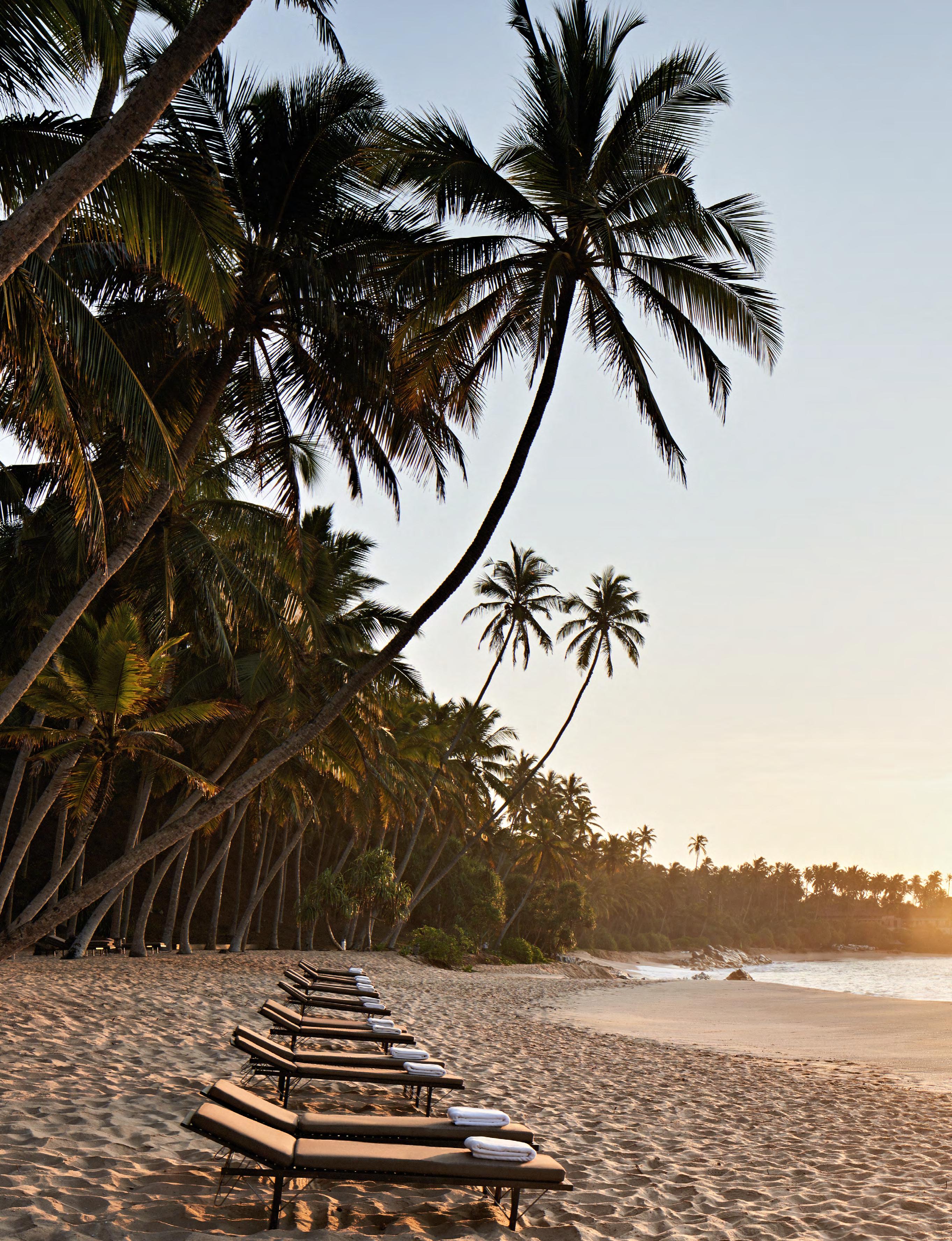

Sri Lanka’s south coast is a beguiling mix of historic towns and laid-back surfing spots, and one elite hotel brand manages to offer the best of both in one magical combined escape
The memories of Sri Lanka stay with you long after you leave – the sweet smell of frangipani, the rugged waves lapping mashed potato sands, and fascinating architecture – a mélange of cultures harking back to the days of Ceylon and pioneering tropical modernist designs. The most popular of Sri Lanka’s destinations is its south coast, home to enchanting historic towns, ramshackle surf spots, cool cafés, beach resorts and more. It’s here, that one of the world’s most elite hotel brands, Aman, has two properties – perfectly primed for travellers to experience the best of both worlds. Amangalla, an ode to period splendour, sits in the walls of the Galle Fort, a UNESCO-protected old town and one of Sri Lanka’s most popular attractions. The second, Amanwella, is a tropical modernist dream on a stretch of rugged coastline, where towering palms willow in the breeze and crashing waves lull guests into their deepest slumber yet. At just a 4.5-hour fight from the UAE, an escape to Sri Lanka is one of the most enchanting, encompassing and rewarding: perfect for a long weekend or Eid escape.
Something comes over you when you enter Amangalla – a rare feeling of complete and utter joy. It could be the sweet smell of frangipani in the air, the ice-cold cinnamon tea and cold towel on arrival, the gentle whirr of ceiling fans and the trundle of tuk-tuks as they pass the veranda. All of the tired, stickiness from the fight and drive ebbs away, entering another worldly feeling that engulfs us for the next three days.
The Galle Forte encompasses a rocky walled promontory in the Bay of Galle, a UNESCO-protected heritage site built by the Portuguese in the 16th century and conquered by the Dutch in the 17th century before falling to the British. Amangalla sits in a 17th-century building that served as both Dutch and British military headquarters before becoming the New Oriental Hotel, catering to European passengers travelling between Europe and Galle. Modern-day Amangalla opened in 2005 – and is a Victoriana-meets-Sri Lankan time machine where guests feel like they’ve stepped into a fairytale.
For a few days, the hotel becomes our home. We wander in the thick tropical gardens, swim in the emerald-tiled pool and retire to our old-world bedroom (opened with a weighty metal turn-key), with charmingly creaky foorboards, lofty ceilings and antique furniture. We relax in rattan chairs on the veranda – peeking through the balustrades onto the tuk-tuks on the street below – and waft around in our bathrobes to the Victorian-style baths and the Aman Spa. The lower foor is like a movie set, with its polished teak furniture, ceiling fans, potted greenery, memorabilia and more, and guests casually foat around – taking breakfast and cocktails on the veranda, afternoon tea in the drawing room, dinner under candlelight.
We take of each day on foot, walking past old mansions now housing artisan cofee shops, boutique hotels, jewellery stores, bars and more, and heading to the coastal ramparts – where we enjoy sundowners at cool new cocktail bar Charlie’s. Outside Amangalla’s entrance is a coastal wall and a popular spot for photographs, so there’s always a buzz, along with a constant furry of tuk-tuks. Listen for the ruby red tuk-tuk bakery loaded with Sri Lankan bread bakery that moves to the tinkle of Beethoven’s Fleur De Lis.
Clockwise from opposite left: hoppers for breakfast on the Amangalla terrace; soaking tubs in period bathrooms; Amangalla swimming pool and garden
Previous page, from left: Amanwella’s palm-strewn beach; suite at Amangalla
Amangalla is one of the most exclusive stays in the country, with just 29 doubles (including some twins) spread across the main historic building and a contemporary garden annexe. Our suite sits on the top foor, up four flights of stairs and is a complete dream: whitewashed walls, the same 150-year-old wooden foors, a four-poster bed, crisp white cotton sheets, rolltop bath, a walk-in shower with vintage white tiles, twin antique basins and arched windows. Period touches include a rattan chaise lounge, the writing desk flled with postcards, and a delicate (and much-need on a sticky summer’s day) Palmyra fan. Fruit bowls are replenished daily with juicy Sri Lankan mango and pineapple, and three complimentary items are pressed a day: a small but incredibly welcomed touch.
Days start with waking up to the Sri Lankan sun pouring through the arched windows, pottering down the stairs and taking a seat on the sun-dappled terrace for Sri Lankan egg hoppers, coconut water,



It could be the sweet smell of frangipani in the air, the ice-cold cinnamon tea and cold towel on arrival, the gentle whirr of ceiling fans and the trundle of tuk-tuks as they pass the veranda

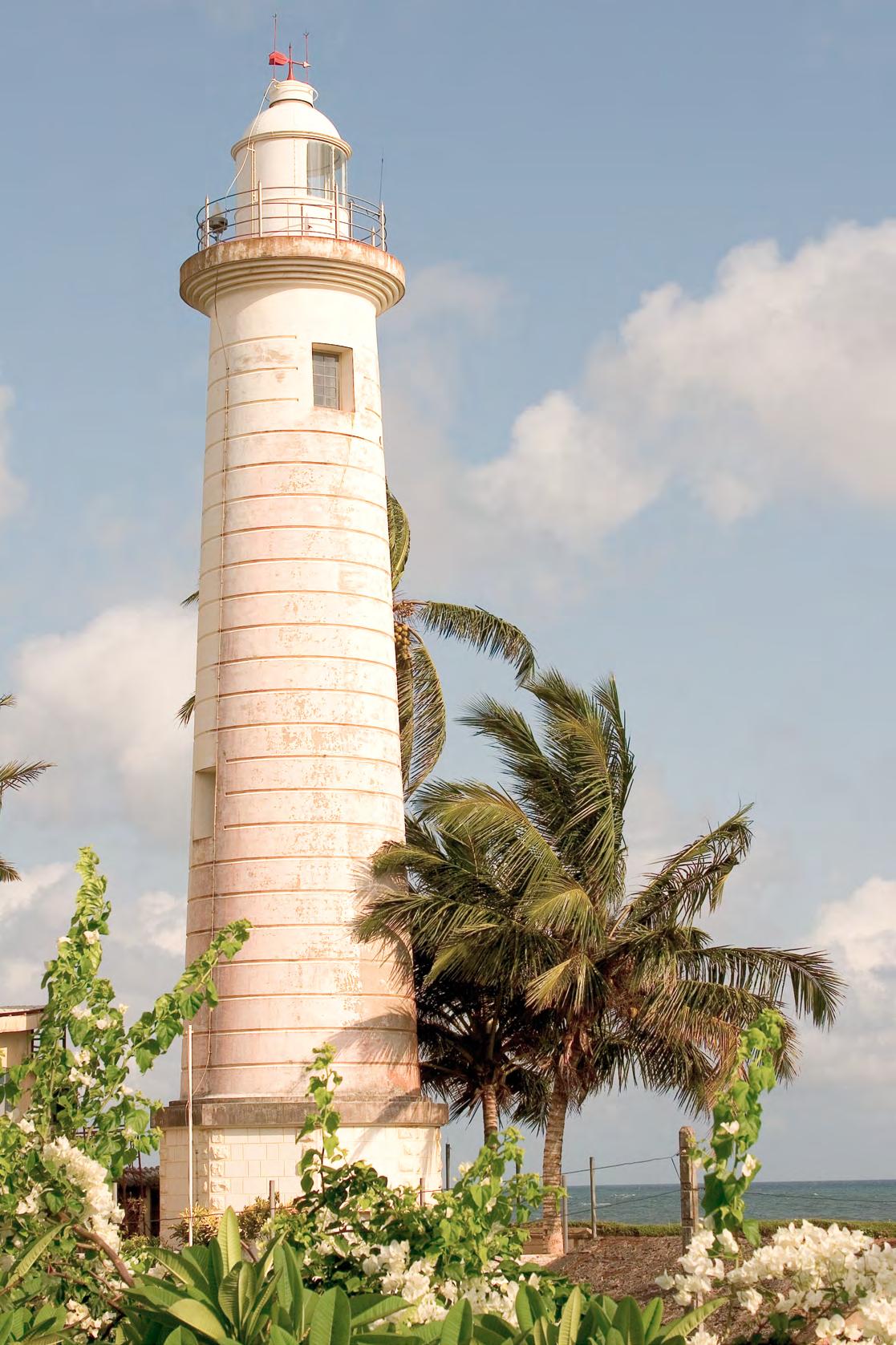
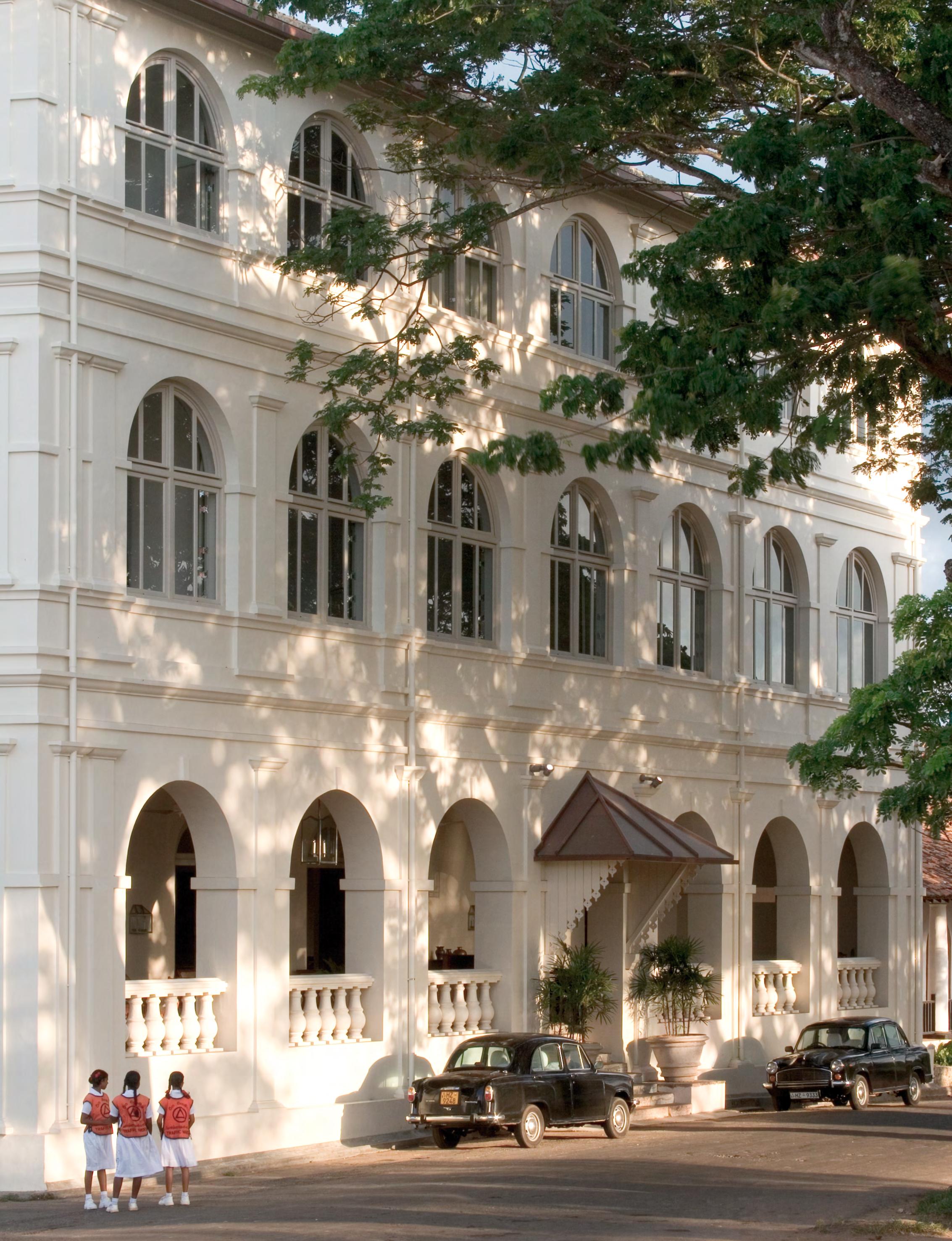

fresh fruit platters and pots of steaming cofee. The feasting continues all day: lunch poolside – Sri Lankan curries in the heat by the emerald waters – a complimentary daily cream tea with pots of delicate Ceylon tea and scones loaded with jam and cream. For a taste of old Ceylon, dress up and enjoy a cocktail in the ‘zaal’ (salon) or on the same veranda, complete with a live Sri Lanka duo (order something with arrack for a truly local taste). Or supper in the dining room where dim fickering lights creating an otherworldly ambience. We fnish nights in the library playing backgammon, overlooking the jungly gardens, sunken into antique furniture and surrounded by vintage memorabilia.
While the chirping, birds and whir of tuk-tuks send you into a lull, there’s nowhere like the Aman Spa –accessed down a garden path into a whitewashed, arched hall complete with fickering candles and rattan chaises. There’s an in-house Ayurvedic physician, and the staf deliver treatments that render you so woozy and relaxed almost incapable of standing – using fragranced lotions and potions with cinnamon and lotus. A retro-style men’s barber by the library also takes you back in time, and all guests get once-daily access to the private hydrotherapy suites, with a warm vitality pool, cold plunge, sauna and steam – charmingly done up like a Victorian bathhouse.
Tempting it is to never leave, Aman’s experiences allow you to explore Galle and southern Sri Lanka – all organised by Aman with the premium car (loaded with drinks and snacks) and simply added to your bill – no need

for the currency of time-consuming research. Your butler is on hand for a complimentary walking tour of the Galle Fort, sharing insider stories and facts. Other experiences, including Geofrey Bawa architecture tours, temple visits and traditional mask painting. There are no TVs in the room, no speakers and no real technology, allowing you to sleep completely disconnected and appreciate the soul and quirks of the property, the odd creak of foorboards, and the whistle of the warm wind.
Sri Lanka is intrinsically linked with tropical modernism thanks to ones of its most famed residents, architect Geofrey Manning Bawa, a driving force in the movement. Today, the design style infuences resorts and residential homes across the island, and on the south coast, on the thick tide-worn sands of Tangalle, is where the most luxurious example of a tropical modernist retreat lies – Amanwella. Located on an untamed palm-strewn beach, where the sound of crashing waves permeates the air, just 27 near identical earth-hued minimalist villas hide in the hillside between frangipani trees. Wild vegetation is juxtaposed with stripped-back clean lines, glass, stone, and indigenous materials – and everything pointed towards the ocean. After two nights in vibrant Galle, Amanwella is the time to switch of, loll in the sunshine and enjoy beach resort life –just 1.5-hour drive from Galle.
Sri Lanka’s south coast is dotted with fshing towns, and the coast of Tangalle is a short drive, or tuk-tuk, from the resort. The arrival is typically Aman – exclusive and out of

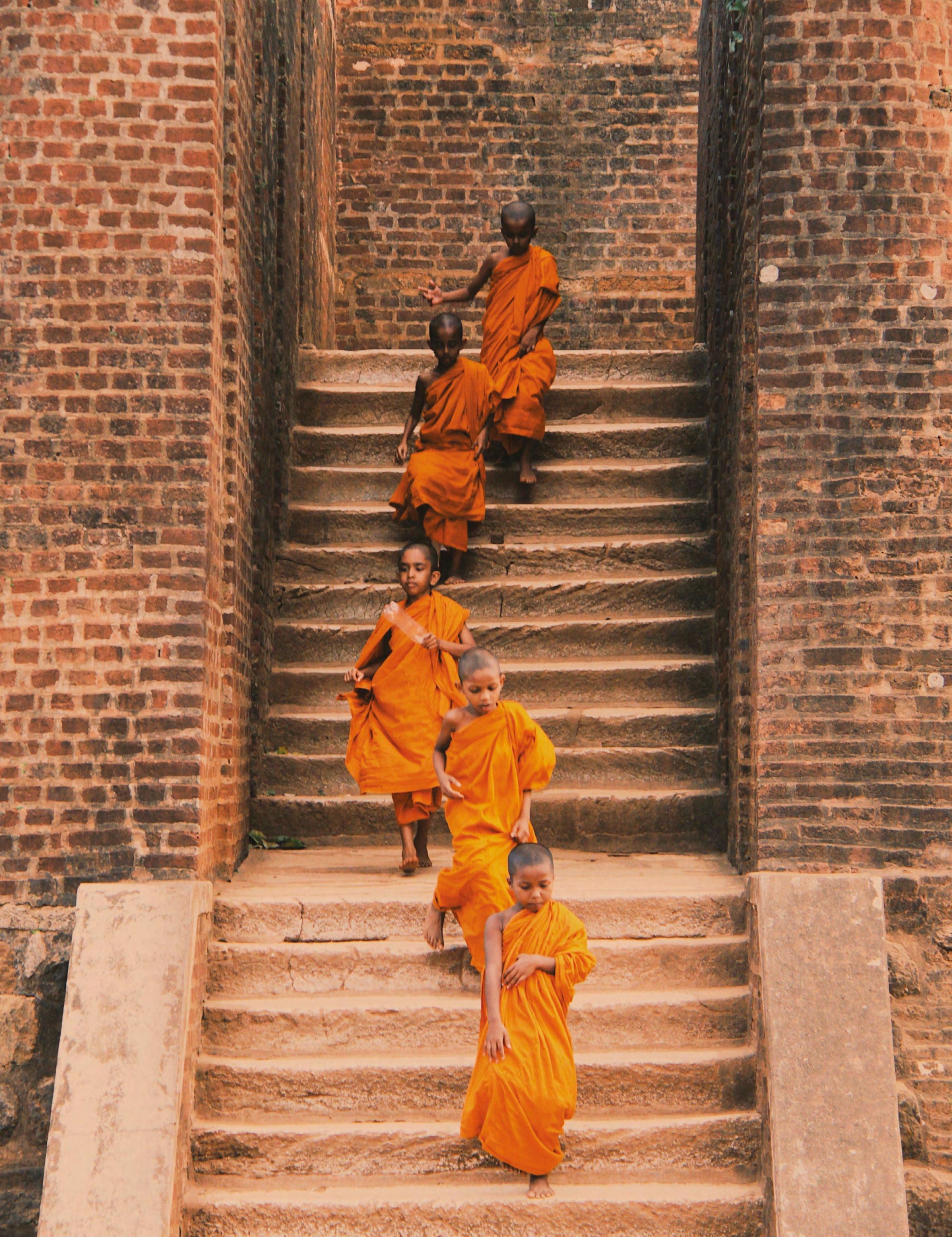
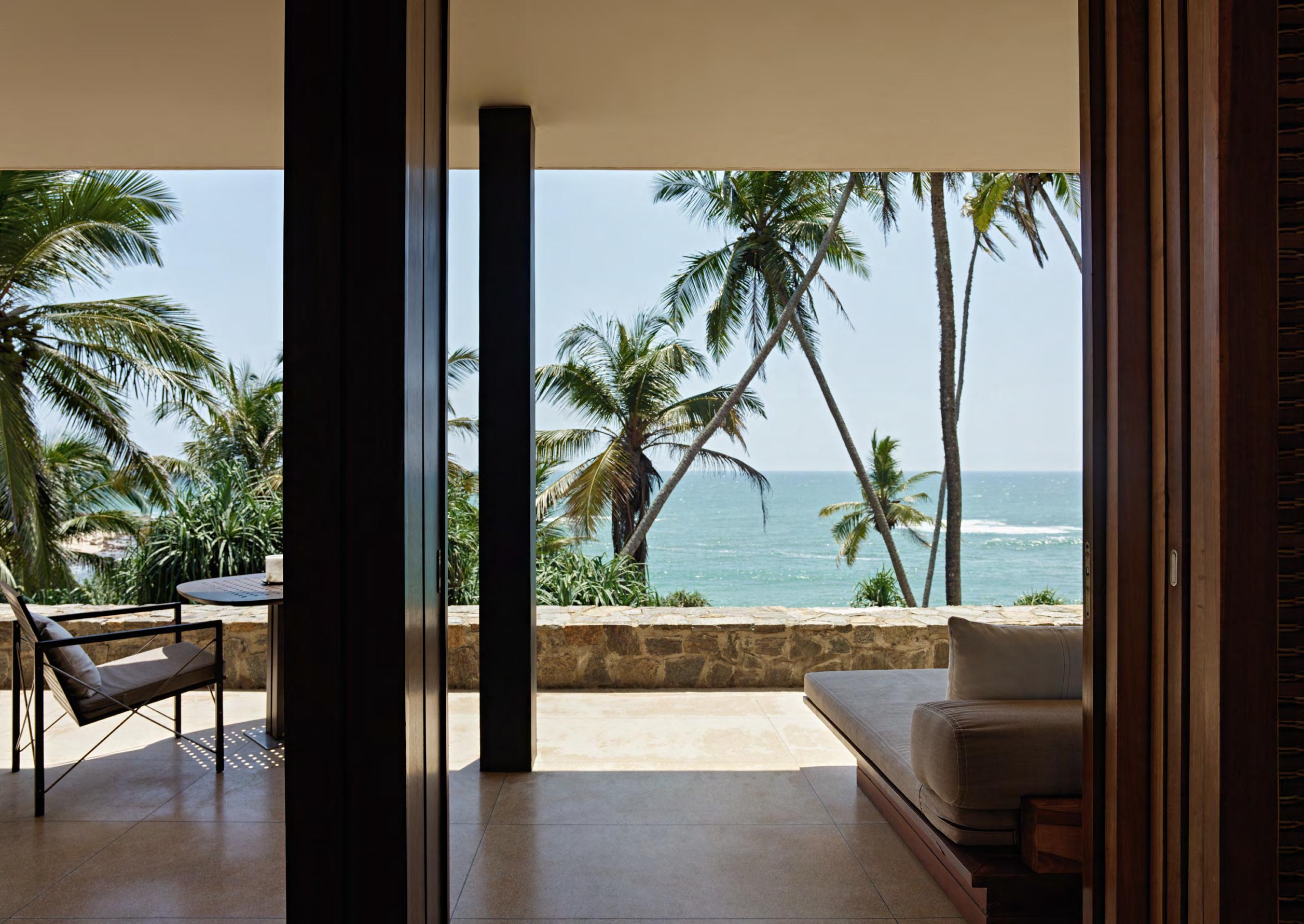
the way –down a rocky, dusty side road leading to the coast. What slowly appears before the car is a 30-acre property on the hillside and an 800-metre beach of the sea deep and blue, not for swimming, but a haven for surfers. Most guests come to Amanwella to hide away in their villa and on the beach –but one evening we venture out to a local beach shack to enjoy fresh fsh and chips and Sri Lankan beer to the sound of waves. Smoke & Bitters, the only Sri Lankan-owned bar in Asia’s 50 Best Bars, is 30 minutes by car and well worth the journey.
With an unimaginable sense of calm, peace and intimacy, Amanwella is best suited to couples, but we encounter families and a lively group of friends on our stay, who laugh and enjoy beers on the beach. Breakfast is peaceful, served to the soundtrack of crashing waves on the terrace, and we start each day with king coconut water –the perfect post-sleep, pre-day hydration – Sri Lankan hoppers, and platters of vivid tropical fruits. As with Aman’s Sri Lankan sister property, Amangalla, a complimentary afternoon tea is served each day – lovely in the late afternoon sunshine. As is dinner at the Beach Club – a chic, slate grey, open space on the sands where guests can enjoy barefoot moonlit dinners of local rock lobster and seafood platters to the tune of a Sri Lankan trio.
27 nearly identical villas are dotted in staggered tiers across the hillside, tumbling down onto the beach. Separated by
frangipani and palms, villas are enclosed within beige stone walls and all the same in layout but vary in size and proximity to the ocean. The back courtyard contains a private jade-green plunge pool that gets a few hours of sun but ofers total privacy, the front is a sea-view terrace with loungers.
We spend the days with the French doors open to hear the crashing waves, and are lulled to sleep by their gentle nightly roar. These waves anchor experiences: the soundtrack to treatments in the spa – two repurposed guest villas –, surfng (and surf lessons) and fshing with local fishermen are all available. Experiences are bookable with your private Aman butler and give an authentic glimpse into the beating heart of this stunning destination. There are options to head out to the not-so-far Yala National Park to spot Sri Lankan leopards and elephants, as many guests do, but we choose to savour this stretch of coast instead. All the more reason to return to the spellbindingly beautiful Sri Lanka.
Amangalla is a two-hour drive from Colombo International Airport, while Amanwella is a threehour drive. The drive between them is around an hour.
private pools
Previous, from left: guests ride on Amanwella tuktuks; Buddhist monks (photography by Javier Saint Jean)

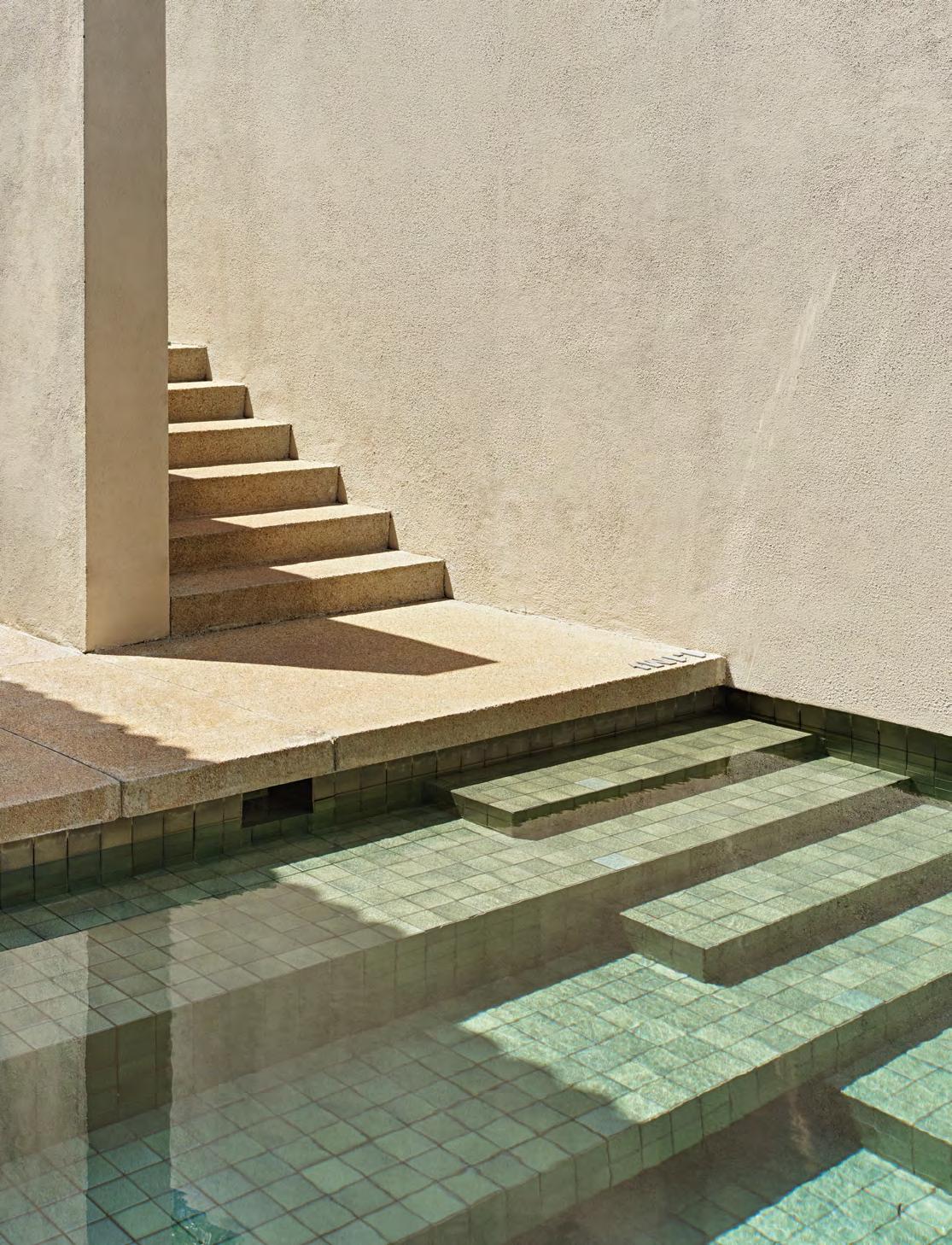
In Galle: Amangalla, a historic property in the ramparts of the Galle Fort with lofty ceilings, antique furnishings and an emerald green swimming pool; The Charleston, a trendy new boutique hotel with cocktail bar, Charlie’s, overlooking the sea and near the lighthouse; Why House, a relaxed, 10-key Sri Lankan villa set in three-acres of tropical gardens 15 minutes from the Galle Fort.
Near Tangalle: Amanwella, the brand’s peaceful and laidback-lux ode to tropical modernism with private pool villas and ocean views; Harding Boutique Hotels; a tropical modernist hideaway in the sleepy, surfy town of Ahangama.
WHERE TO EAT
In Galle: The Tuna & The Crab, fresh daily catch from Galle’s fish market served with simple, delicious flavours in a heritage building with arched verandas and teak beams; Church Street Social in the restored
boutique hotel, Fort Bazaar; Aqua Forno, a relaxed stop for baked goods and Italian street food.
Near Tangalle: RedBeach Seafood Restaurant fresh, simple seafood by the crashing waves with an ex-Amanwella chef; Smoke & Bitters, set on the stunning Pehebiya Beach in Hiriketiya and an Asia’s 50 Best Bar; Verala, beachside dining with Sri Lankan flair at Amanwella’s neighbour, Anantara Peace Haven Tangalle Resort.
In Galle: tour the old ramparts of the Galle Fort, visit the fort’s museums; go surfing at Dewata Beach or snorkelling in Unawatuna Beach; enjoy the city’s cocktail bars, day spas and boutique shops.
Near Tangalle: Visit the national parks of Yala, Bundala and Udawalawe; climb to the top of the Mulgirigala Rock Temple; go surfing, diving and cycling through paddy fields.

Home to 16 pieds-à-terre above its famous Club, the Arts Club London doubles as (perhaps) London’s chicest, most exclusive small hotel...
For a former long-time London resident, there’s something almost mischievous about running across Mayfair’s Dover Street in the early morning: hotel slippers on, the weak sun waking up the largely empty lane. It’s a daily ritual I thoroughly enjoy during our stay: zipping from the warm 18th-century townhouse of 40 Dover Street to the Lanserhof clinic across the street to start the day with Pilates and cryotherapy before popping back for full English in the Club’s Brasserie. For your stay at The Arts Club, you feel like a resident of this salubrious address, becoming an honourary member for your stay as you fit between the Club and your upstairs pied-à-terre
It’s no secret The Arts Club is a London institution; its name precedes it across the world. Established in 1863, it’s one of the city’s oldest insitutions, founded as a safe space for creatives by fgures including Charles Dickens, Anthony Trollope and Lord Leighton. Today, it’s a fve-storey hideaway of elegant, artistic spaces for co-working, power lunches, networking, cultural immersion and relaxed afternoons. At night, it’s drinks and dancing into the small hours – all the preserve of its illustrious members and their guests, of course. The brand’s name made its way across Europe to the Gulf in December 2020 when it opened its frst international outpost in Dubai at ICD Brookfeld Place. The Arts Club Dubai has since become the members’ only address in the city. In the UK capital, this chic space is home to what could also be the smallest and most exclusive luxury hotel in central London – open to members and non-members for an experience that feels more like residing in an art collector’s Mayfair residence than a hotel.
Located on the upper two foors of the Club, The Arts Club’s rooms and suites invite guests into its exclusive world, and for their stay, they become honourary members of the Club and Lanserhof at The Arts Club – a stroll across Dover Street at number 18. Staying allows guests to become members of this elite and beautiful little world, creating more than just a hotel but the feeling of a select London community. Adding privacy and a chance to skip the strict dress code as you sneak in and out, The Arts Club London’s hotel rooms are accessed by a separate door to the main Club entrance, under a futtering white flag with an impeccably dressed doorman.
Rooms double as stylish apartments and everything you’d expect of a Mayfair hideaway, while suites have art deco bathrooms, stand-alone rolltop baths, huge beds with crisp white linen and a seperate living area – with glossy walnut furniture piled high with great cofee tables and fresh flowers.

Baptized In Butter* on display in the Club; a suite’s sumptous rolltop soaking tub
There are just four room categories, adding to the simplicity and exclusivity of the experience – all the same in impeccable taste and service but diferent in design. Deluxe King Rooms are perfectly appointed and ideal for solo travellers and those on the go, with cast iron tubs and Guy Bourdin and John Baldessari artworks, while junior and suites have outdoor balconies –looking out onto the leafy courtyard and across the rafters of Mayfair. The Penthouse is one of Mayfair’s most elite keys – with a separate kitchen and dining room, a bedroom equipped with the fnest Beltrami silk linen, and artworks by some of the most infuential contemporary artists today, including Jessica Craig-Martin and Stefanie Schneider. And a rooftop terrace – where butlers can put on an impromptu gettogether for friends or even an intimate event.
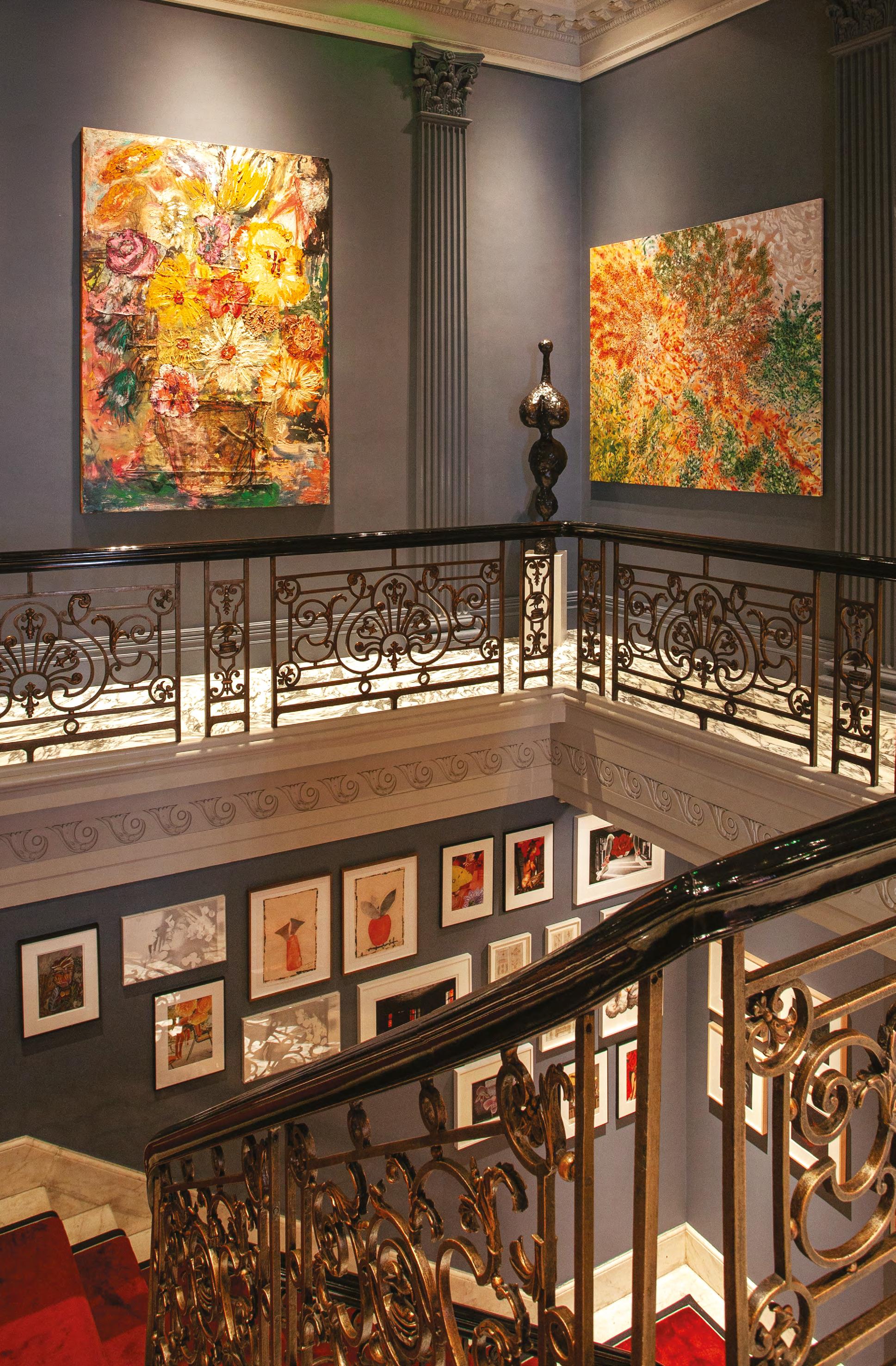


display until January 2025. Other works include pieces from the Club’s permanent collection, framing the grand staircase.
Overnight stays come with 24-hour butler service – ours, called by a discreet button on our writing desk – and daily breakfast, enjoyed in the bright and beautiful Brasserie. Experiencing the mercurial London weather, we hide away in the charming garden under the foliage one morning, enjoying scrambled eggs, pots of cofee and freshly baked pastries. The next, it’s tucked in the corner of the Brasserie watching the rain – as art deco wall sconces create a warming and comforting glow. It can also be enjoyed in bed, served under silver cloches as you prop up in your plump feather pillows. Lunch at The Arts Club is an institution where both power lunches and languid afairs take from 12 to gone 3pm. It’s a must-do of the stay, with chopped salads, fresh pasta, and sharing plates. Elsewhere in the townhouse, there’s Japanese Kyubi, Italian Ofelia Members’ Lounge (Ofelia is now also open in Dubai), tobacconist Oscuro and late-night cocktail bar Leo’s. In the colourful public spaces, we order a cofee and take in Dafodils Baptized In Butter*, its latest exhibition featuring works by more than 36 artists. Exploring the countless symbolic, mystical and art historical meanings of fowers, it’s curated by Amelie von Wedel and Pernilla Holmes and on
Hotel guests also become members of Lanserhof at the Arts Club – an ofshoot of the famed German wellness known for its efective clinics that blend scientifc and holistic health in Tyrol, Tegernsee and Sylt. Guests receive a voucher for a complimentary cryotherapy session or a £150 towards one of its personalised infusion therapies – targeted treatments for jetlag, immunity and more and an invigorating to wake for a day in London. There’s also the gym – a brilliant white space with Technogym equipment – and the studios, where classes like Reformer Pilates, yoga and HIIT ofer an intimate and targeted experience. Rooms where cutting-edge scientifc and medical treatments are conducted lie next to treatment spaces for massages and facials by fellow German wellness giant Augustinus Bader and a lounge for healthy lunches and nutrient-dense smoothies.
The Arts Club London ofers a unique take on a hotel experience that is more residential, more cultured, more intimate, and exclusive –managing to extend its members’ club feeling to its rooms and create a true residential style in the heart of Mayfair.
For hotel reservation requests, visit theartsclub.co.uk. @the_arts_club

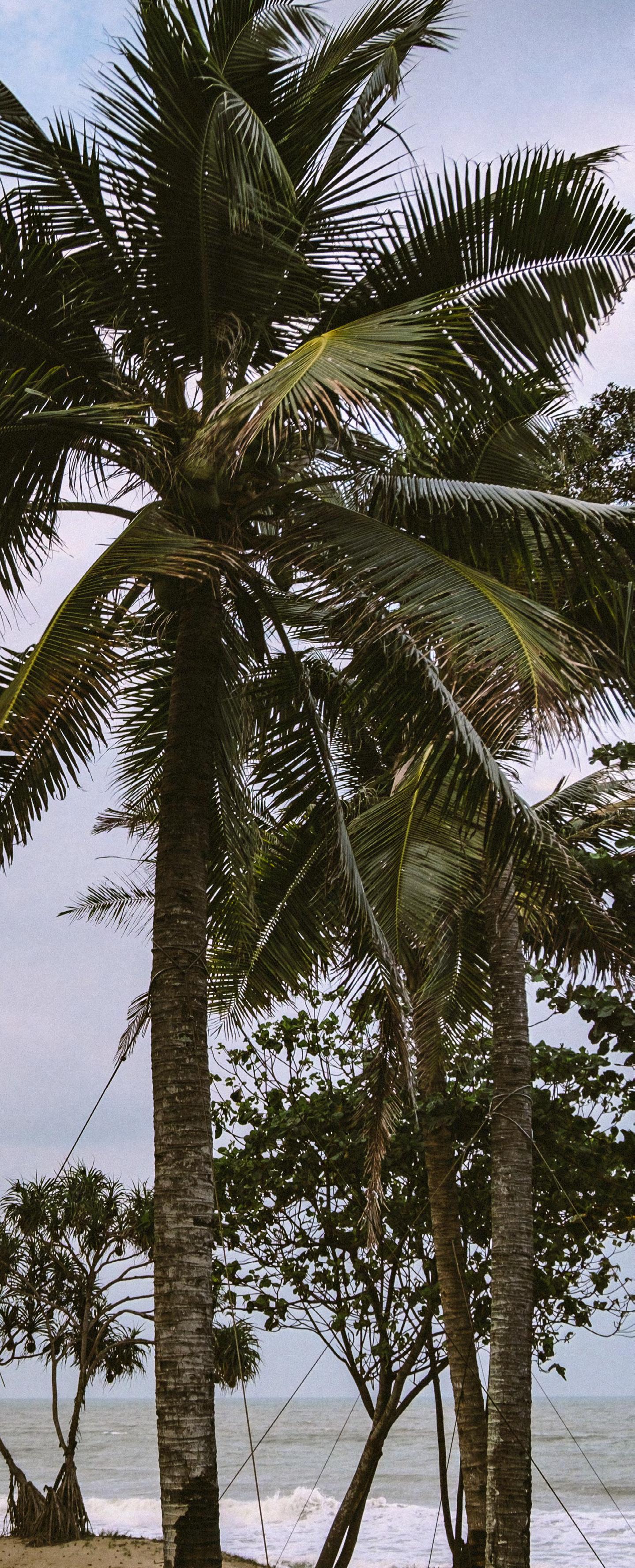
Two hours from Singapore, on a stretch of mangroves and golden beaches, Malaysia’s most exciting new beach development has birthed a world-class family escape
Malaysia’s beach scene has long been confned to the likes of Langkawi and Redang. But just before the Pandemic, in a bid to bolster this coveted section of the tourism trade, Khazanah, Malaysia’s sovereign wealth fund, announced the development of Desaru – a strip of coastline in the south of the country just two hours from Singapore. The coastline has long been there, home to mangroves and untamed beaches, but only in recent years – thanks to the development –has a handful of shiny new hotels, with the likes of One & Only, The Westin, Hard Rock, and perhaps the most universally appealing, Anantara Desaru Coast Resort & Villas, popping up along the jungle-fringed coastline. With such a short drive from Singapore, the coastline and its resort attract plenty of international and Singaporean travellers and those who come for a weekend escape from the nearby Malaysian city, Johor Bahru.
Desaru Coast sits on the capricious shores of the South China Sea and comprises thick tropical vegetation, mangroves, nature reserves and more – ofering an escape immersed in nature. With the pulsating island state of Singapore a short drive away, with its international airport hub and wondrous attractions and hotels, it makes for a great city and beach escape for international travellers. The coast itself is spread out and peaceful, though there’s plenty to do. Travellers can resort hop, trying neighbouring restaurants, or head into nearby Johor Bahru to explore its quintessentially Malaysian old town with its food stalls, charming shops, temples (both Hindu and Buddhist), heritage walks and more.
Anantara Desaru Coast Resort & Villas is almost a destination in two parts: a more traditional Malay-feeling beach resort, with rooms and suites with dark wooden furniture and private balconies, and the true gem of the coastline, and our home for three nights, its tropical modernist villas. Hidden in thick vegetation and backing onto the sands, they’re all foor-to-ceiling windows, clean lines and striking minimalism – juxtaposing against the untamed jungle and coast and creating an escape that’s both wild and authentic, luxurious and modern.
Travelling with friends, we check into a stunning fourbedroom residence – home to two beautiful ocean-front
Desaru Coast sits on the capricious shores of the South China Sea and comprises thick tropical vegetation, mangroves, nature reserves, golden beaches and more
bedrooms and two further double bedrooms with spacious private bathrooms. The open plan living space makes you never want to leave – with a raised level kitchen and dining room with an impressive island, cofee machine, stocked mini-bar, fridge of snacks and drinks, and more, plus a large dining table to ft the entire group. Out on the terrace, there are more places to sit, drink, and dine- an outdoor dining table and seating area overlooking the pool. For long stays, the private kitchen is a treat to whip up meals from local markets or have the resort’s private chef come over and cook – part of Anantara’s Dining by Design. Villas come with private butler service – available via Whatsapp – and ours bring us cofee in the morning, lay out bountiful breakfast spreads on our outdoor dining table and organise laundry and spa bookings, all with charming smiles.
As expected in Malaysia, a country renowned worldwide for its delicious and colourful cuisine, the food is sublime. The hub is Turmeric, with a traditional dark dining room and outdoor options – including a terrace overlooking the main pool and intimate side terrace. It ofers the usual continental afair alongside live cooking stations and Malay classics. We enjoy a dinner here of crispy sharing starters, favourful curries and desserts like mango sticky rice and shaved ice. The Infnity Bar and Observatory Bar offer a more laidback dining spot – perched in striking positions with great cocktails and bites, plus a rotating bufet option. There are plenty of other spots around the resort ofering everything all day – from morning to midnight snacks. Making the most of our spectacular villas and their scenic and stylish seating areas, we enjoy Anantara’s signature Dining by Design experience, where a private chef will make you anything, anywhere in the resort. After a topical rainstorm, we watch the sky fll with pinks and oranges, a warm breeze wash over us, and a chef barbecues from the privacy of our sprawling garden and terrace.
What’s lovely about Anantara Desaru Coast is that the resort is big, but not too big, meaning it’s easy to wander around (though golf buggies are freely available), but it is
impossible to get bored. There’s so much to see and so many places to hide away in – making it the ideal family escape for those wanting to fy and flop but also for those who don’t. There’s a lake-like main swimming pool, framed by plenty of loungers, plus a second swimming pool, a kid’s club and a teen’s club. The superstar, however, is the beach – golden, long, sandy and primed for watersports (though swimming is only encouraged from mid-May to mid-August due to choppy waters). The famed Anantara Spa also get a Malaysian makeover, ofering Malay treatments alongside the brand’s signature Thai rituals. Our Anantara Signature Massage melts away any travel aches and creaks – managing to hit every spot in a way very few but Anantara hotels manage to do. The spa is a beautiful and tranquil spot to enjoy herbal tea or read a book – with a sun-dappled garden and water features creating a wonderful sense of calm.
While the wild yet perfectly tamed and beautiful coastline, the resort and its incredible villas will make you never want to leave, guests have to book one of the many excursions and activities available on the coast – all easily arranged with Anantara’s concierges. One morning, we head out to the Desaru mangroves, where conservation projects are rebuilding these wildlife hubs. The Desaru Fruit Farm is also a few minutes from the hotel, where little ones will enjoy exploring, picking and tasting fruit, and having furry animal encounters in the petting zoo.
Anantara Desaru Coast Resort & Villas is around 100km from Singapore and its international airport. The drive can take signifcantly longer at peak commuter times and on Saturday mornings when Singapore residents leave the island state. Travellers must pass Singapore and Malaysia immigration checkpoints, but it’s all incredibly fast and efcient when there. Malaysia’s Senai International Airport is around an hour’s drive, and it has domestic fights across Malaysia and international fights to and from Bangkok, Ho Chi Minh, Jakarta, Guangzhou, and Haikou. Villas from aboutAED6,800anight;anantara.com;@anantaradesaru


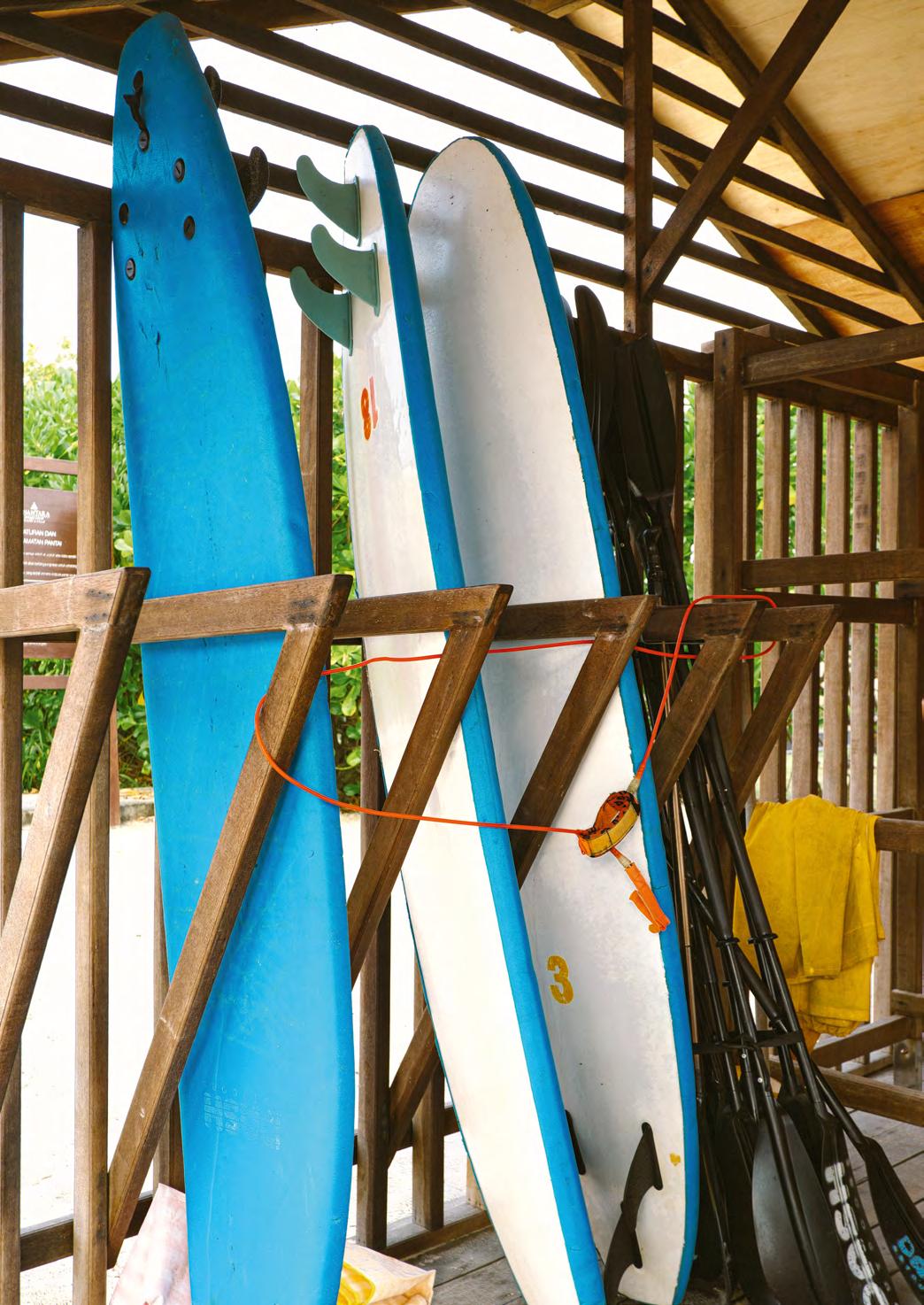

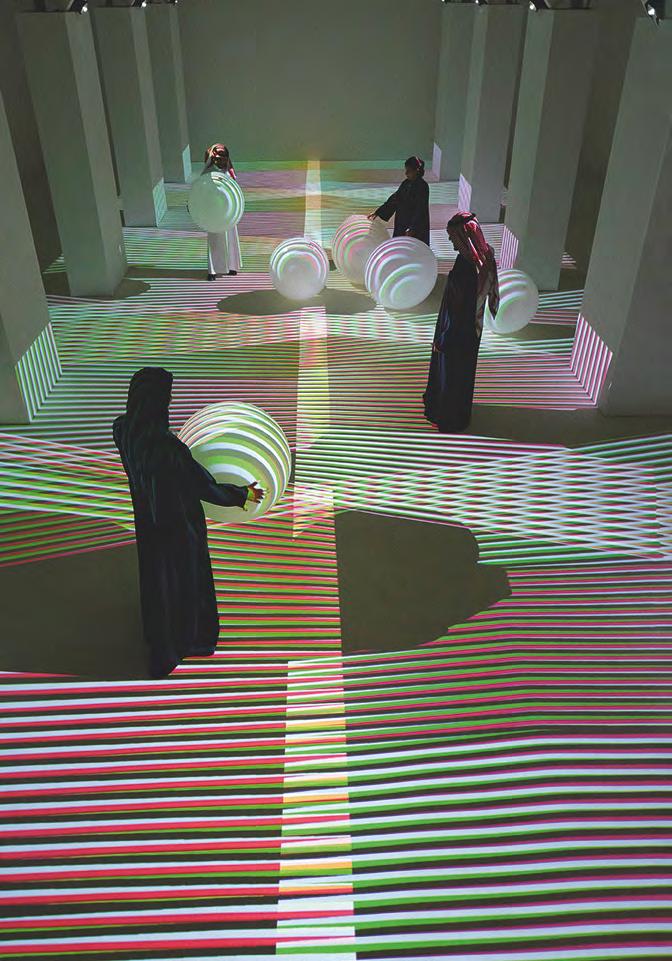
The fourth edition of Noor Riyadh, the annual citywide festival celebrating light and art, will take place from 28 November to 14 December, transforming Riyadh into a luminous gallery with over 60 light-based artworks by leading Saudi and international artists



Commissioned by RCRC and Riyadh Art


‘Noor Riyadh is not a mere festival; it’s a cultural odyssey that unfolds over four months, during which the city is transformed into a nocturnal playground for the imagination,’ said Forbes magazine, capturing the essence of the Noor Riyadh festival. The spectacular annual art festival was launched in Saudi in 2021 and transforms the city with stunning light installations from both local and international artists, turning Riyadh into an open-air gallery with a rich public programme and exhibitions. Featuring artworks from 35 countries, which creates a dialogue between traditional and contemporary perspectives, the festival’s lineup is a testament to its diversity, including a range of exhibits that cater to various artistic tastes, as well as site-specific commissions by 35 Saudi artists, including Muhannad Shono and Ahaad Alamoodi. These contributions enhance Riyadh’s cultural landscape, making the event genuinely inclusive. Notable among these are Janet Echelman’s dynamic visual spectacle, Diana Thater and SUPERFLEX’s monumental video art projections, and Carsten Höller’s exploration of time and space through light.
In just its third year, the festival etched its name as the world’s largest light art festival, earning a place in the prestigious Guinness World Records (there are now 14 in total). Notably, Studio Drift’s Desert Swarm set a new record for ‘the largest drone/multirotor bird swarm’, adding to its global recognition and prestige. The fourth edition of Noor Riyadh will return to Riyadh on 28 November, running for 17 days until 14 December. This year’s theme is ‘Light Years Apart’.
Celebrating the event, Assouline’s new tome, Noor Riyadh: A New Visual Culture, takes readers on a visual journey through the festival’s breathtaking displays with diverse images that reflect the festival’s vibrant energy and the transformative power of light. It is a tribute to the power of art to unite and inspire while telling a story of innovation, and the beauty of light art.
From AED420; eu.assouline.com

Skiing in Lebanon; a posh new British country escape; a Greek Odyssey: Athens, Hydra and the Peloponnese; cultural Dubai

